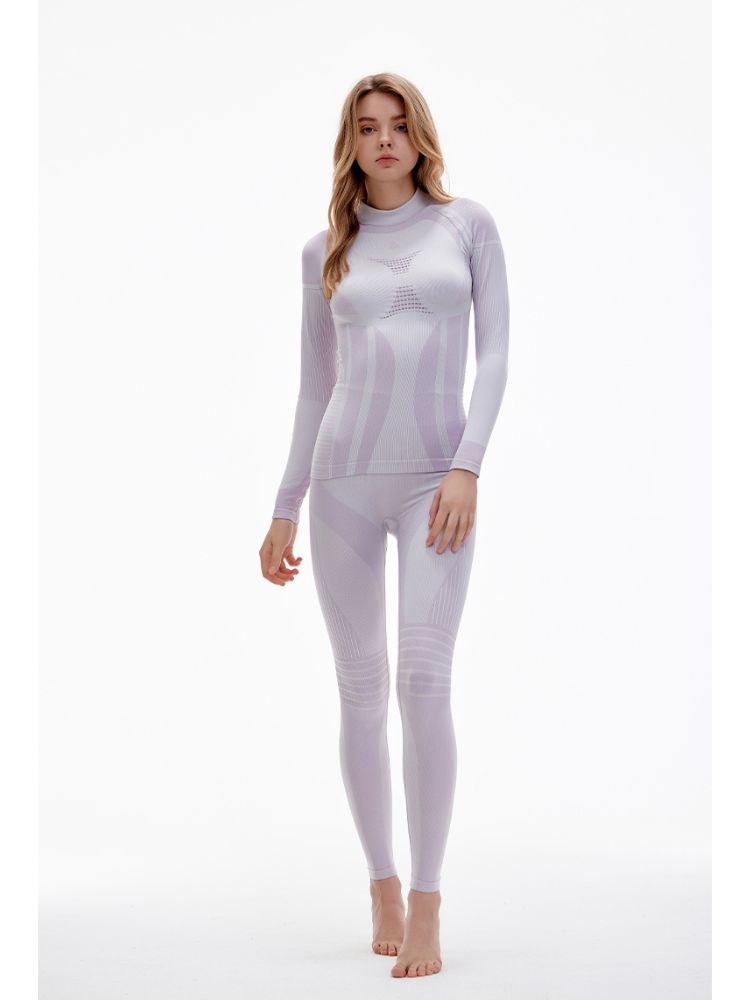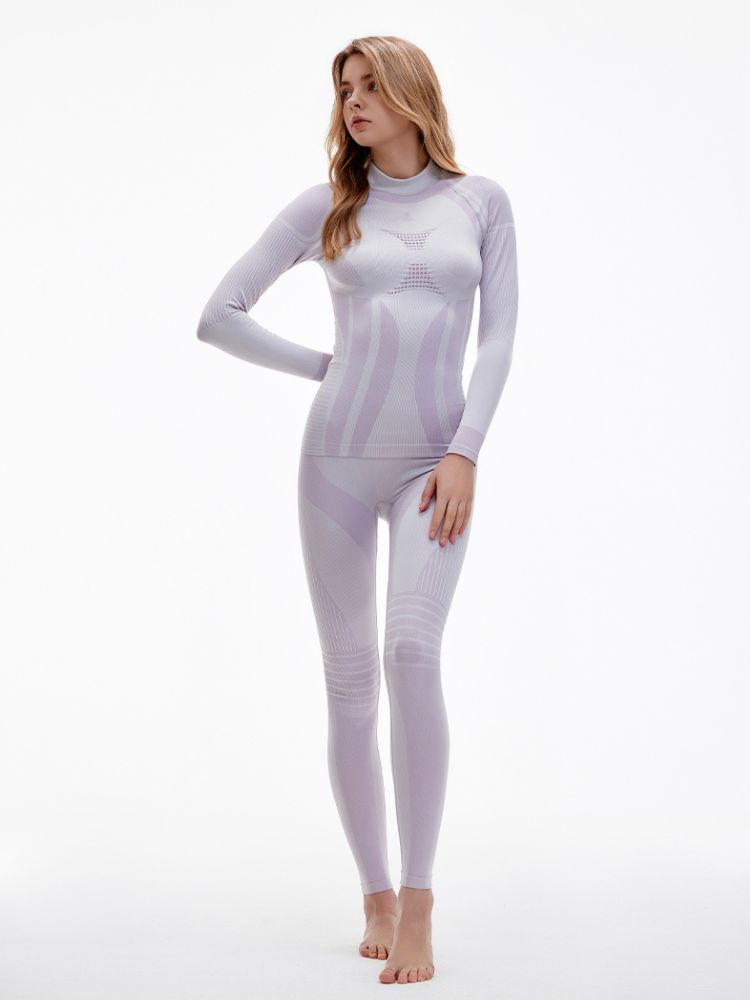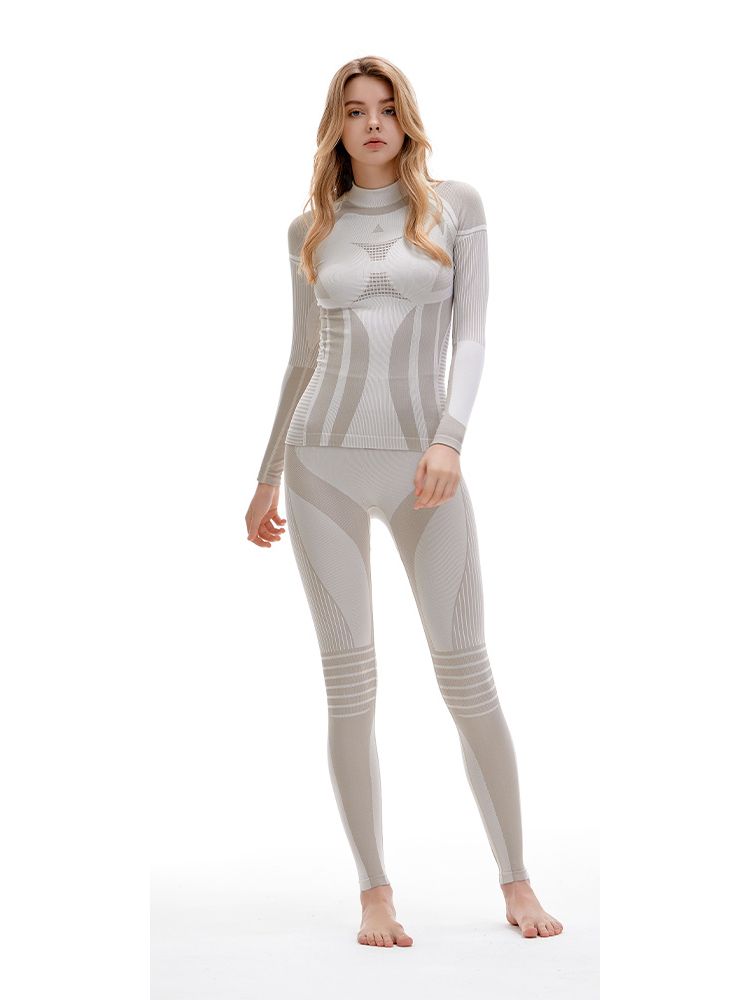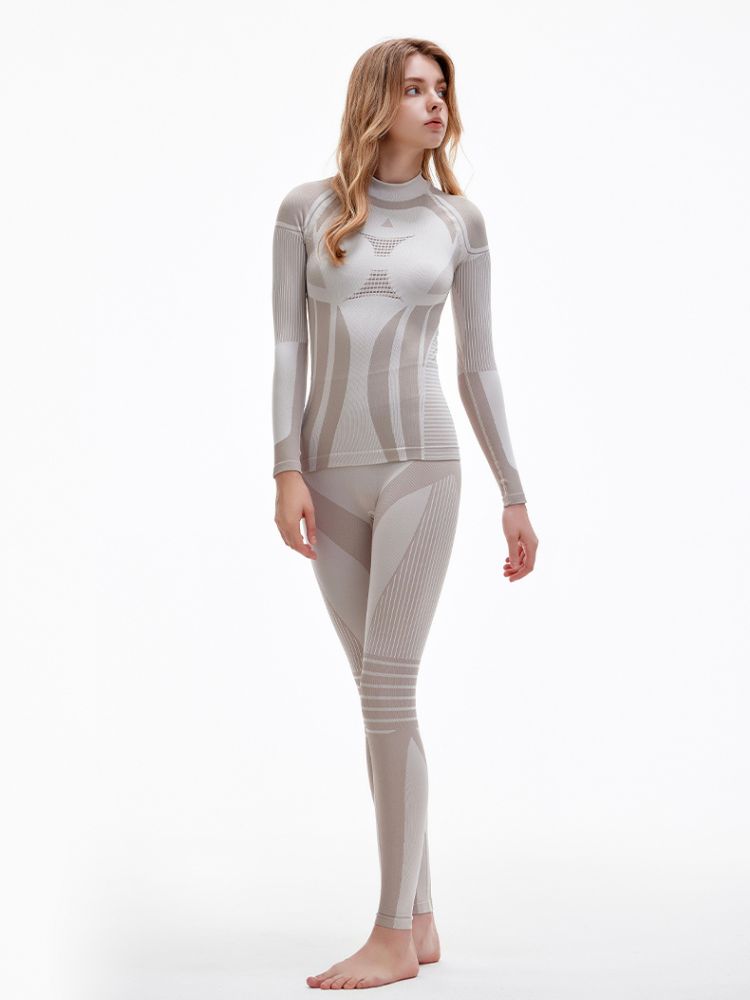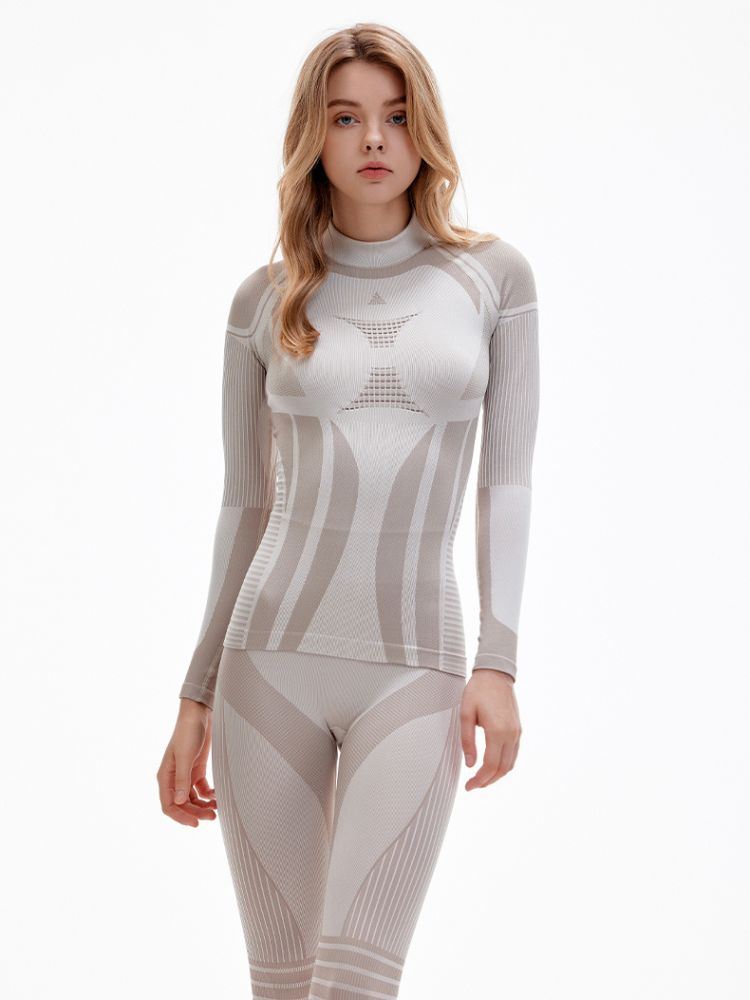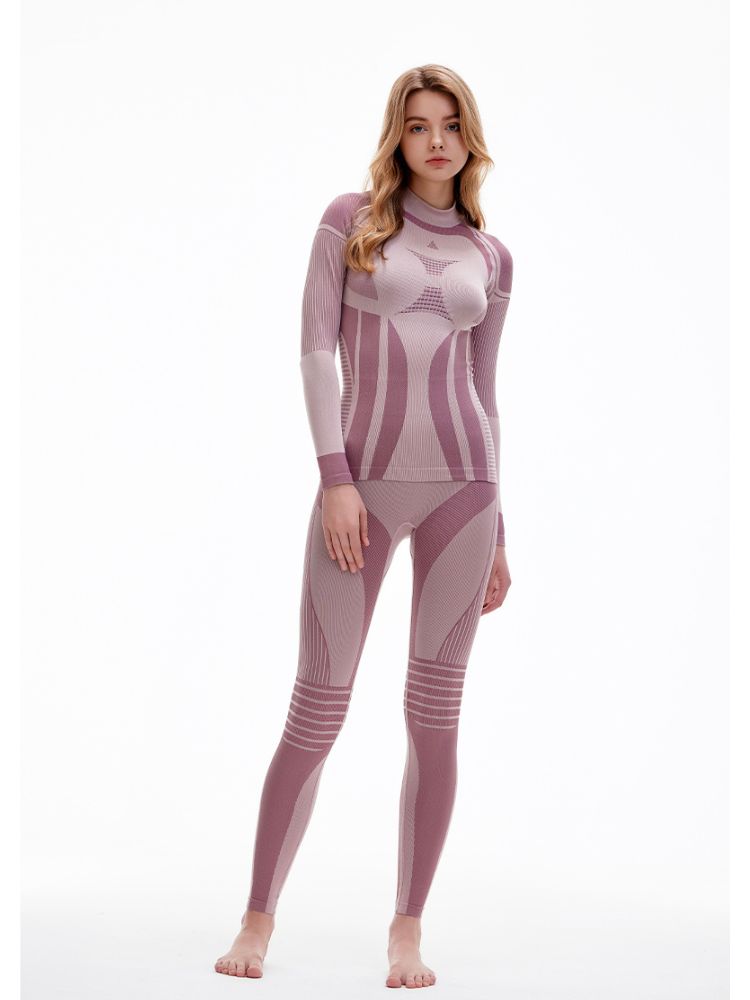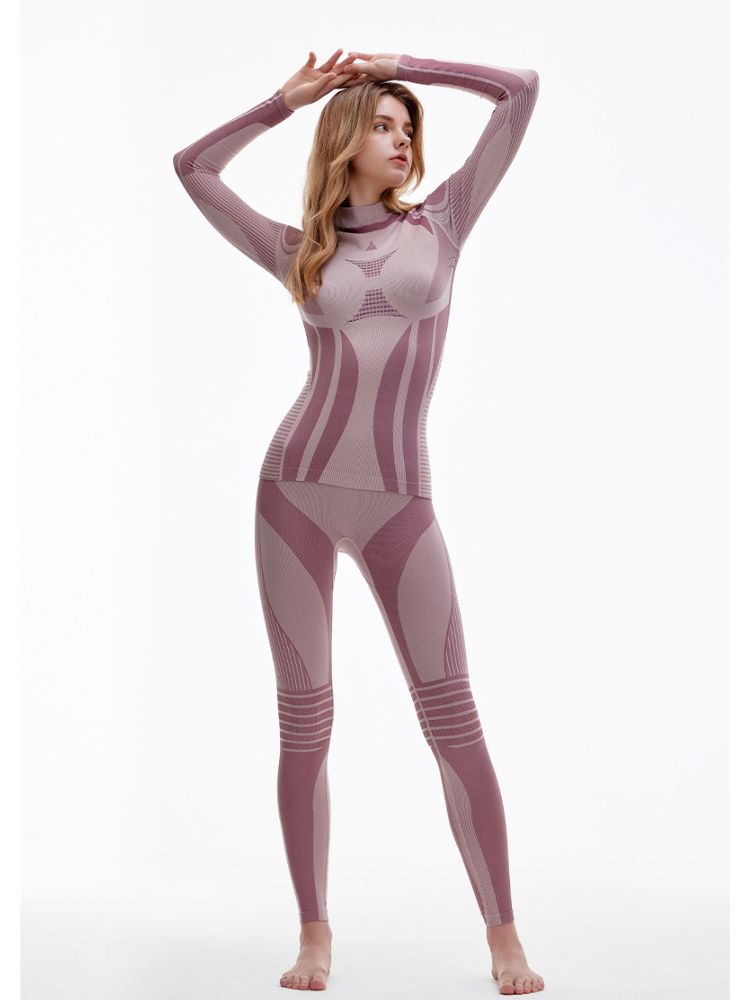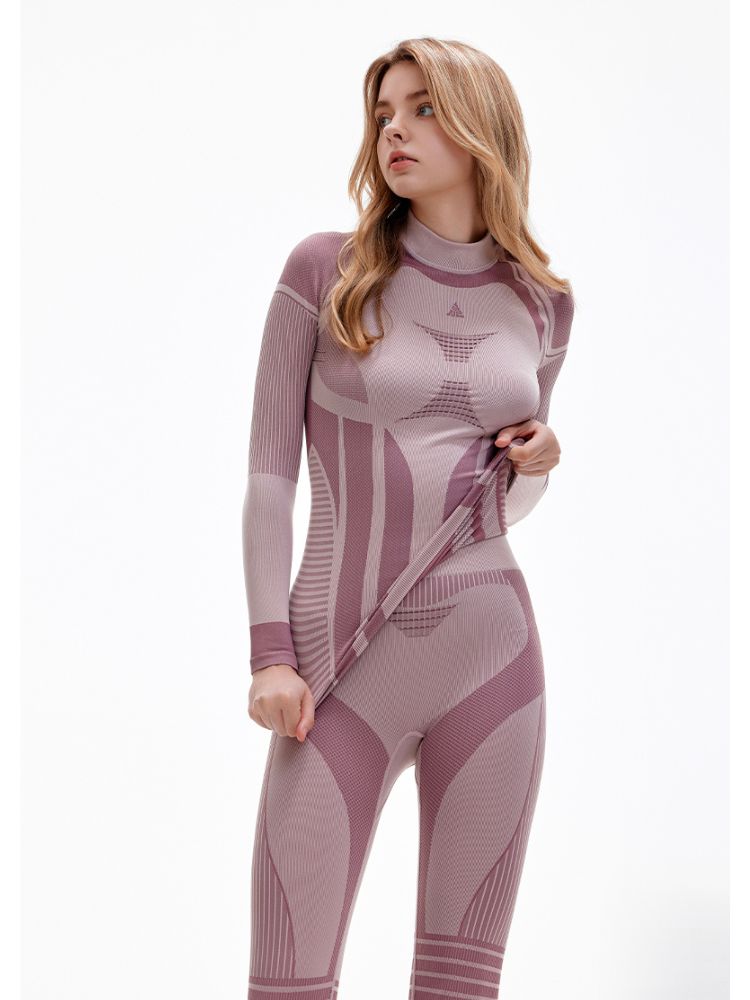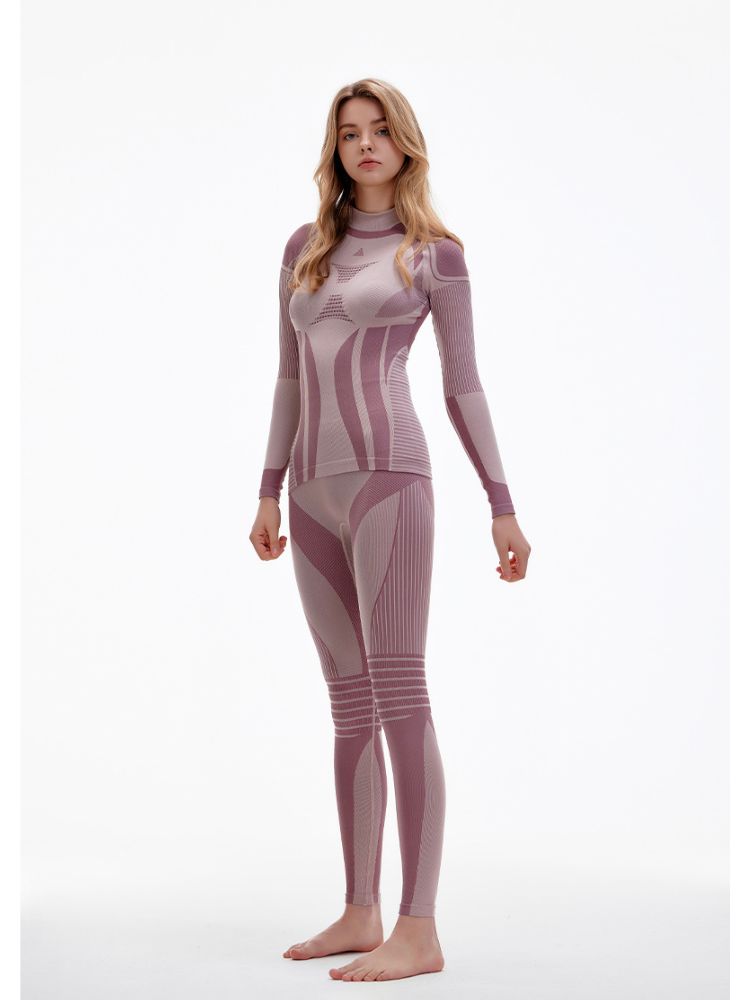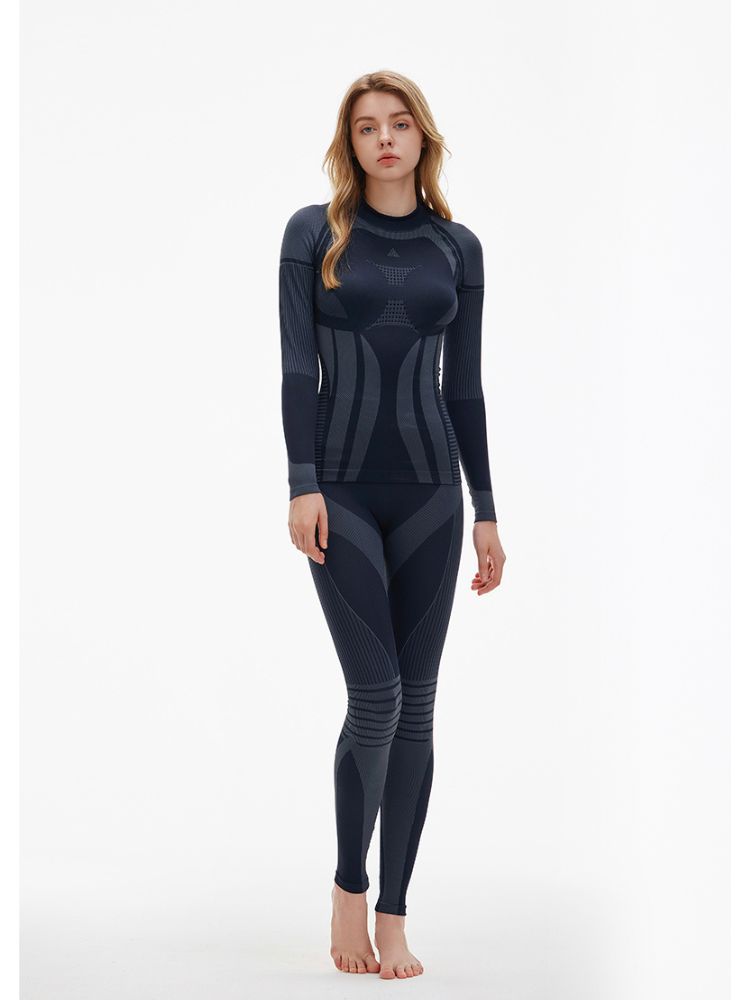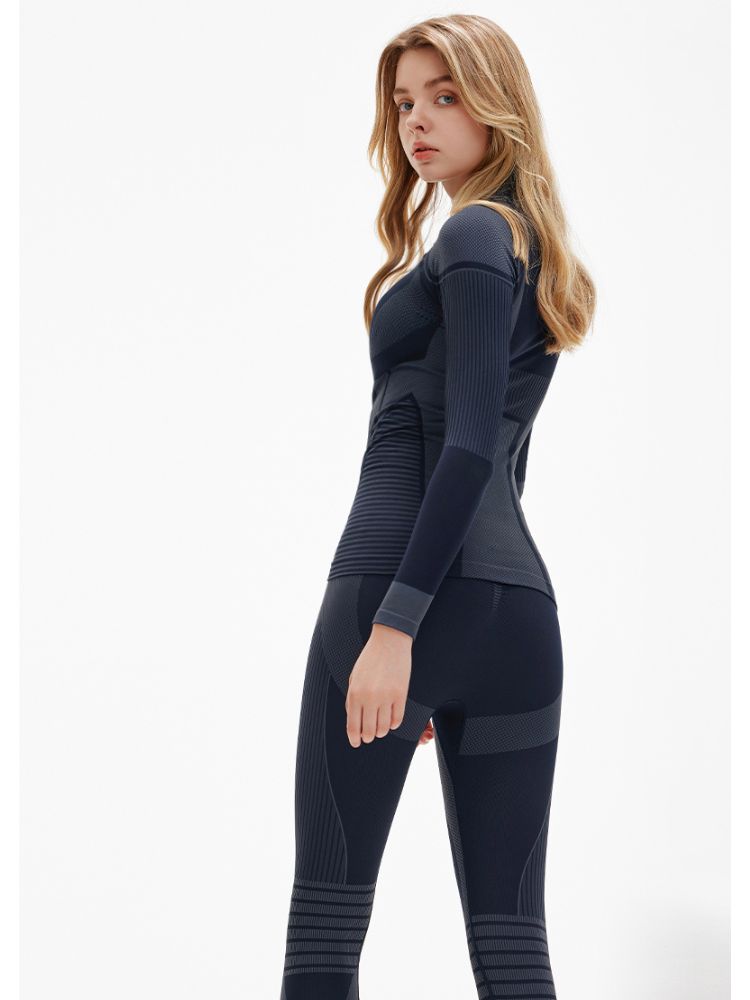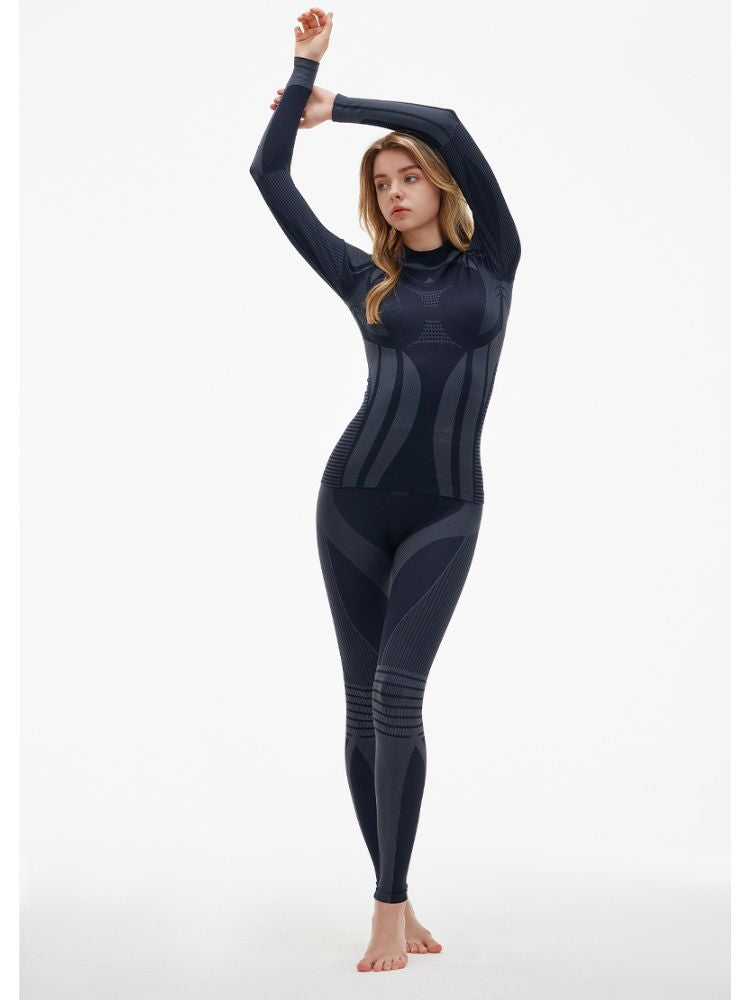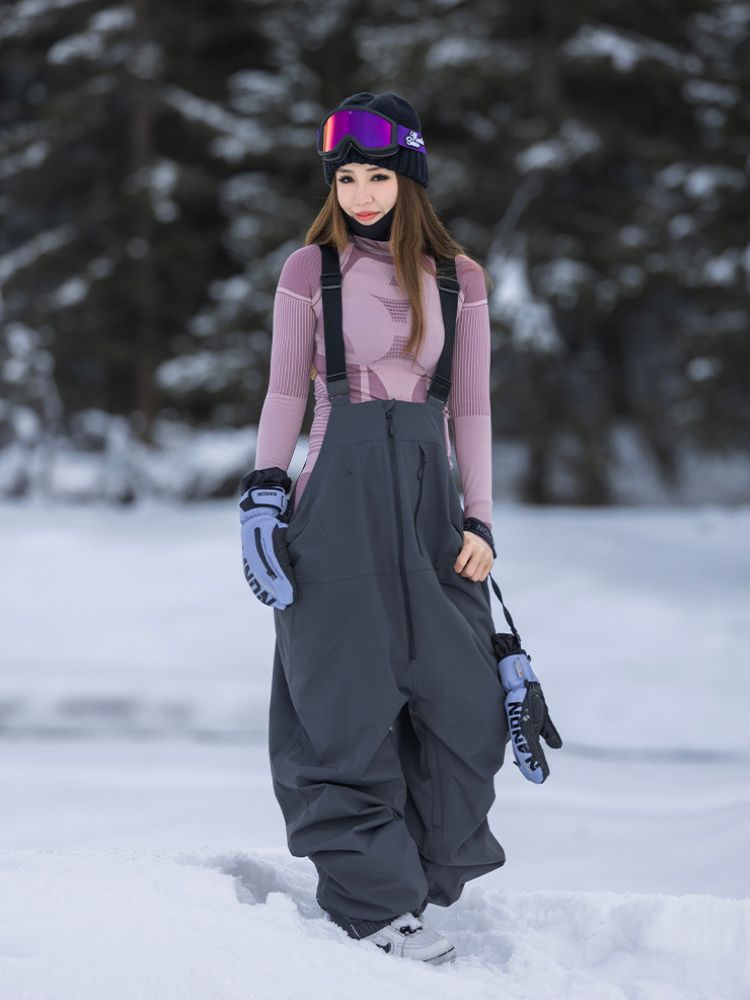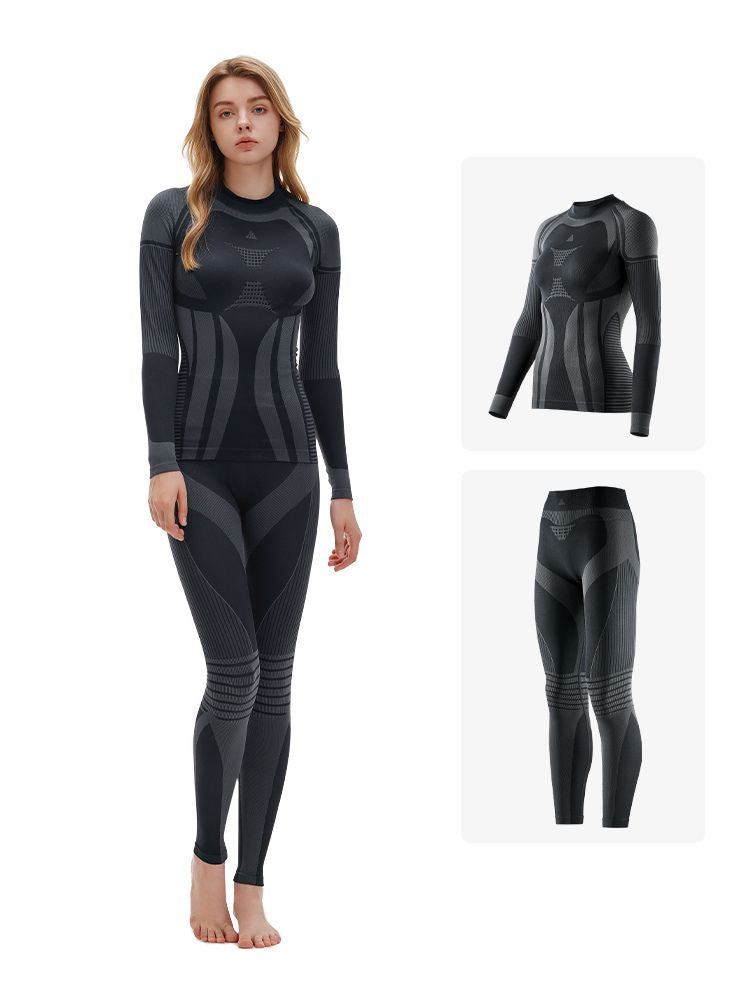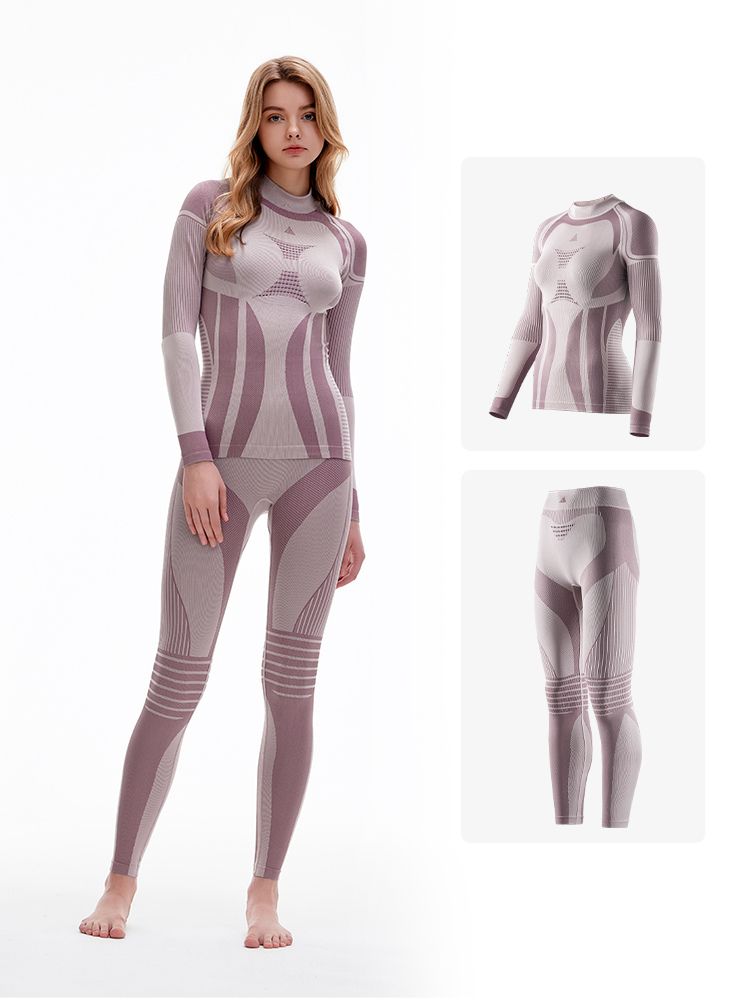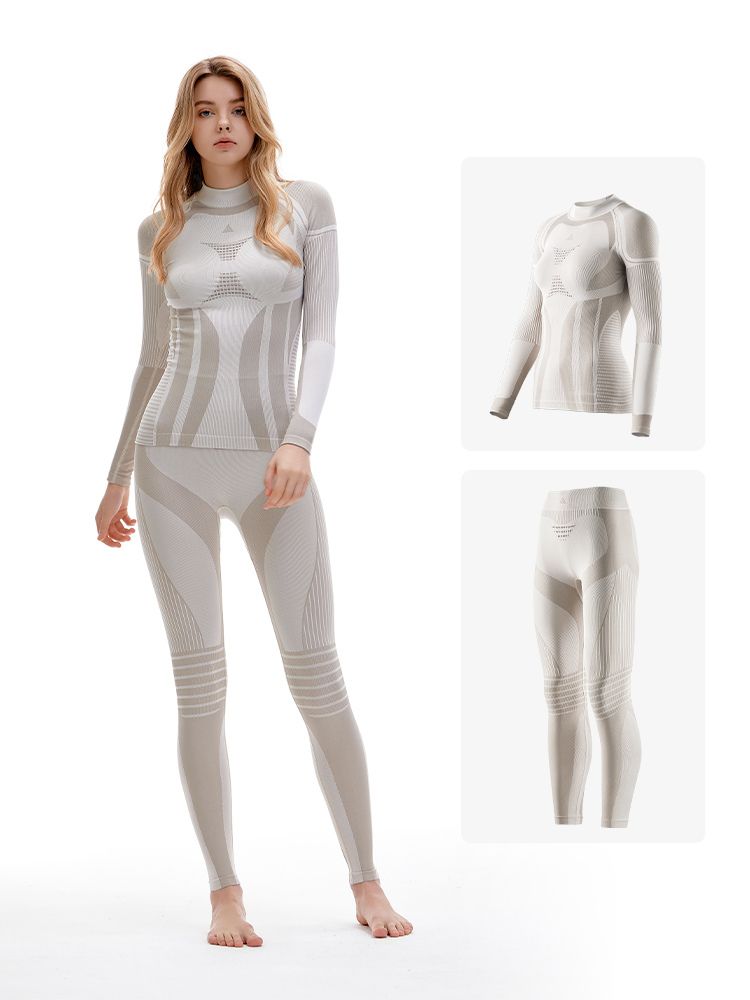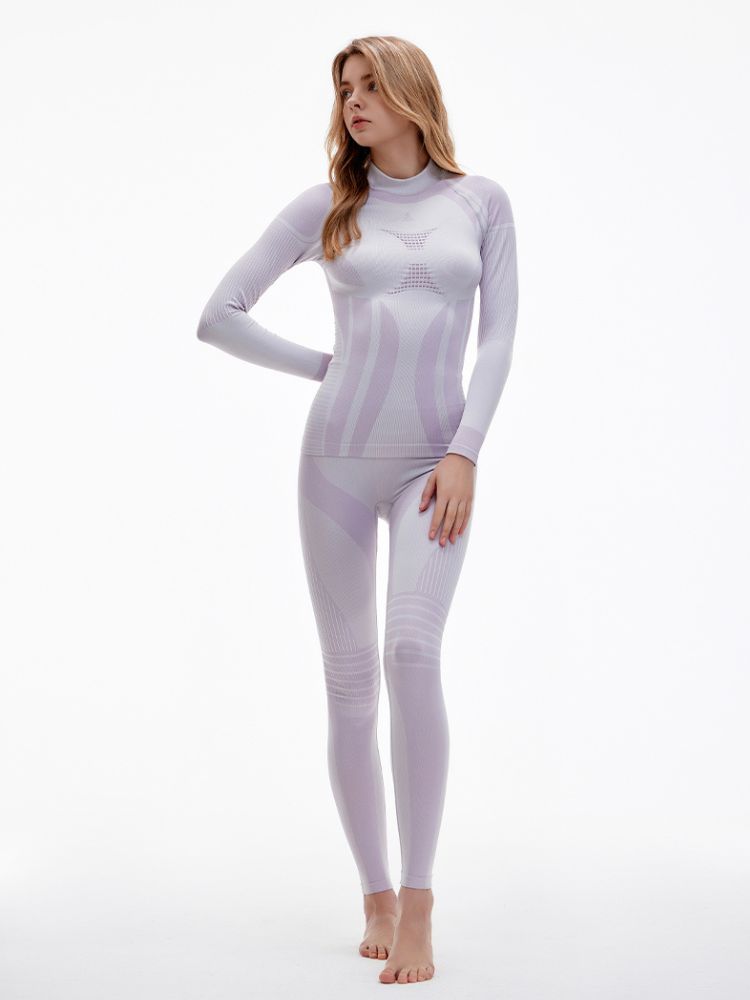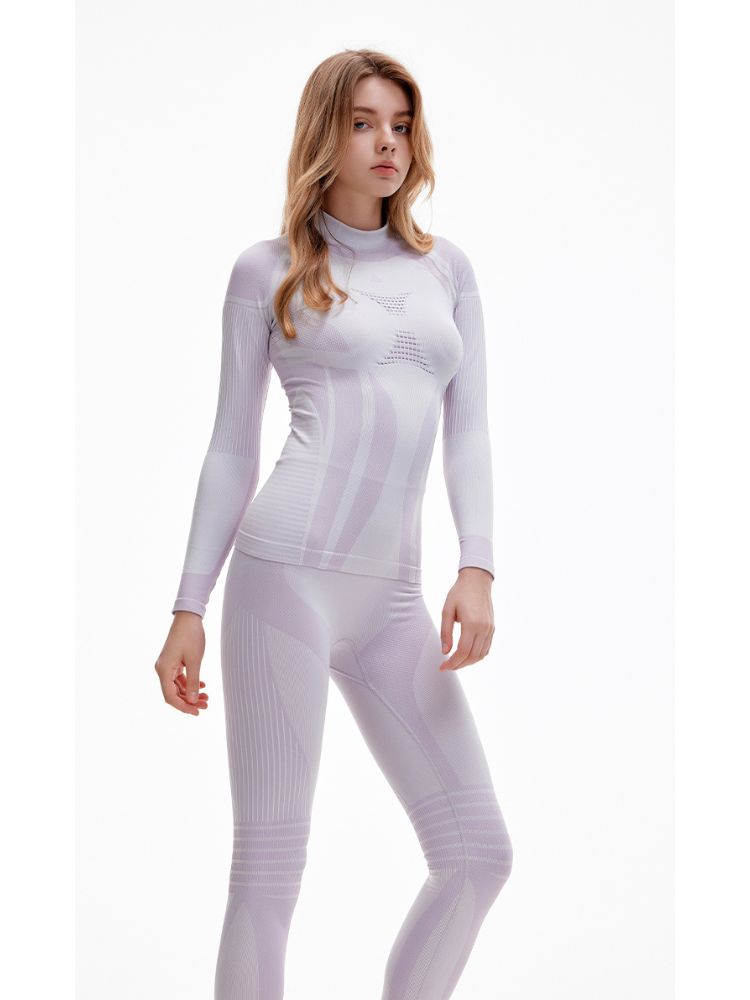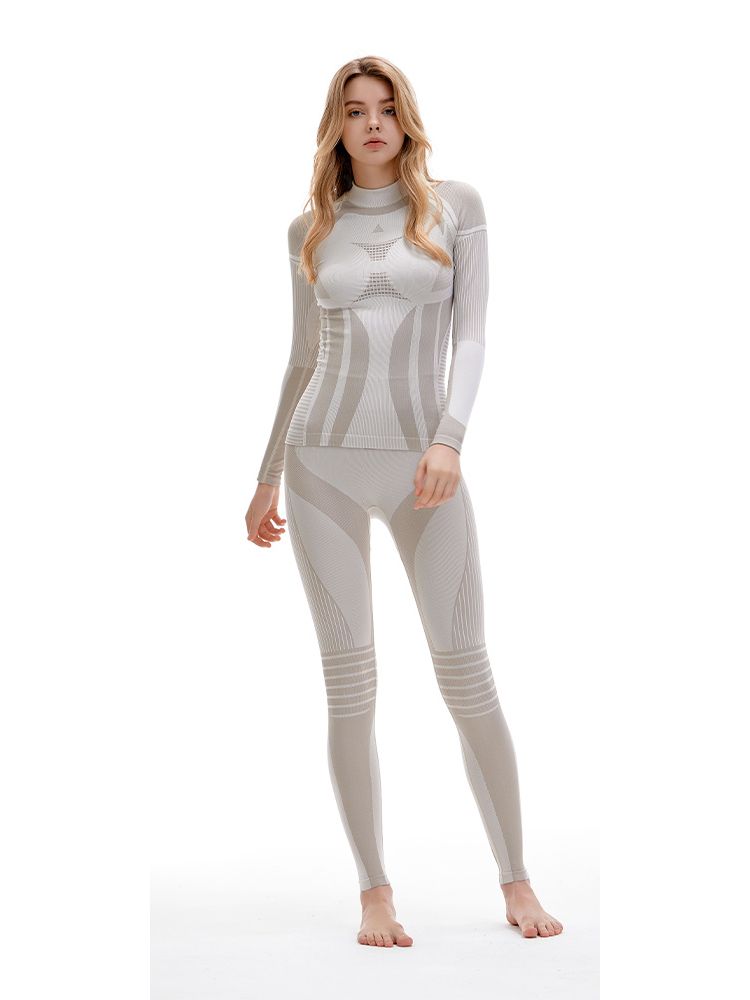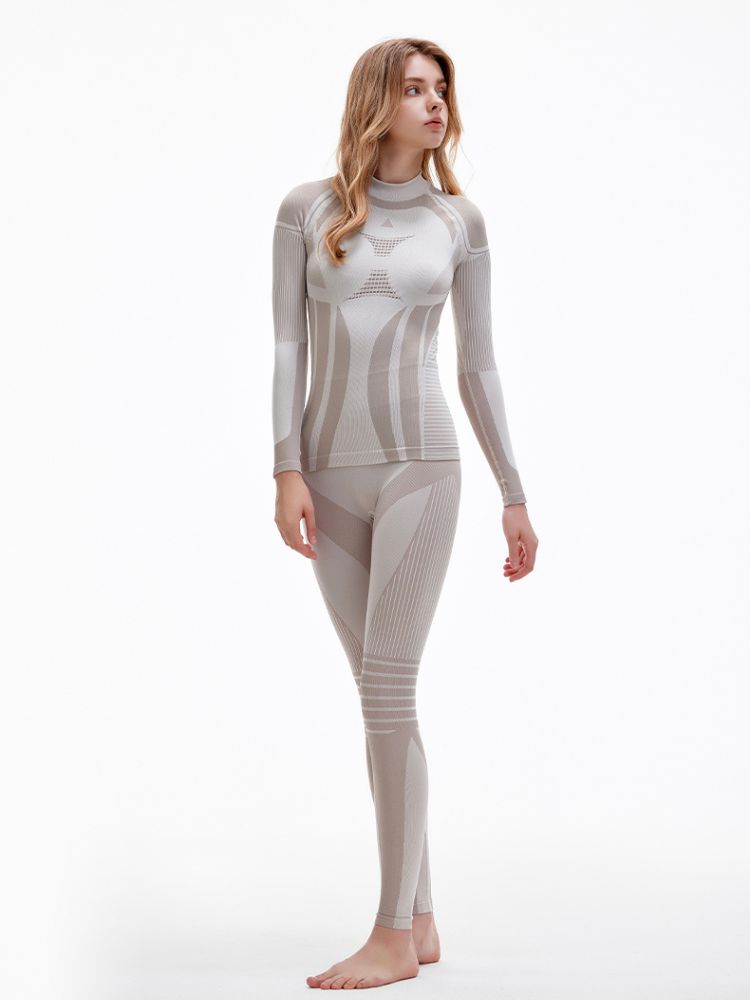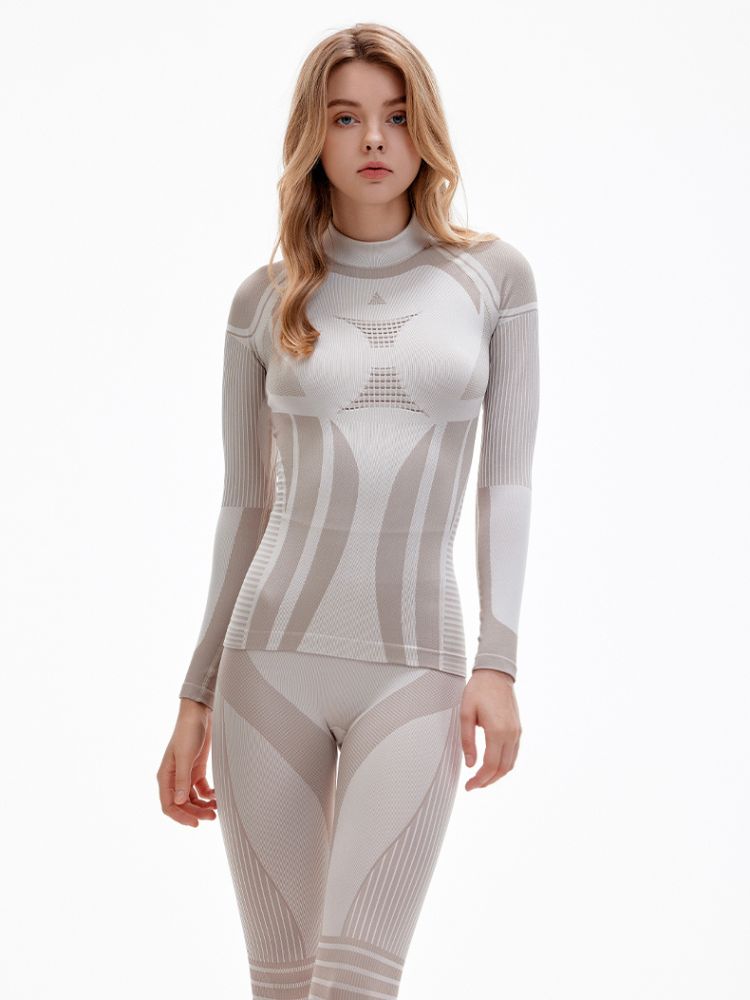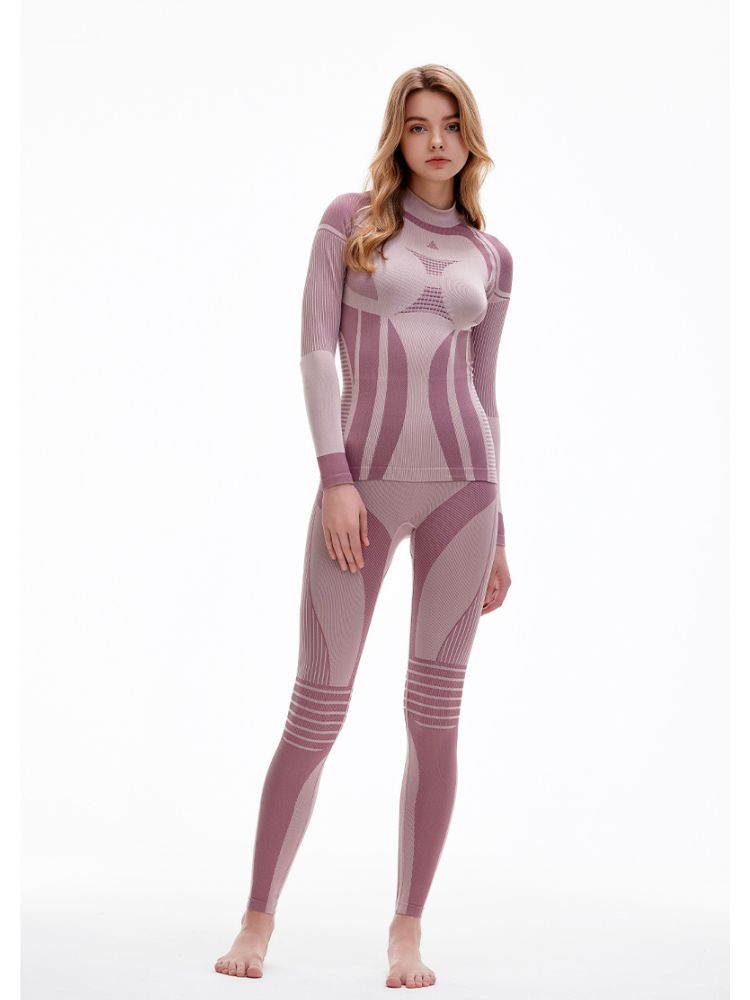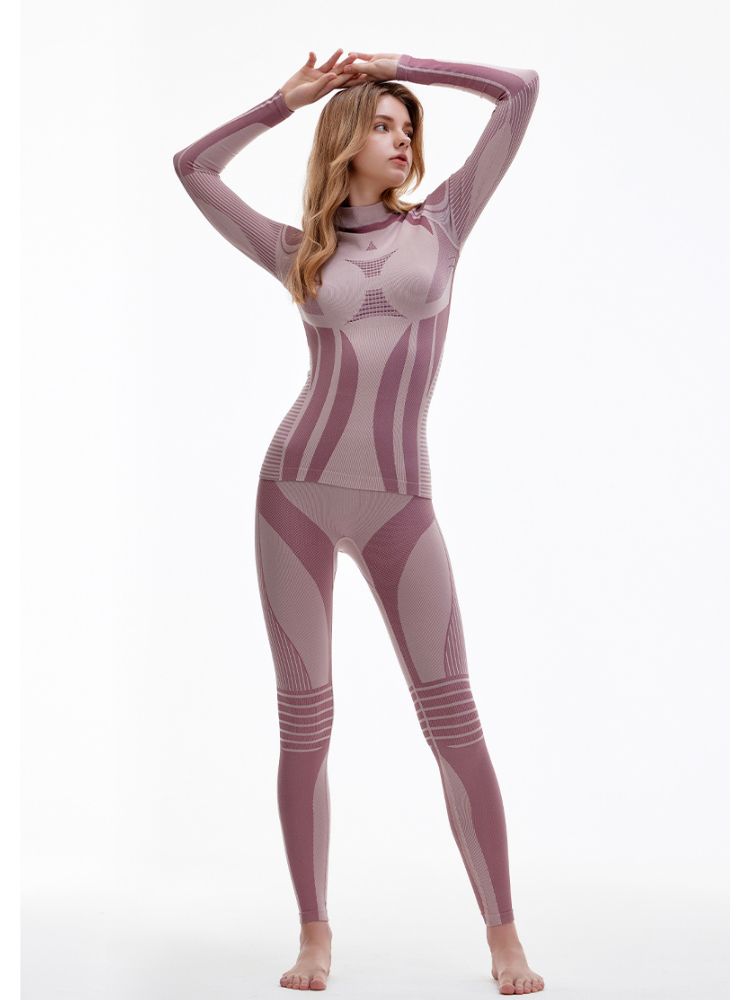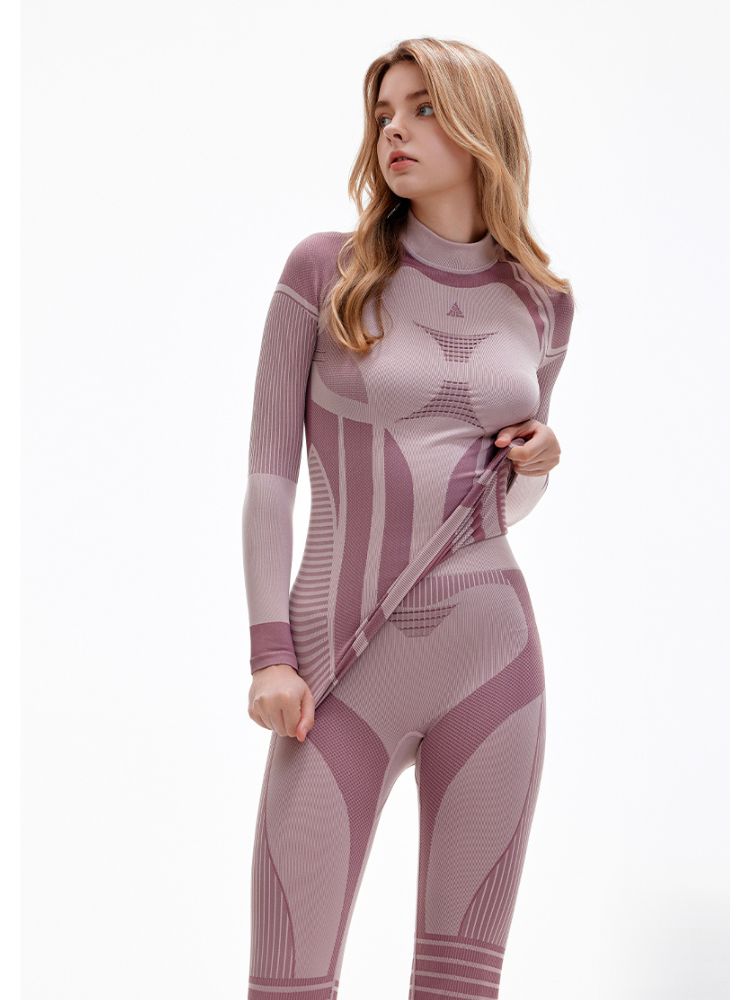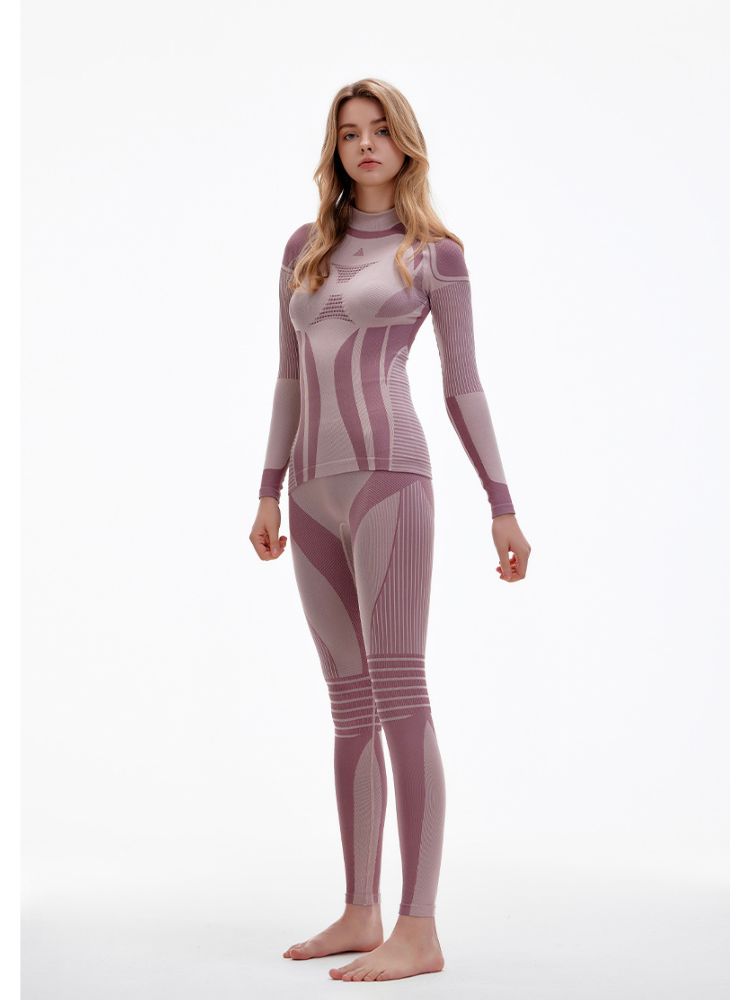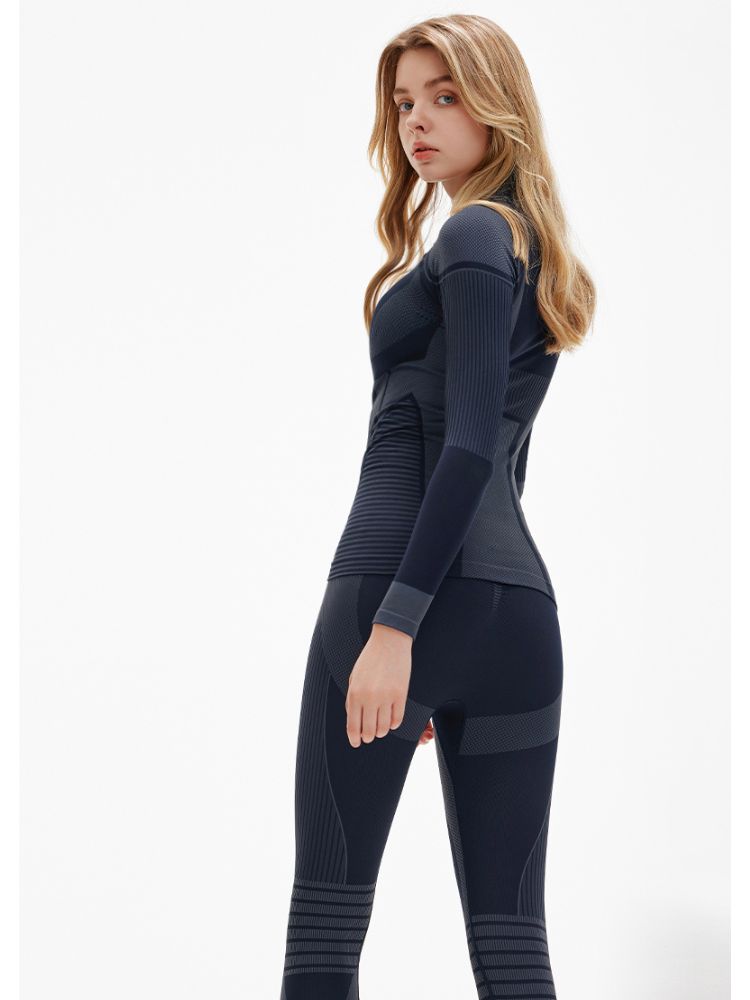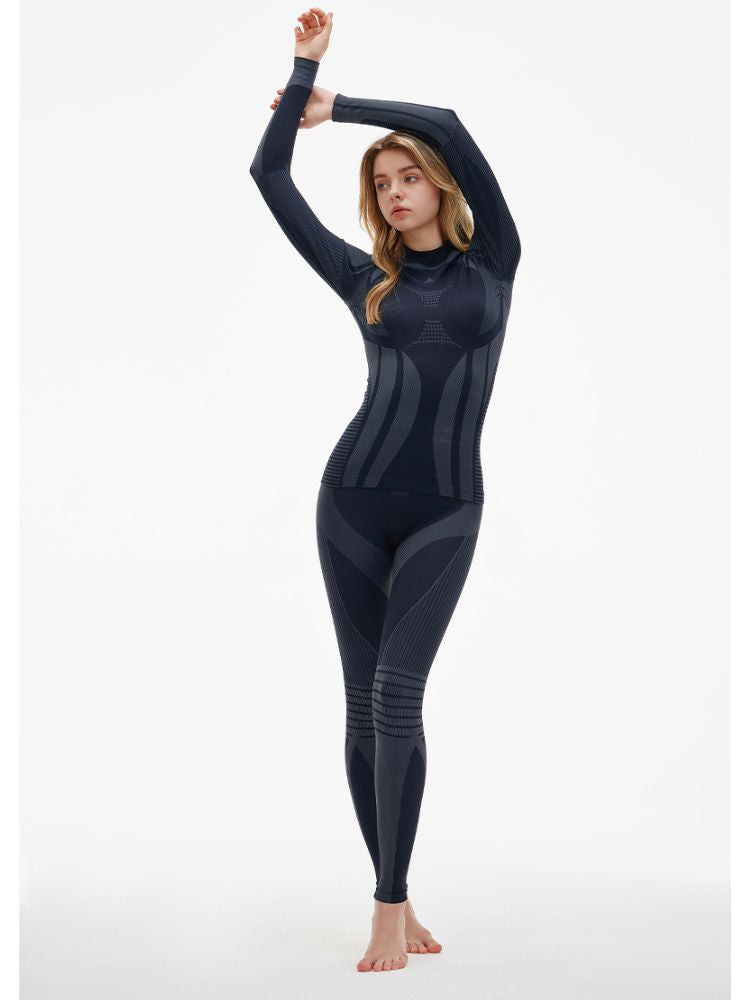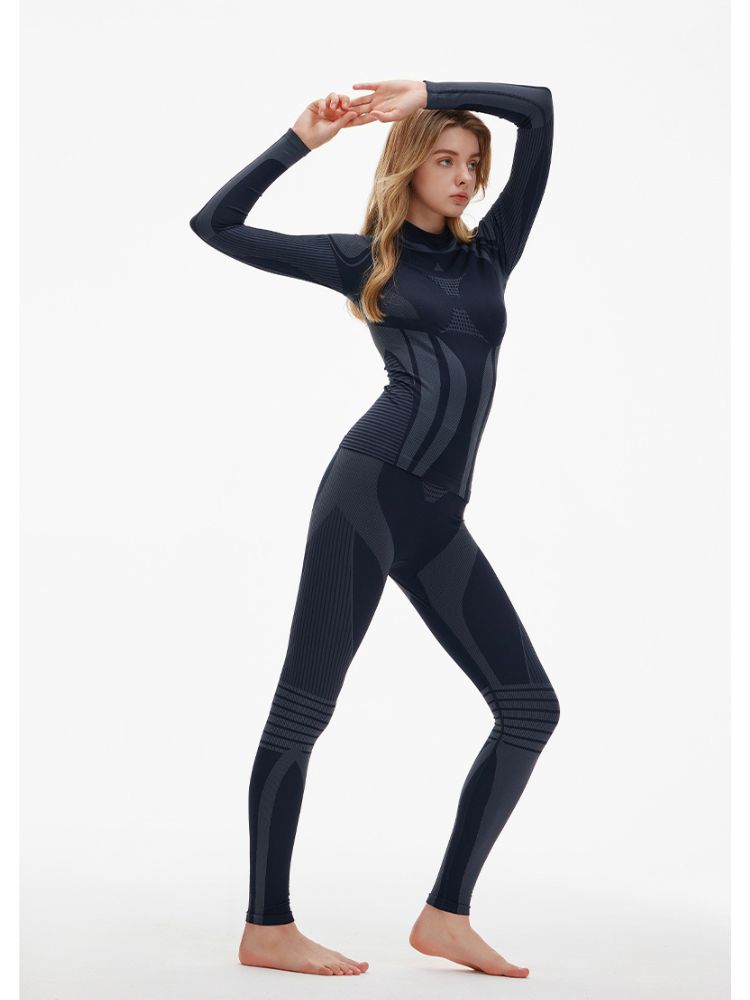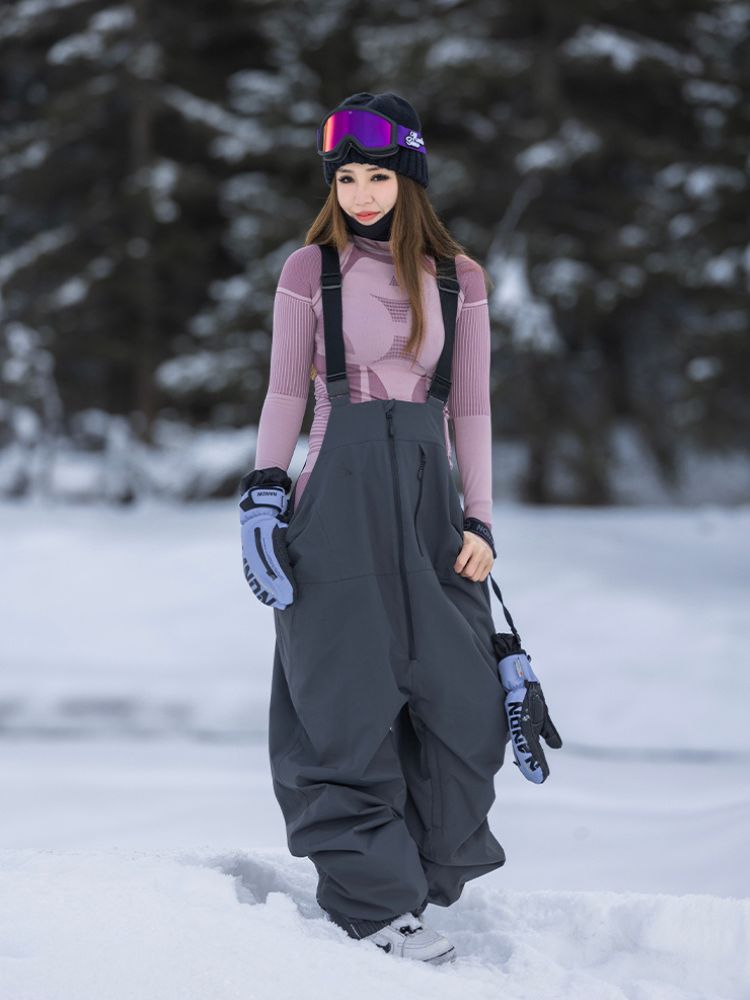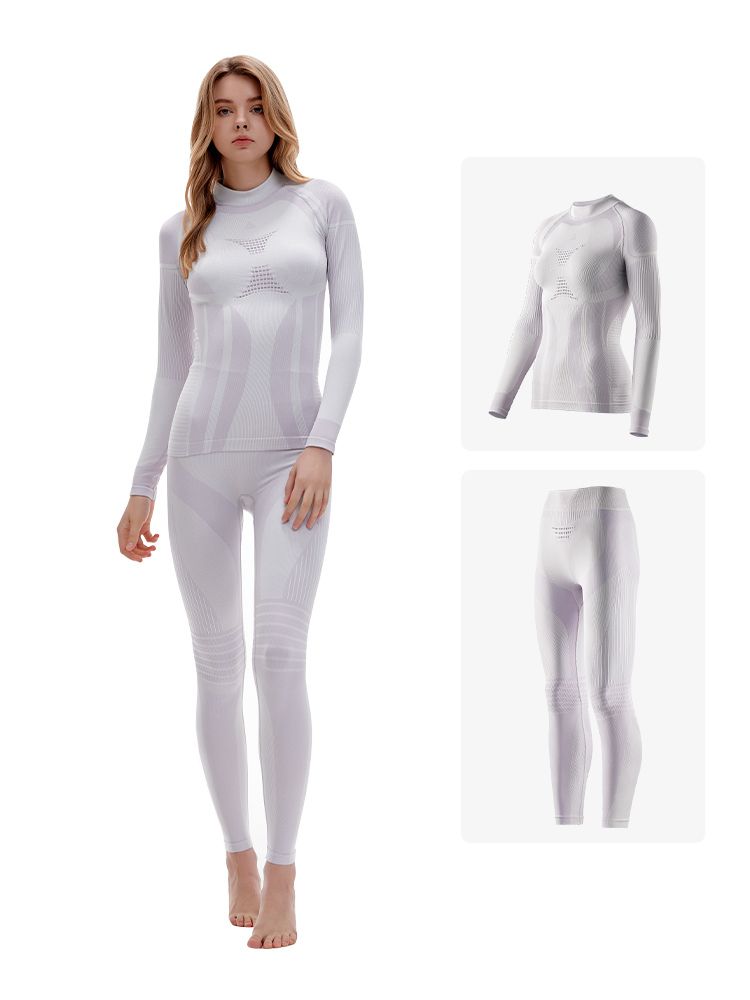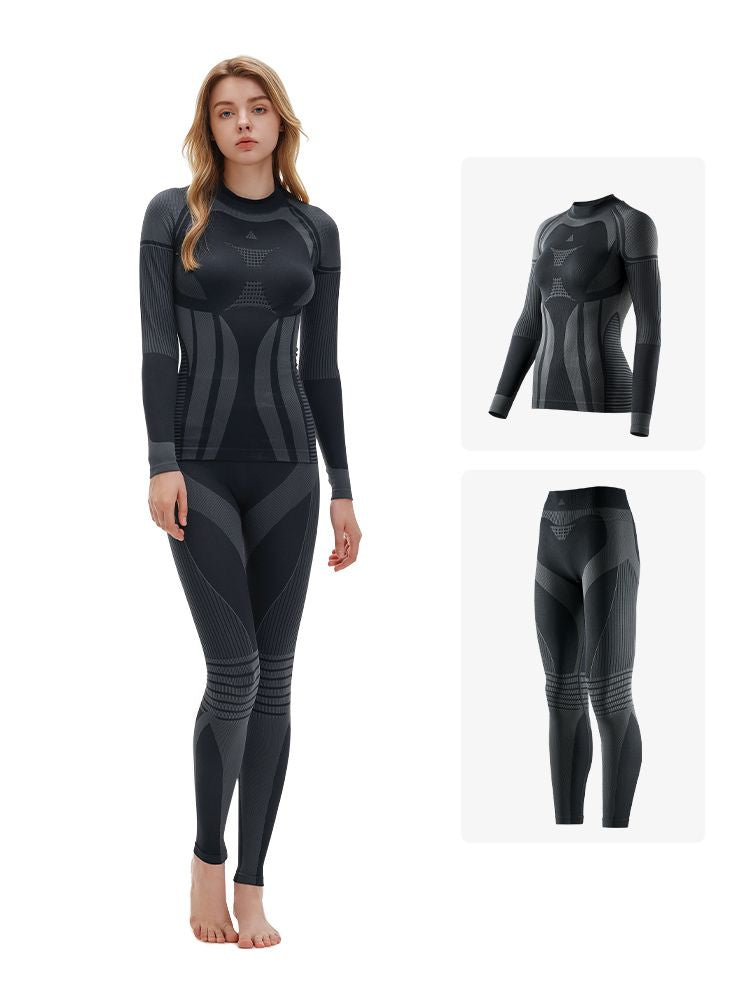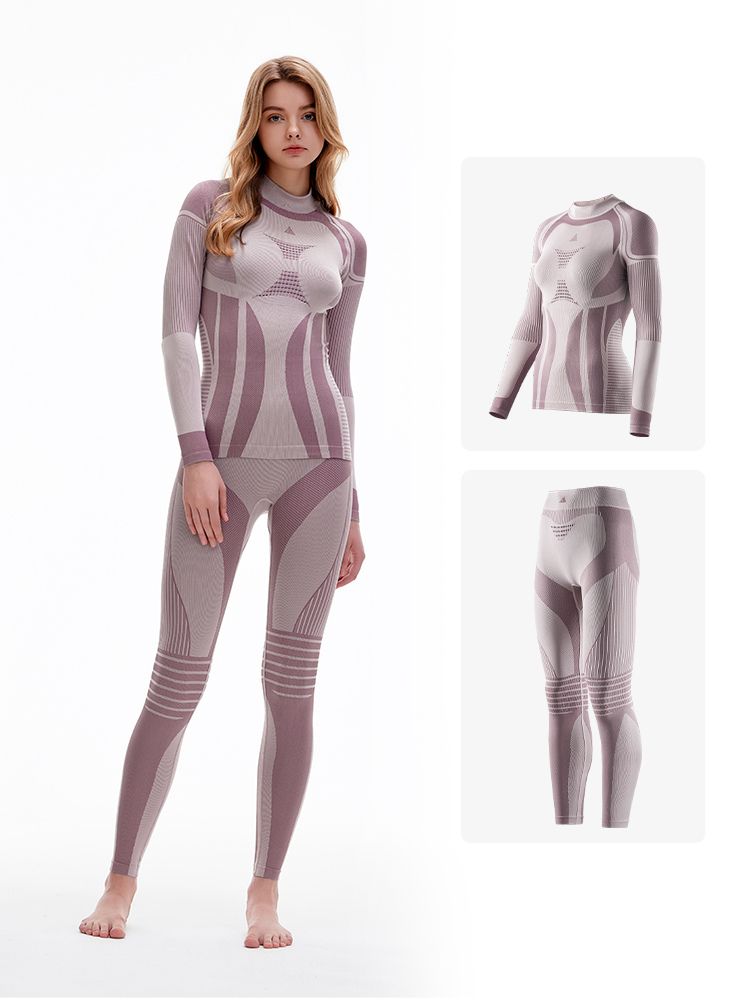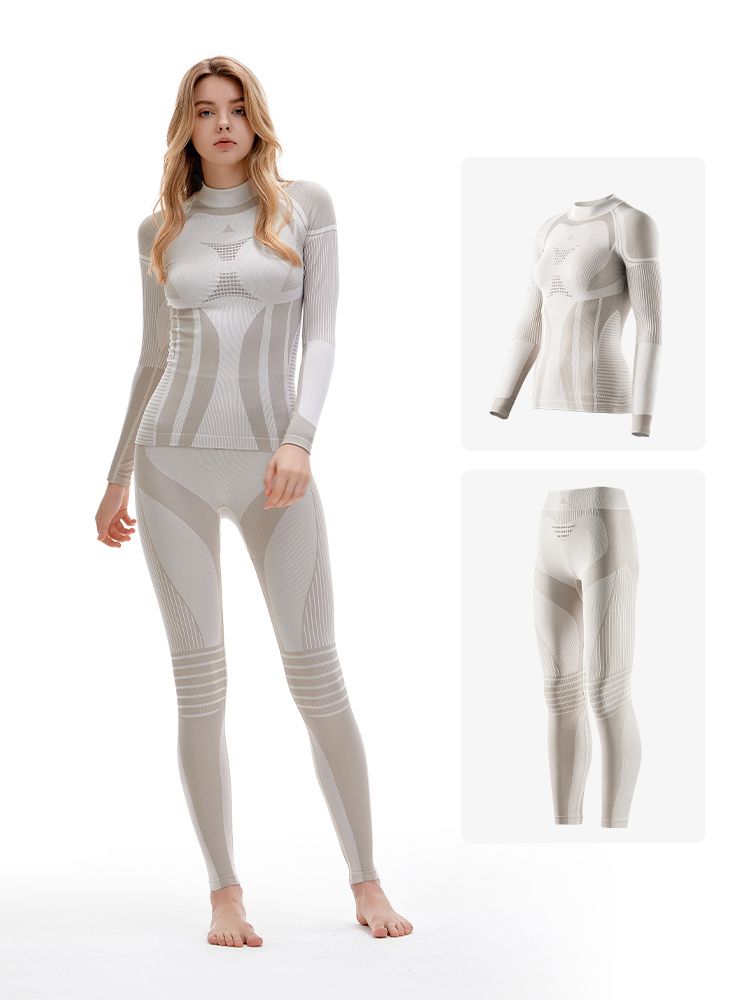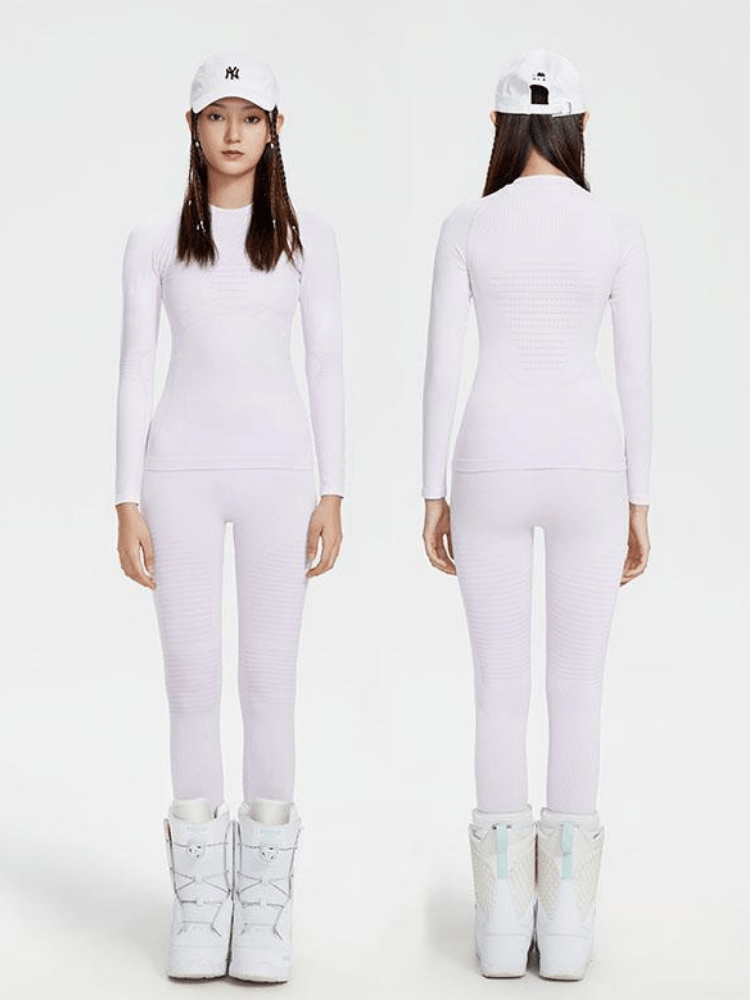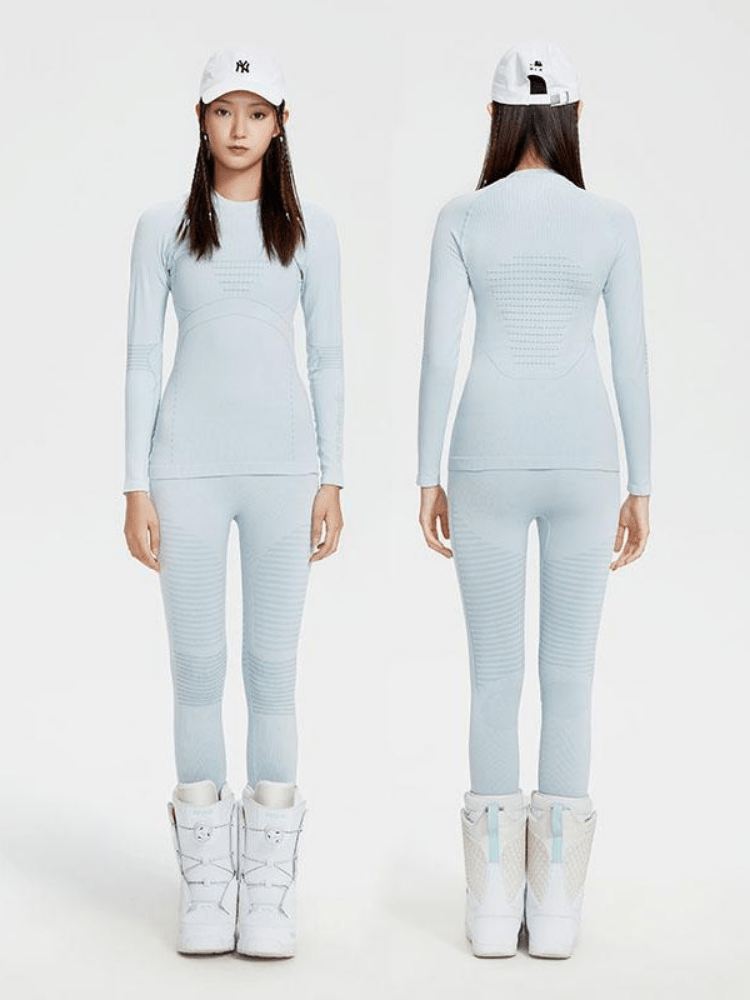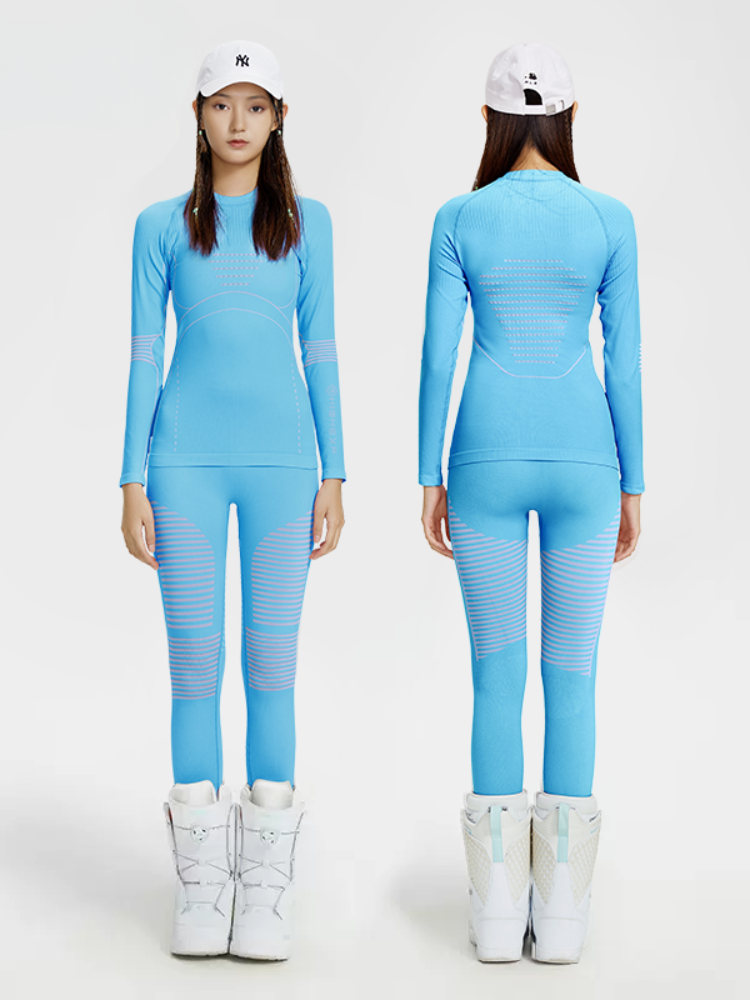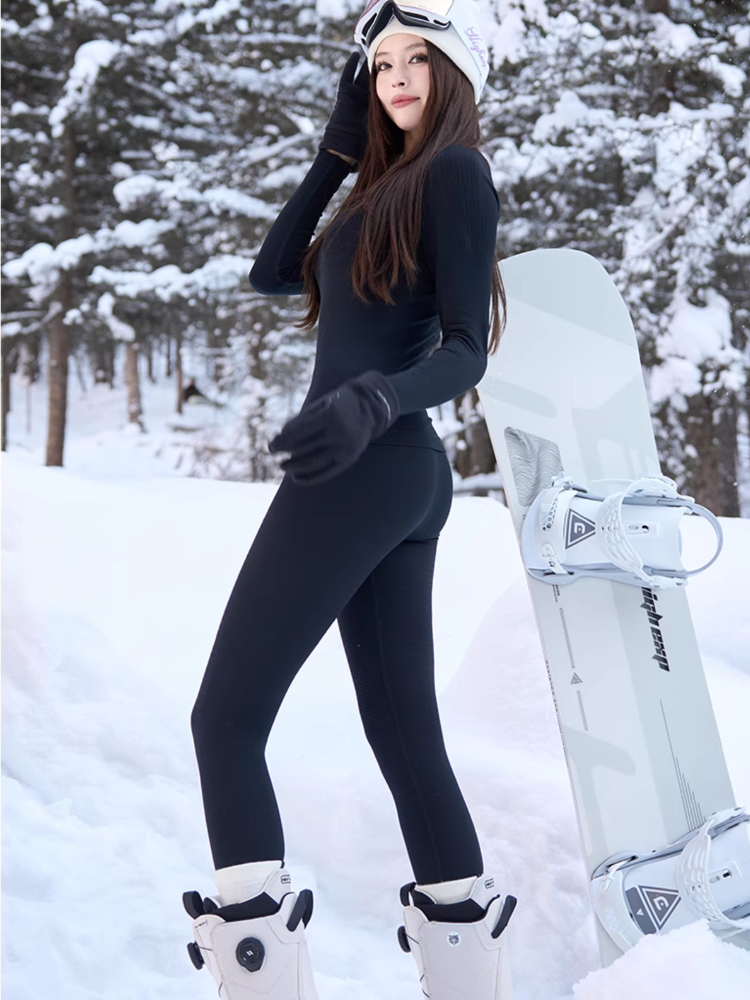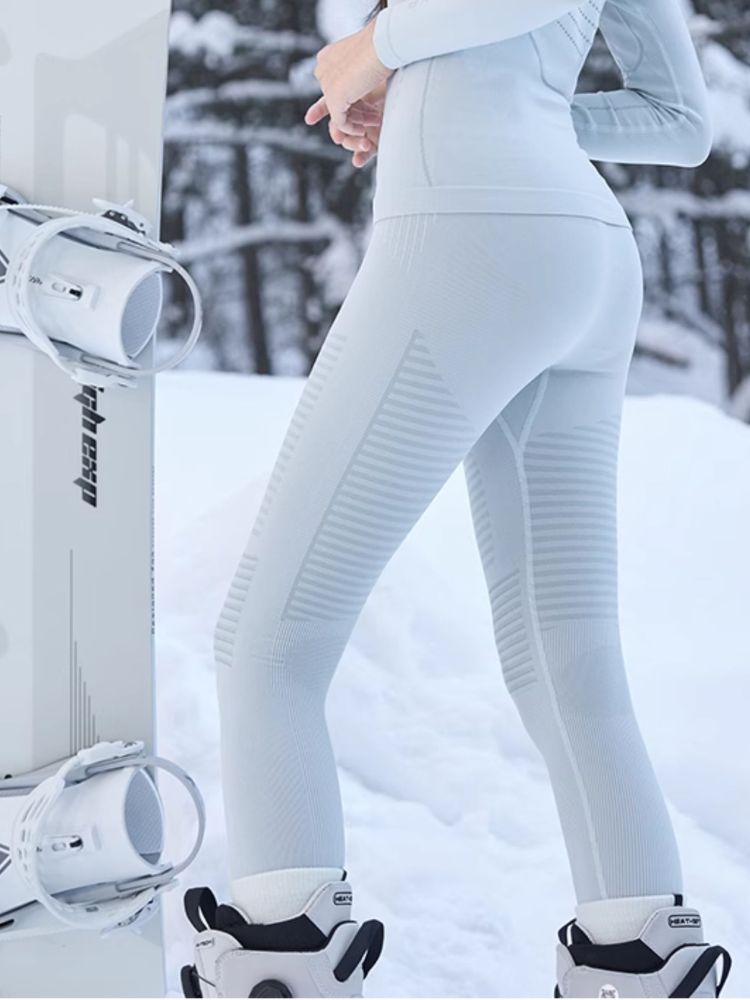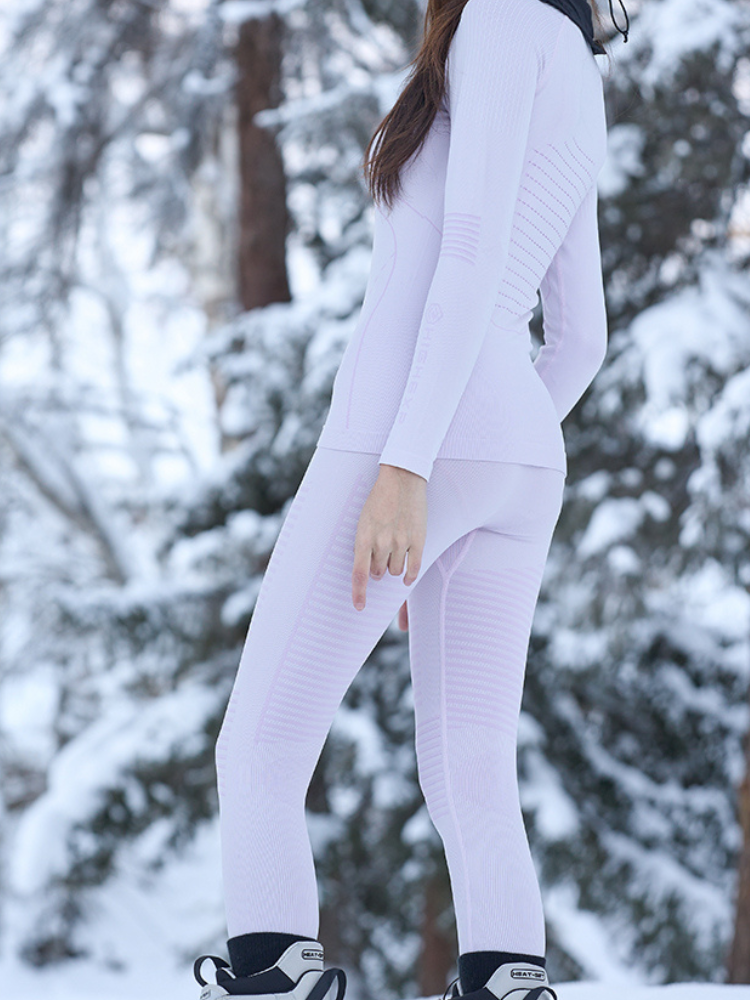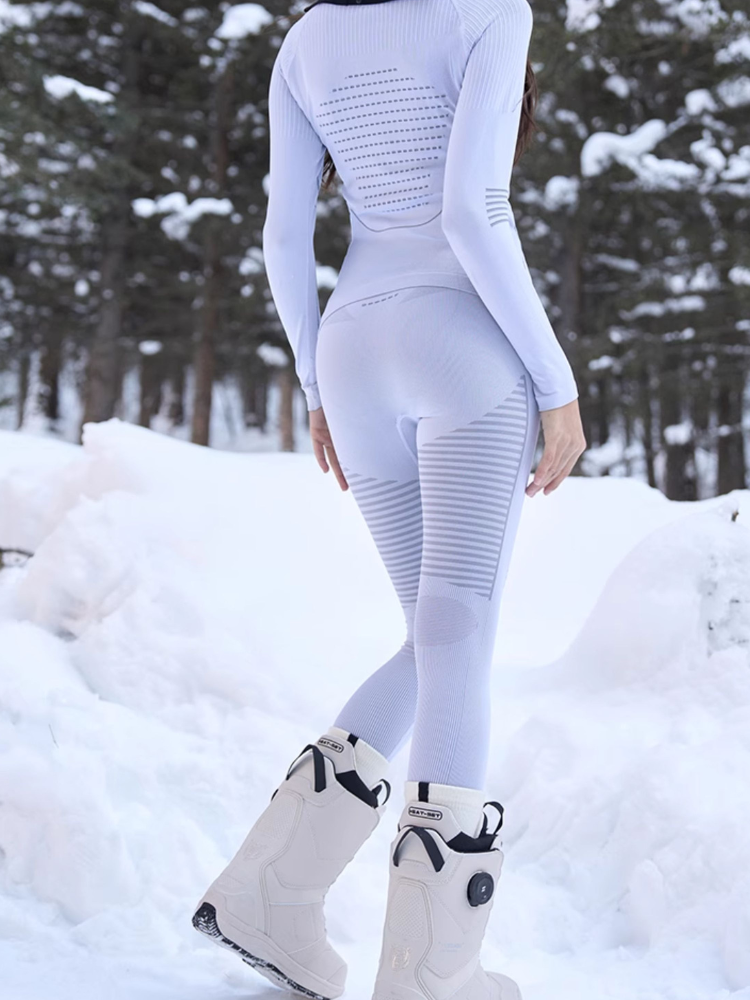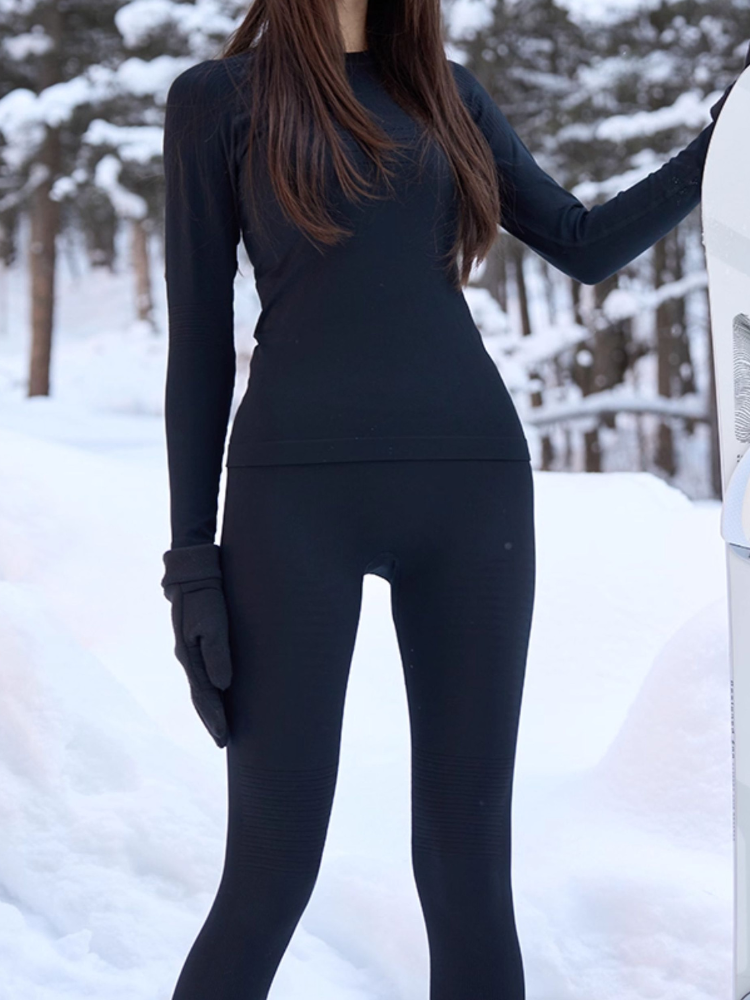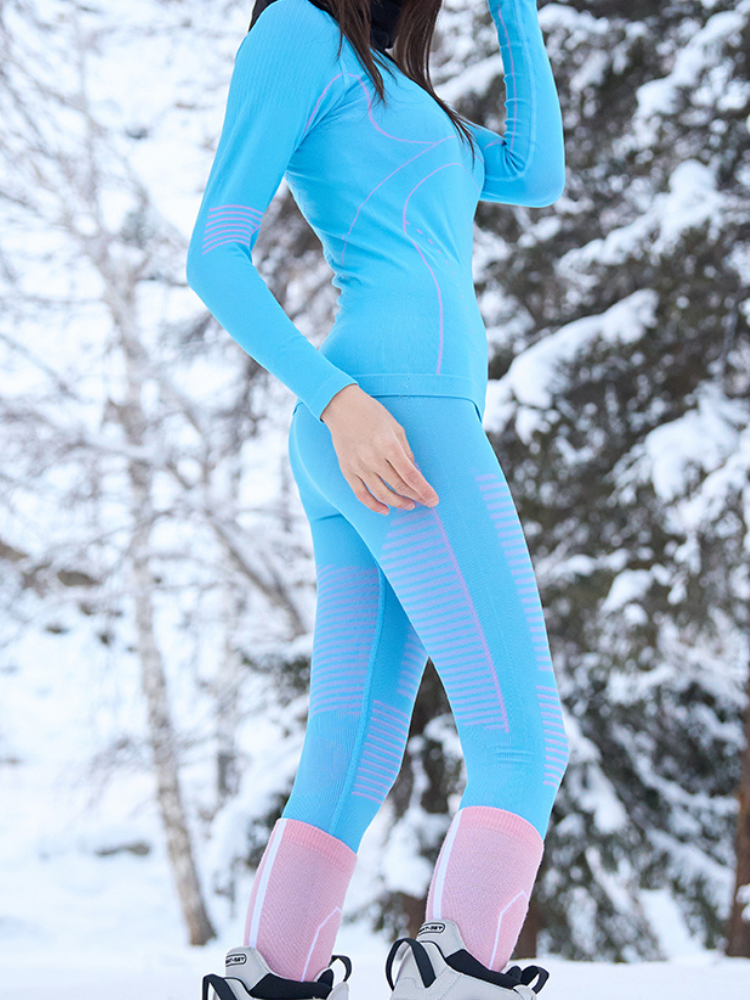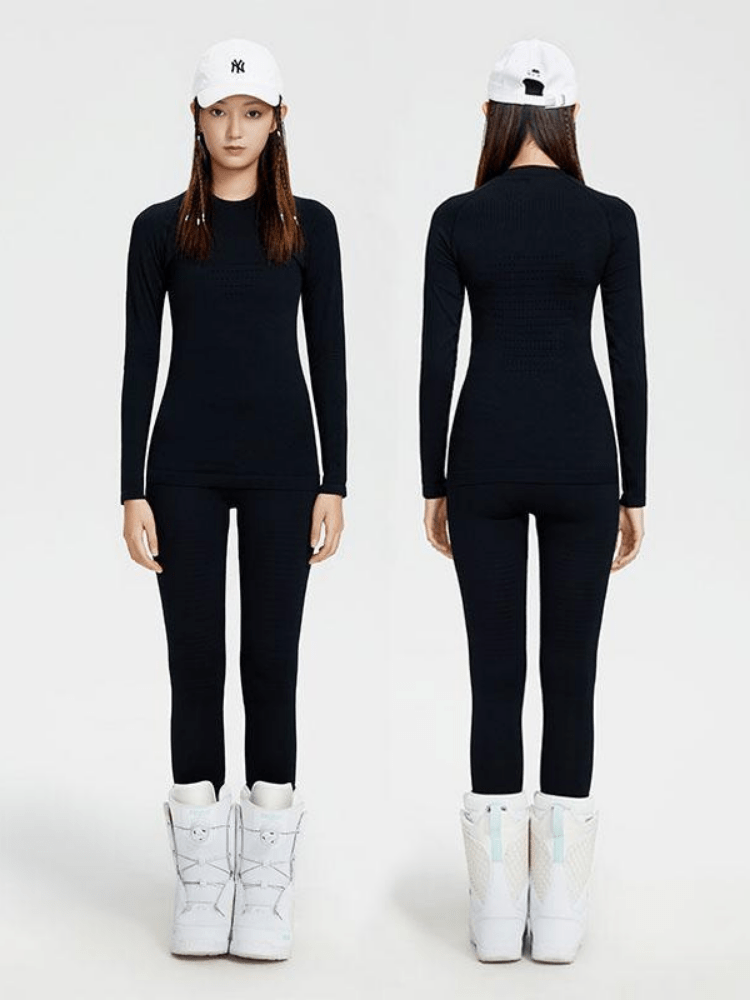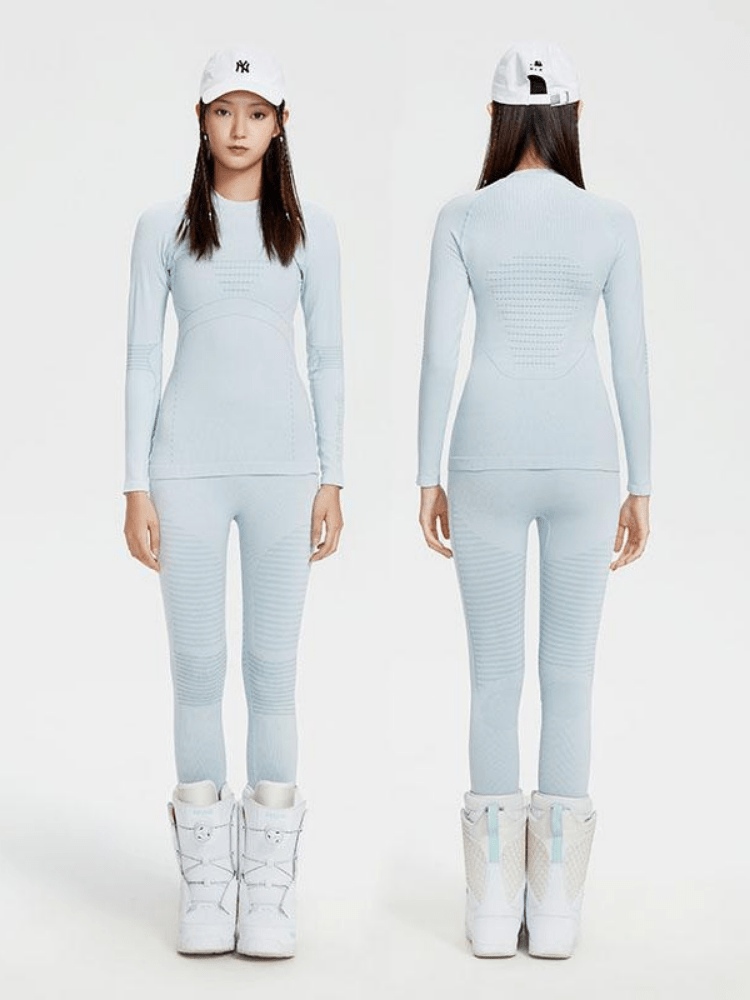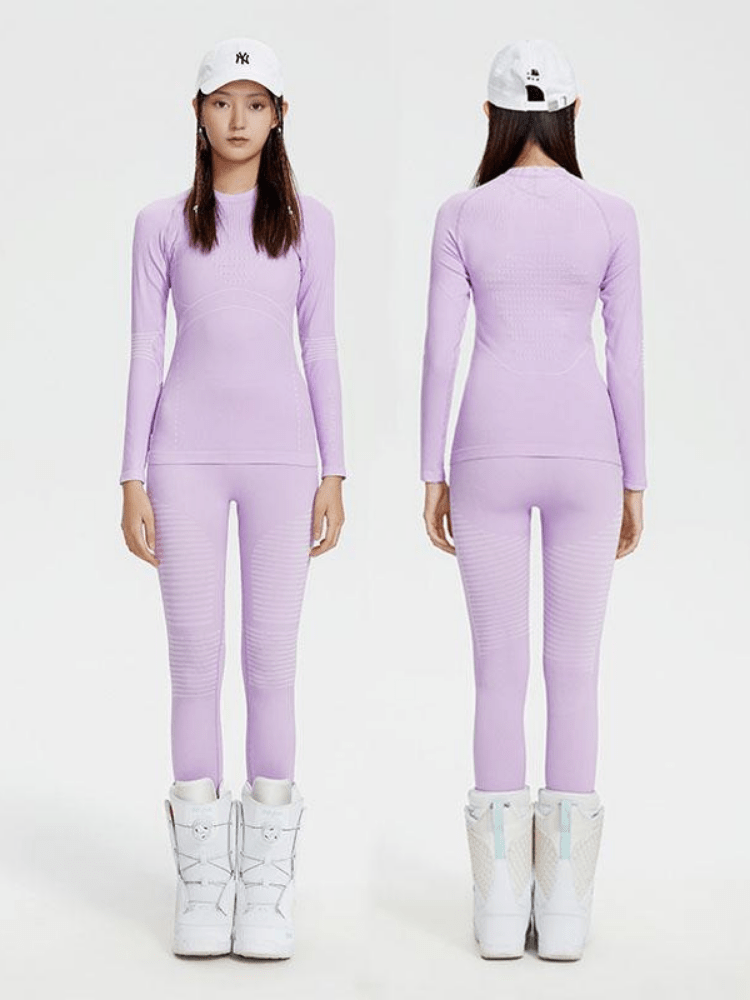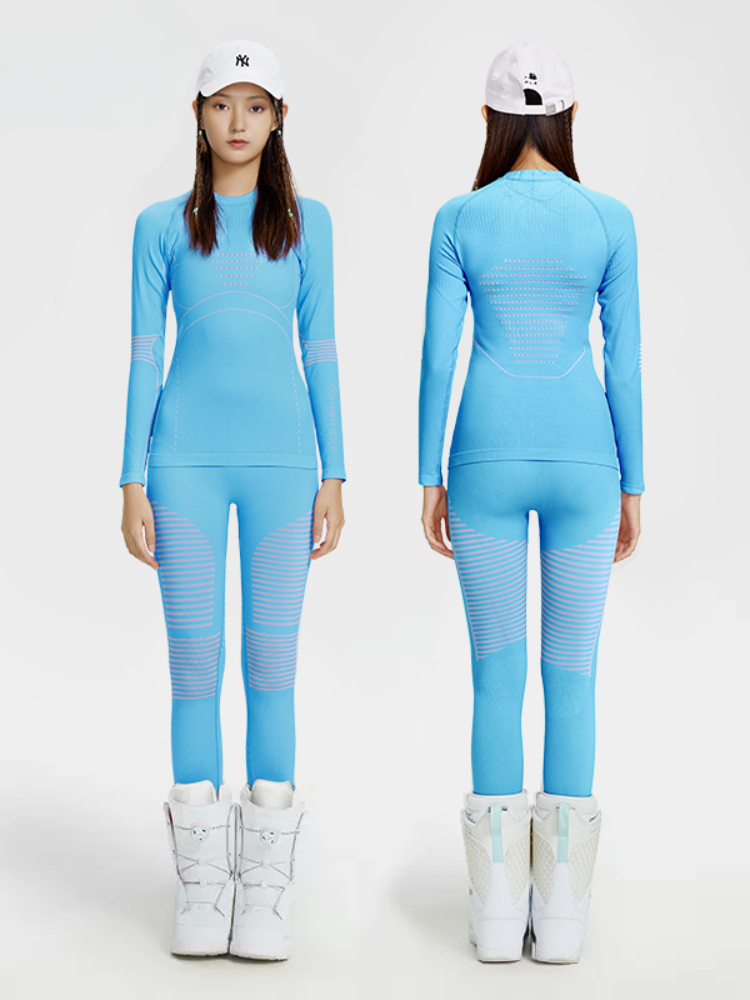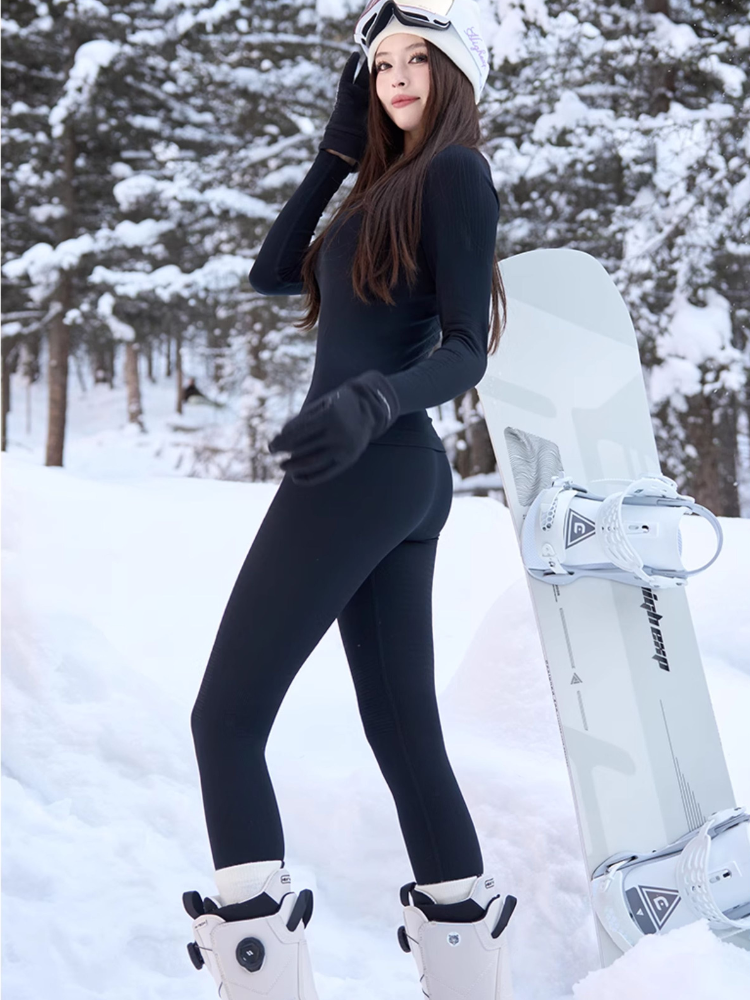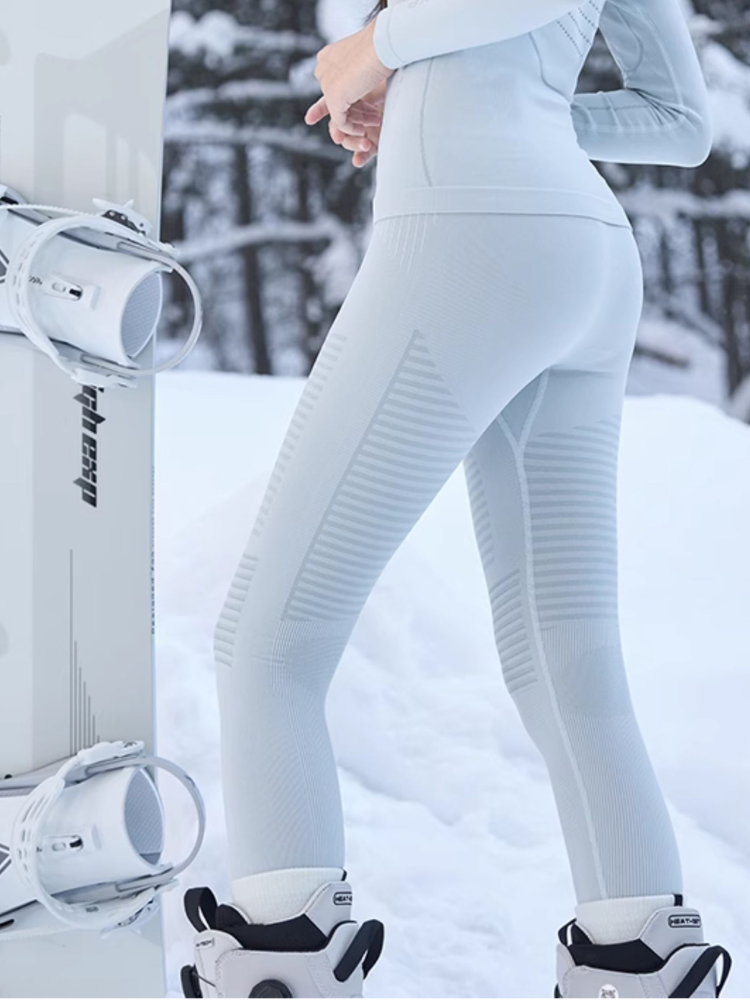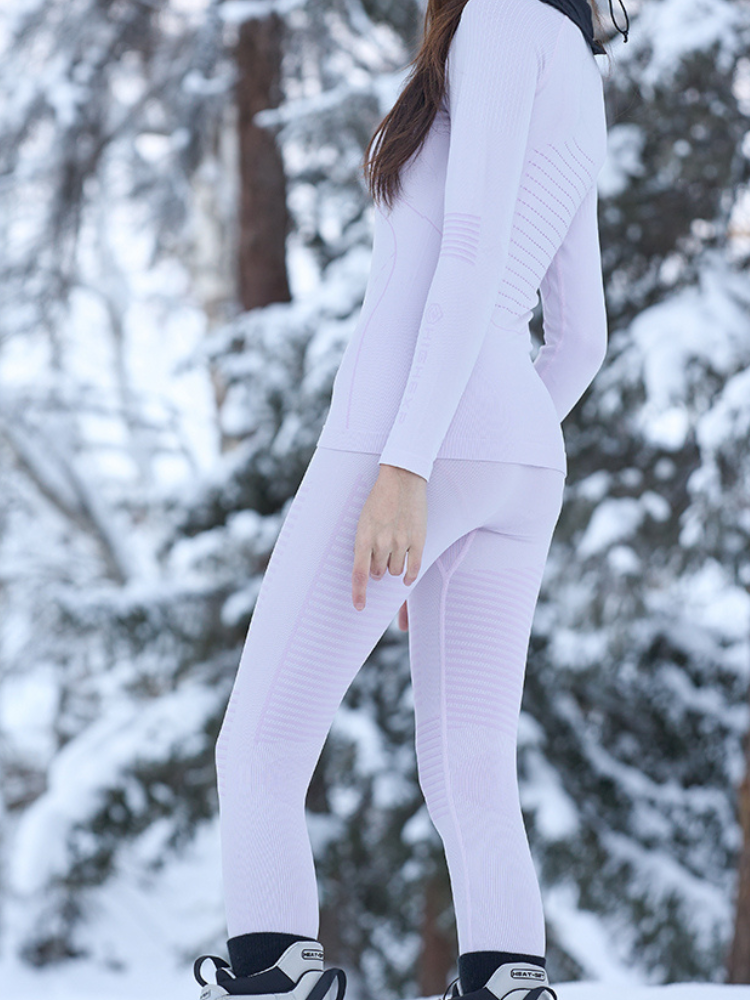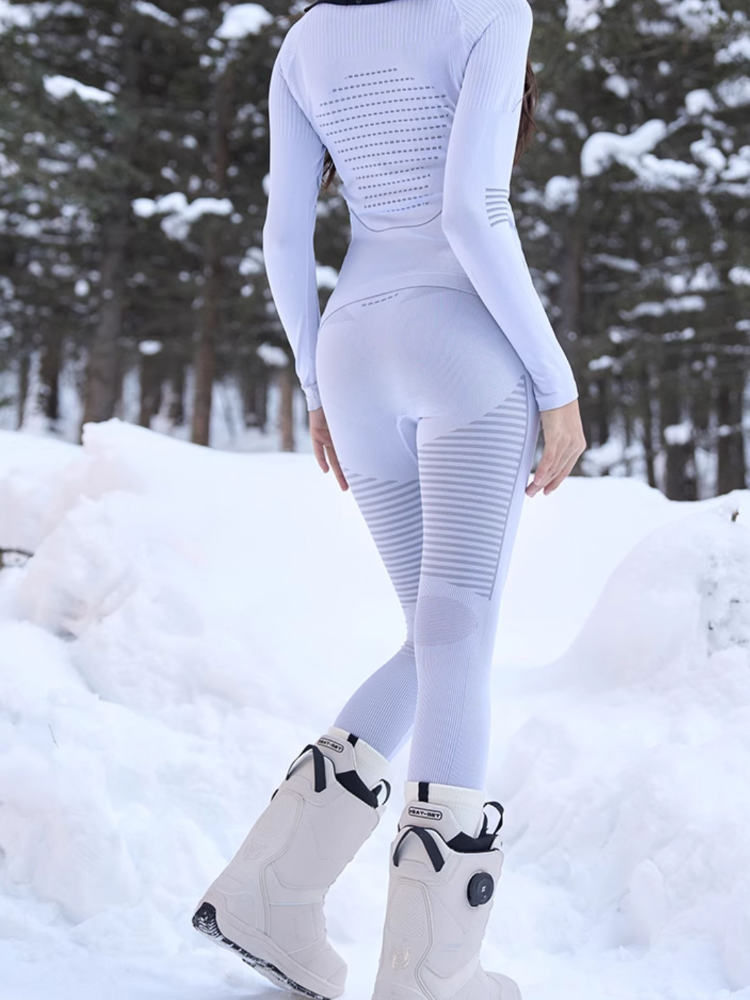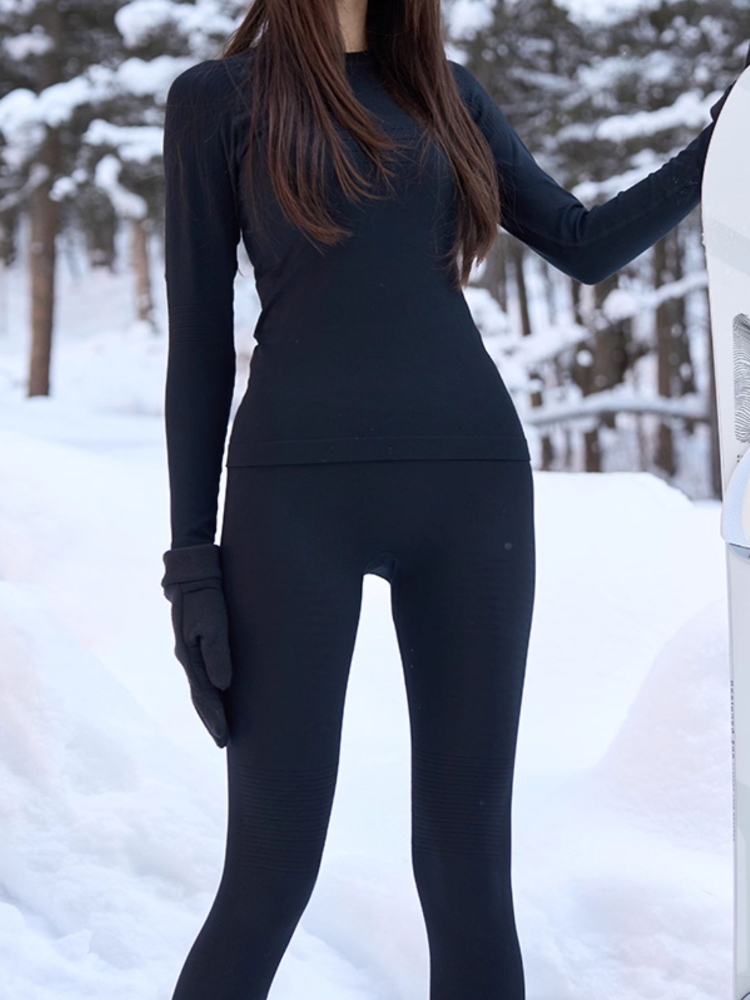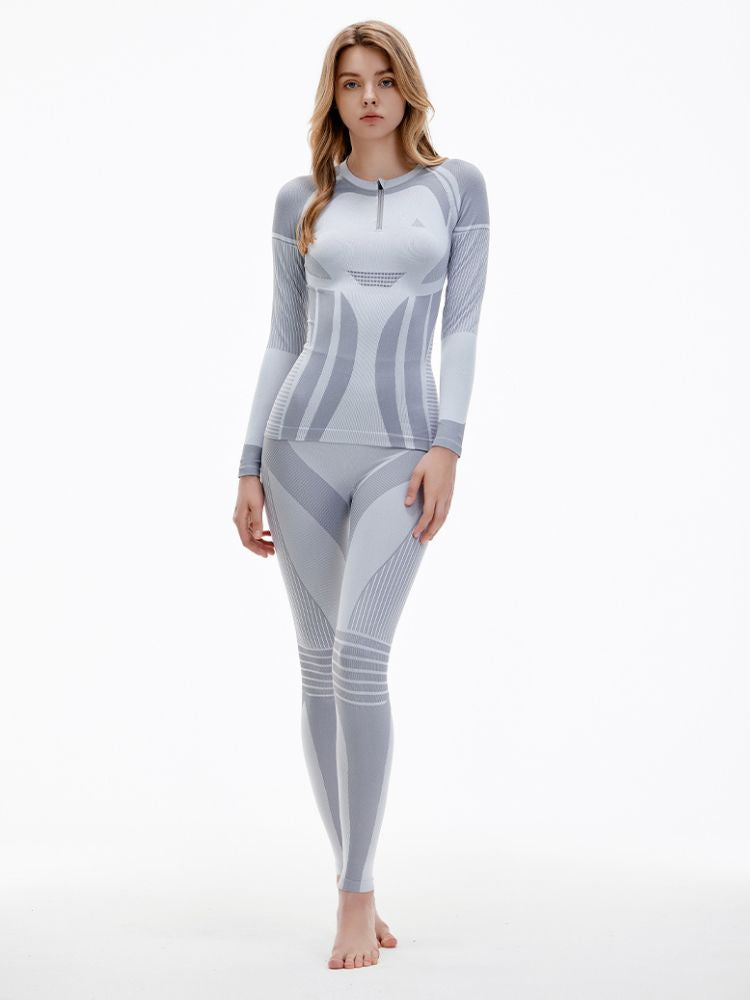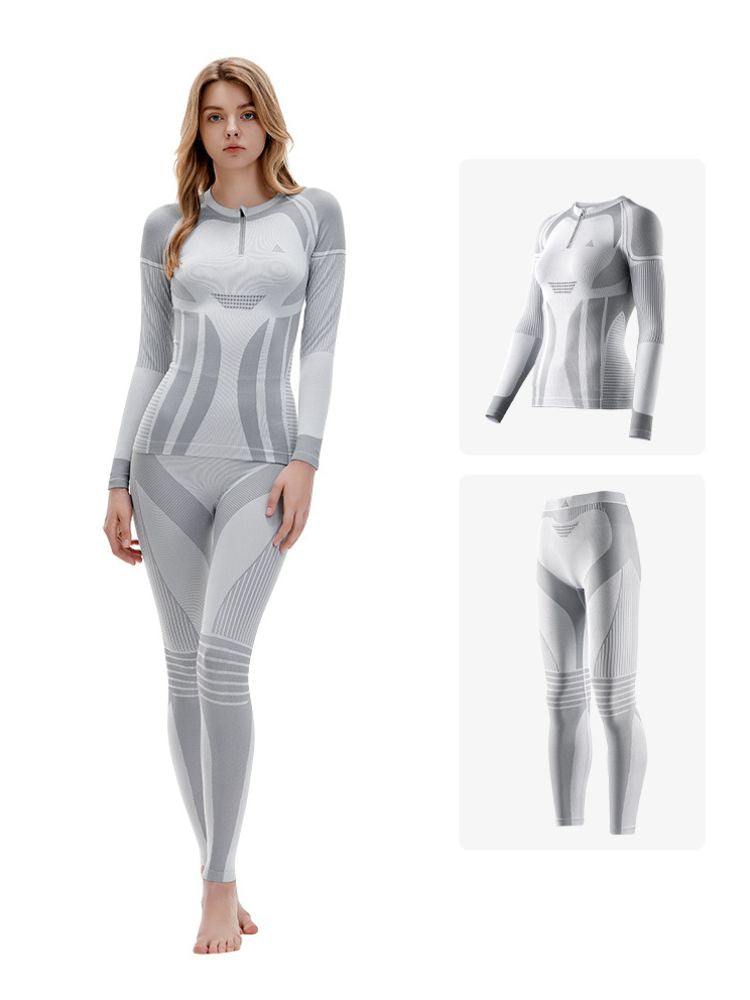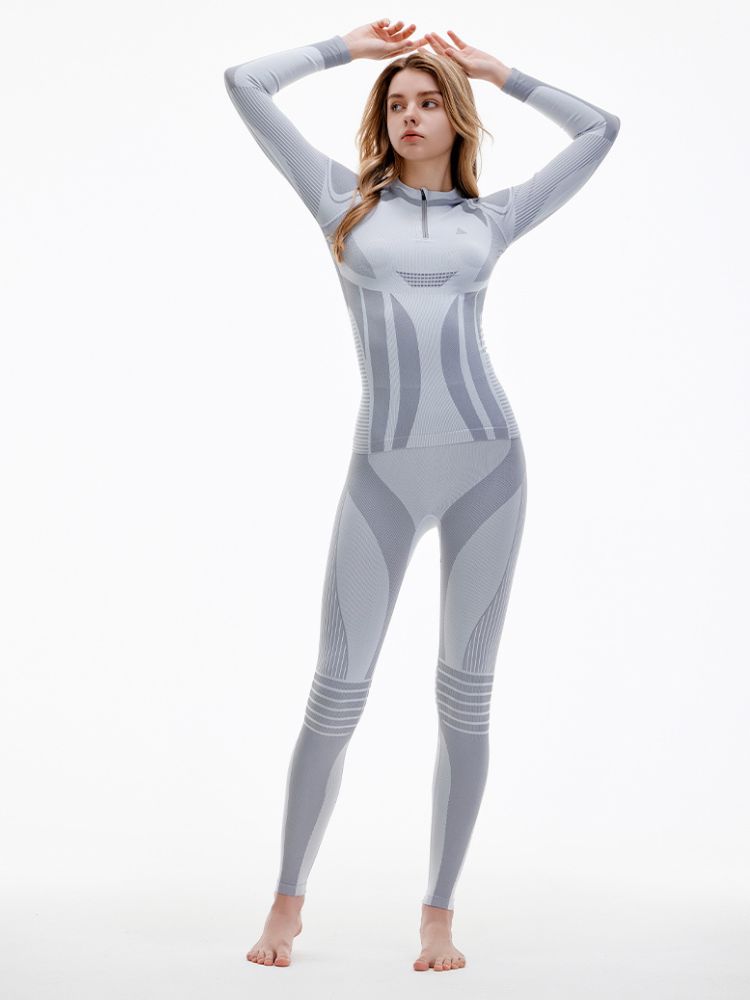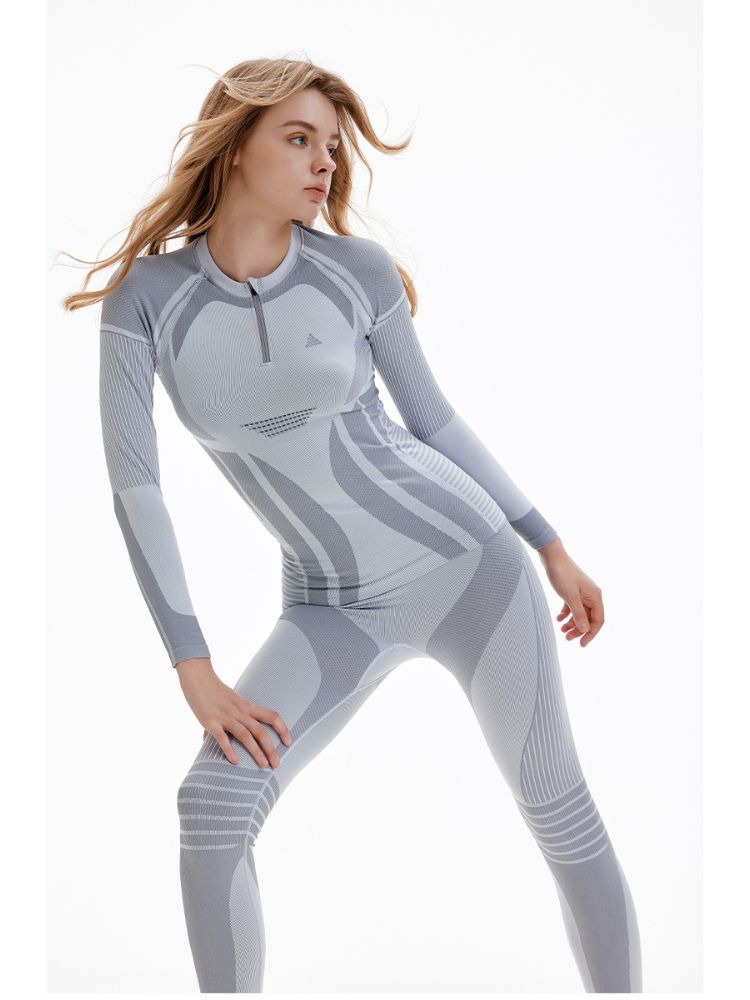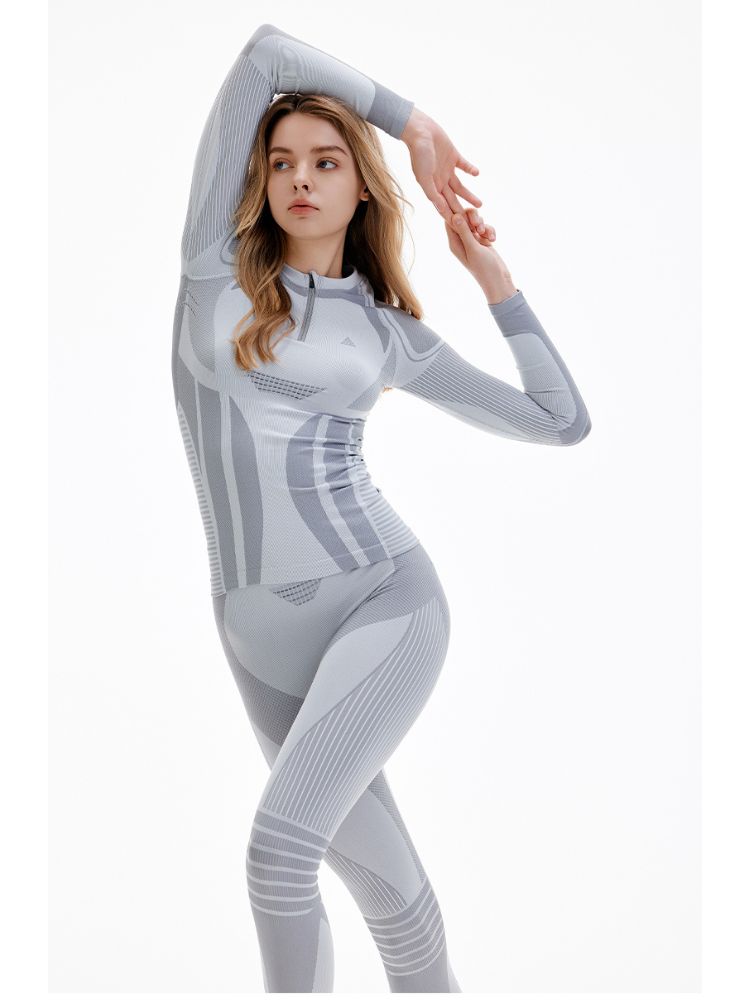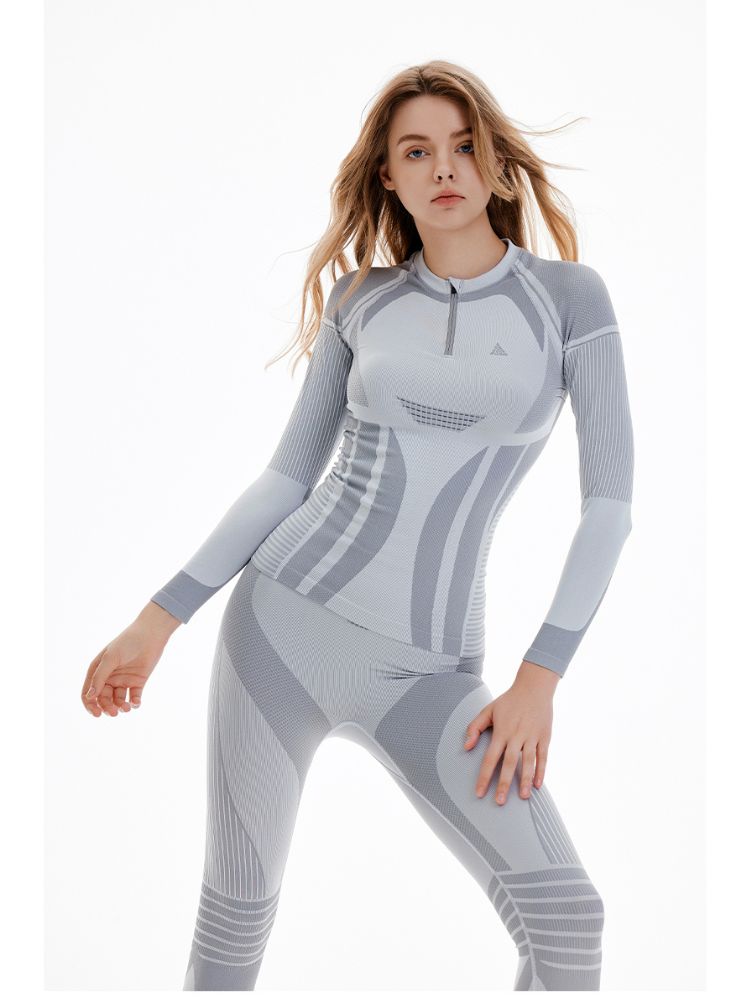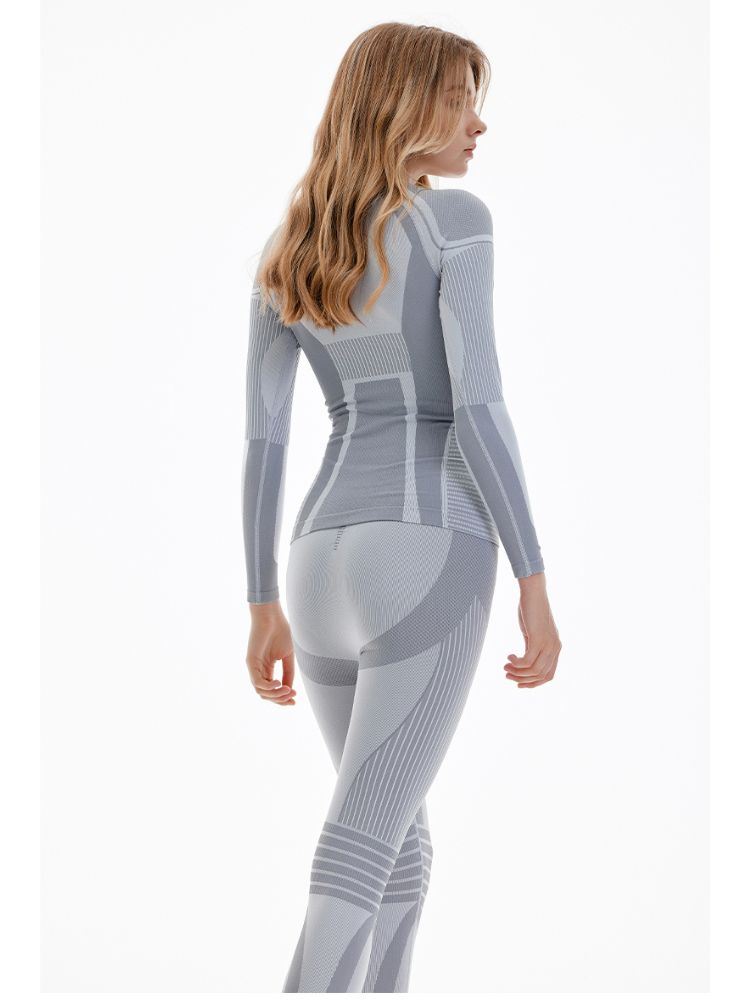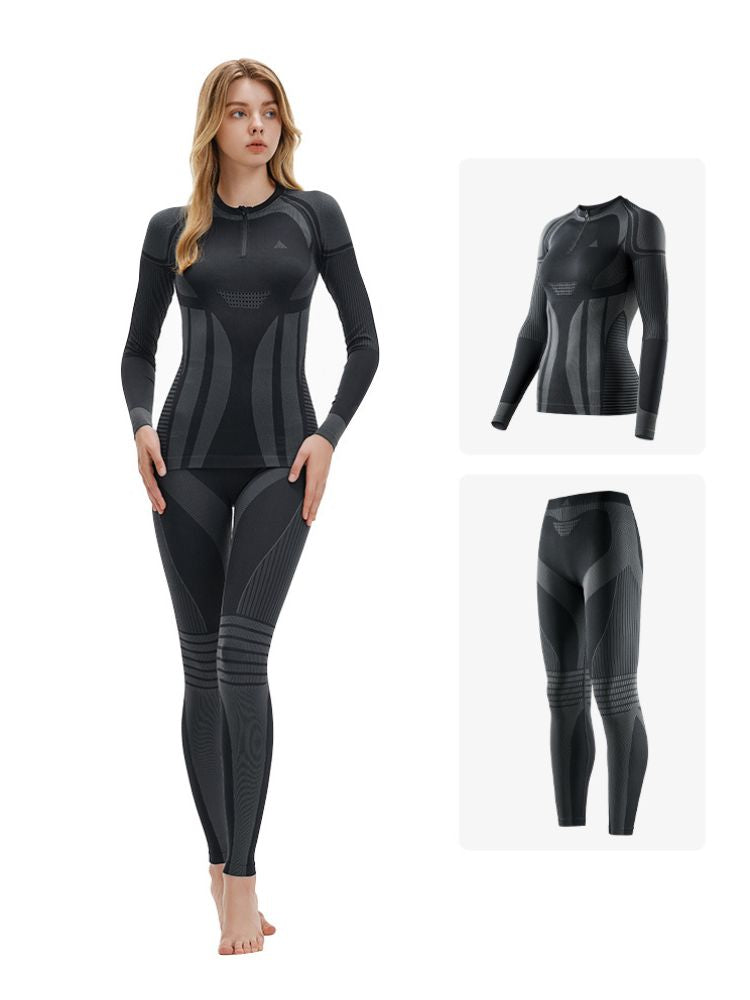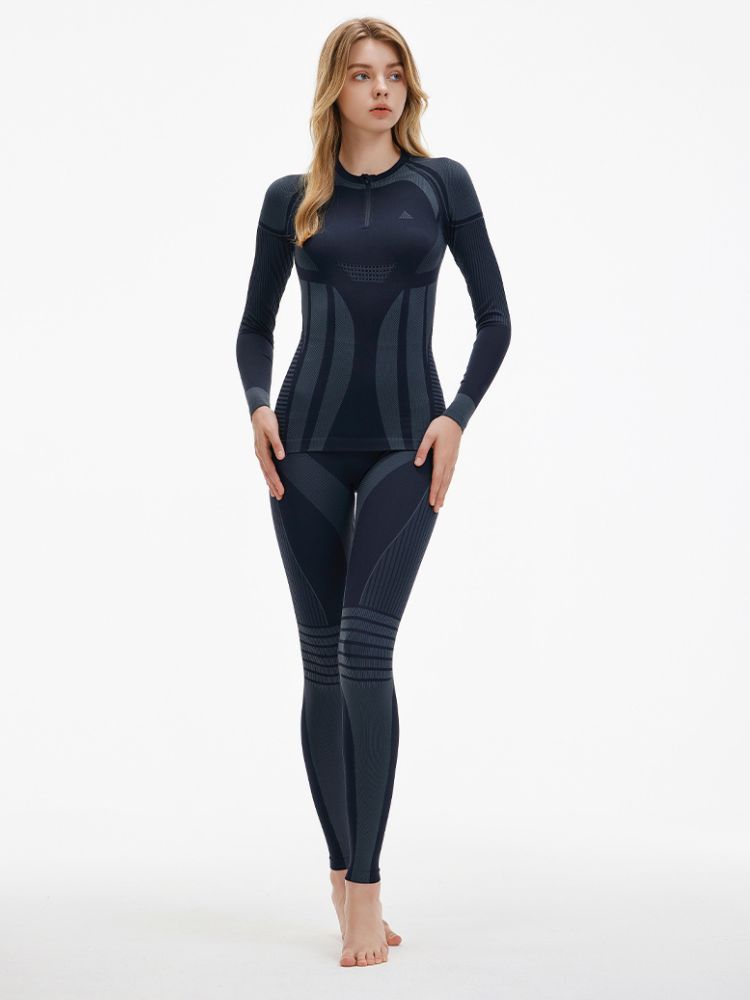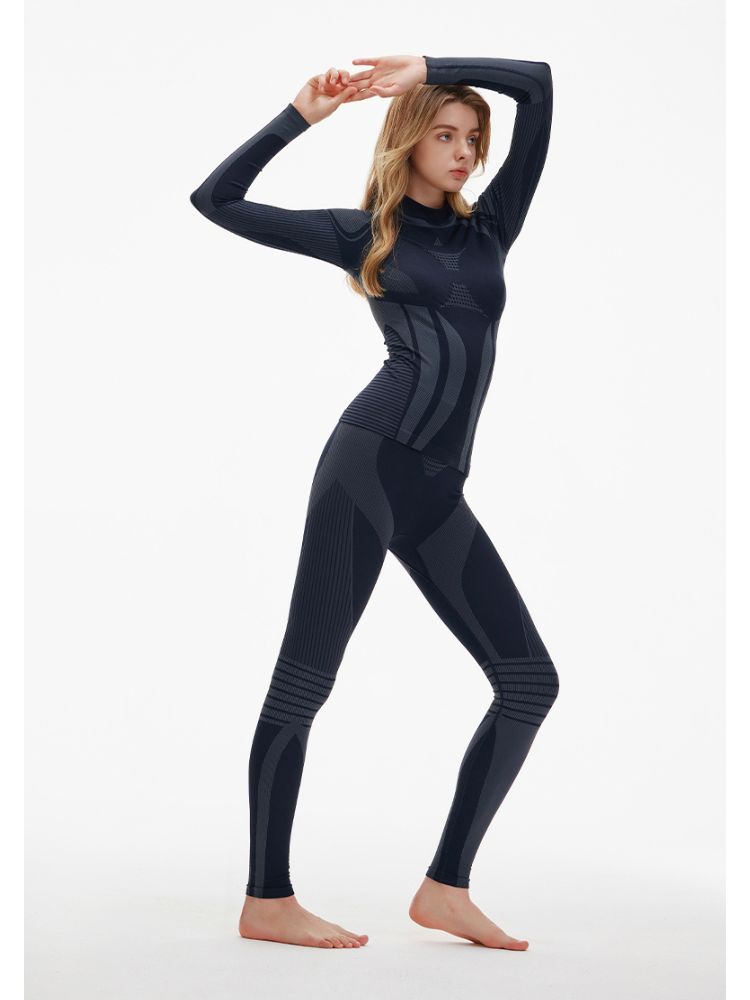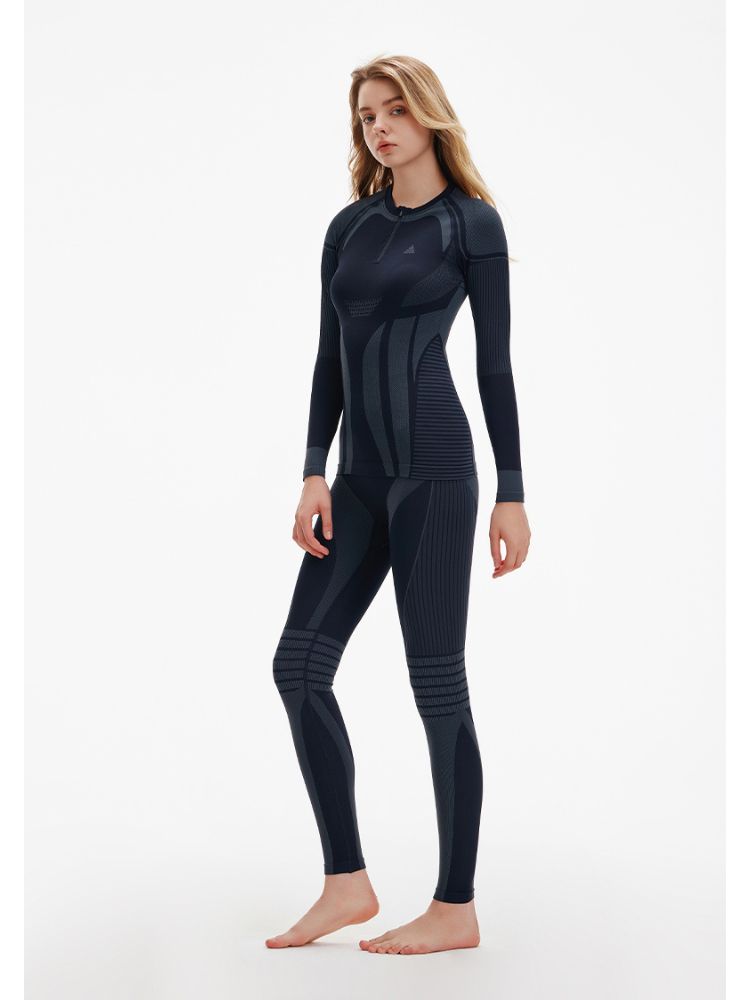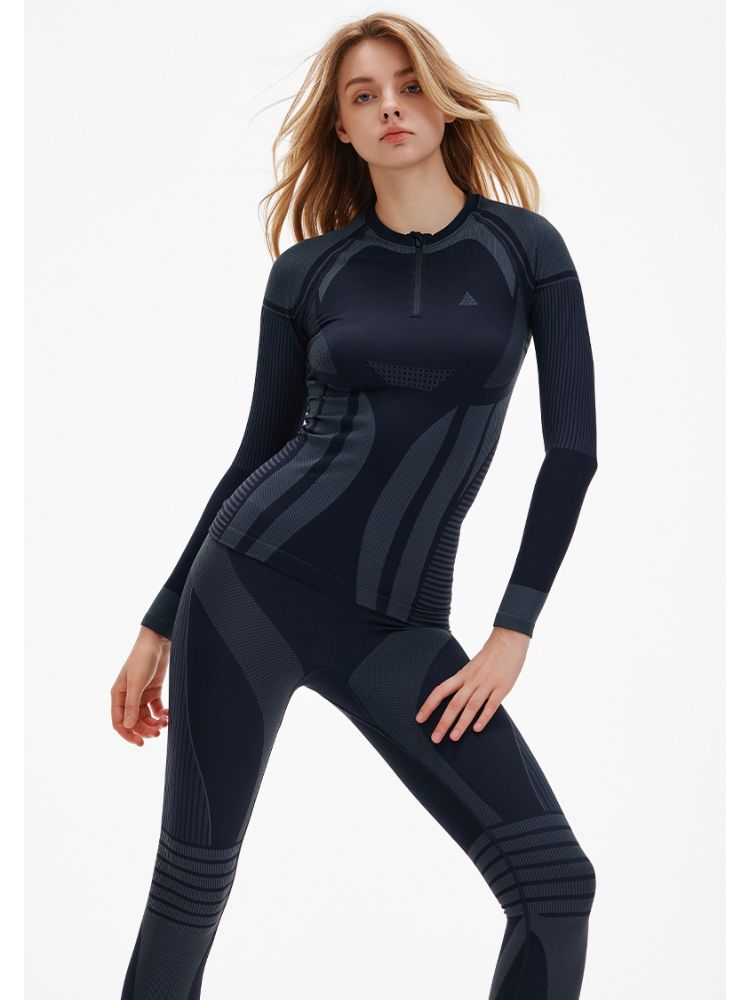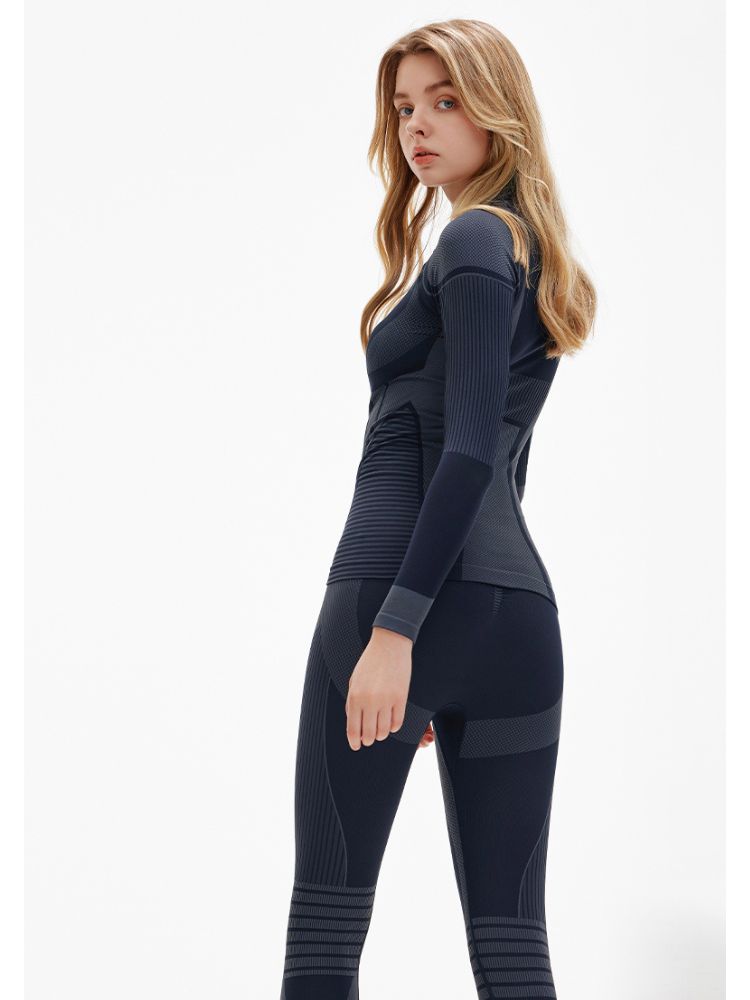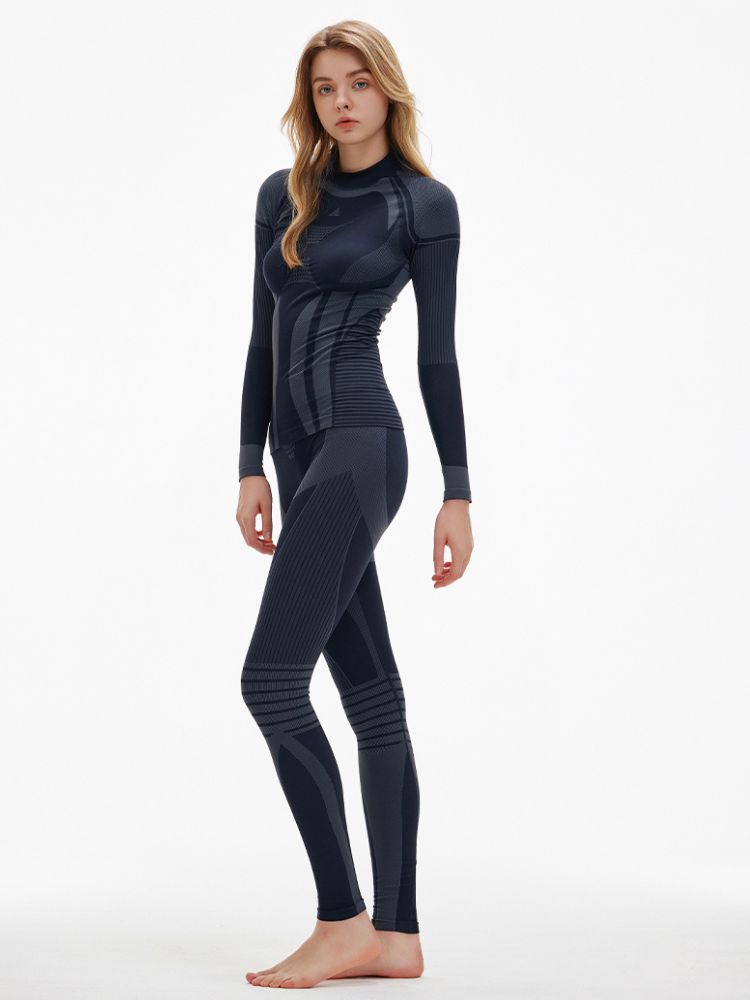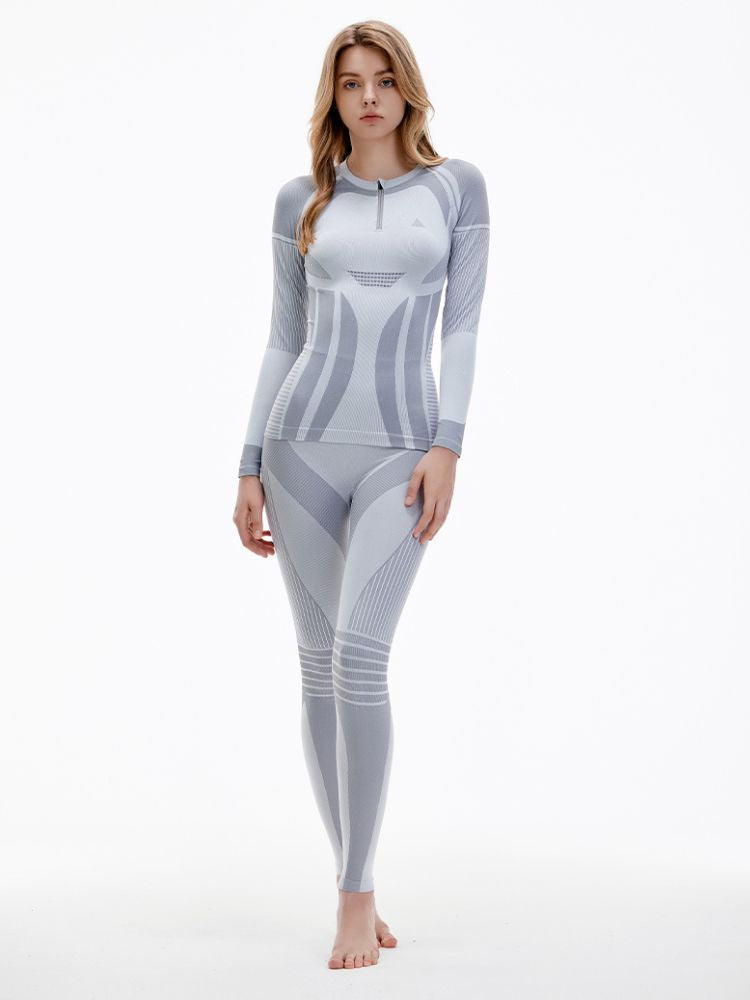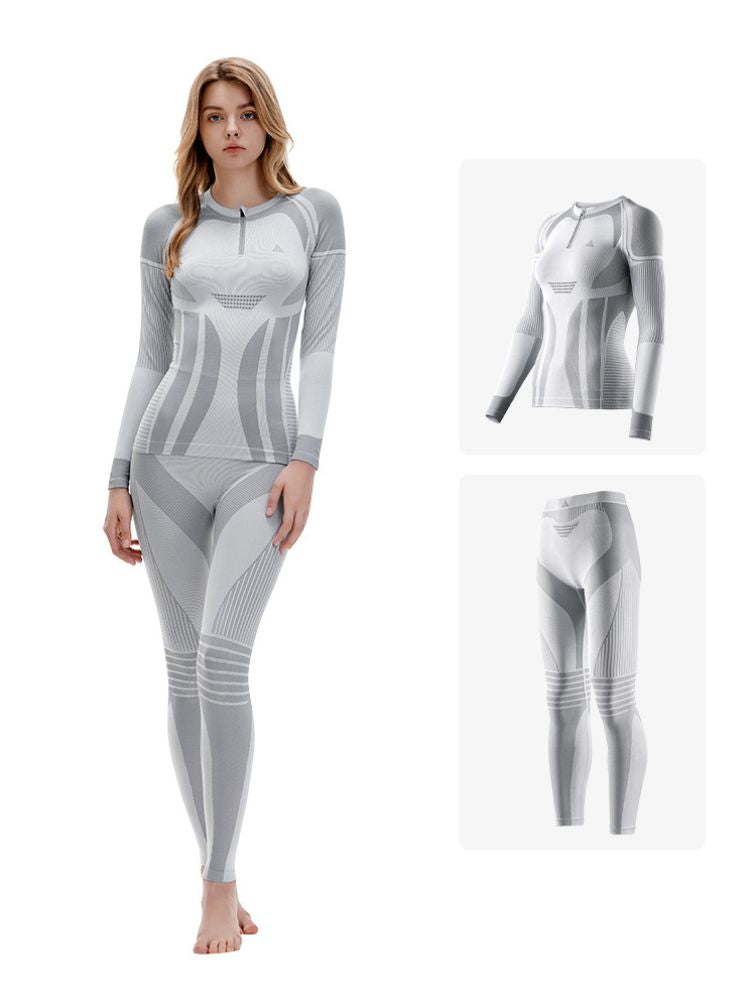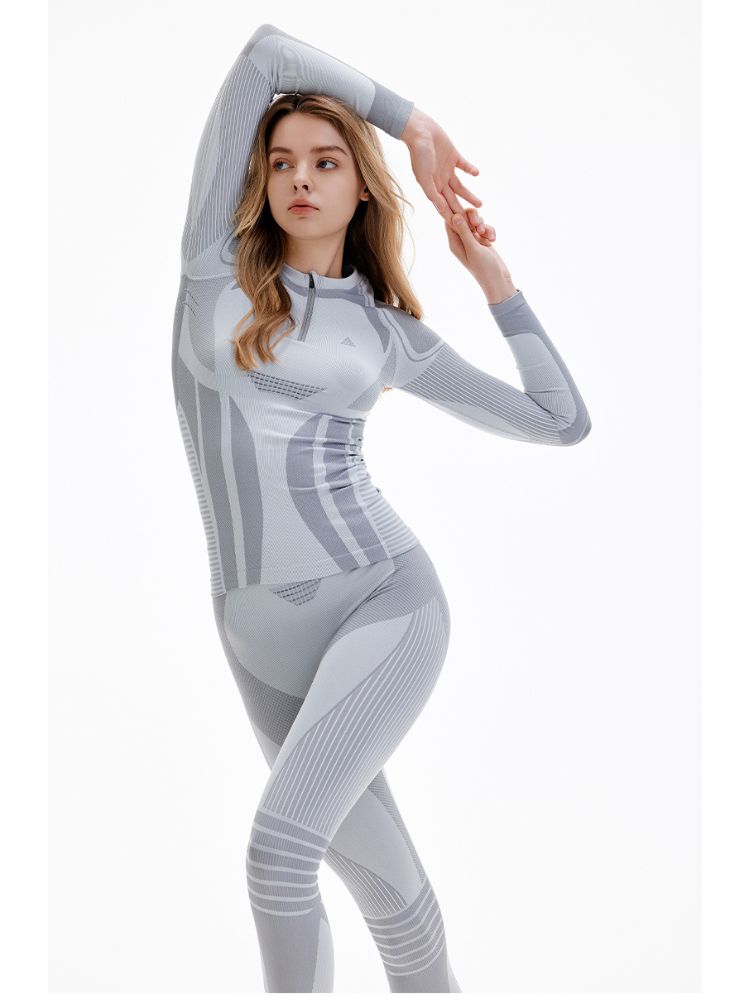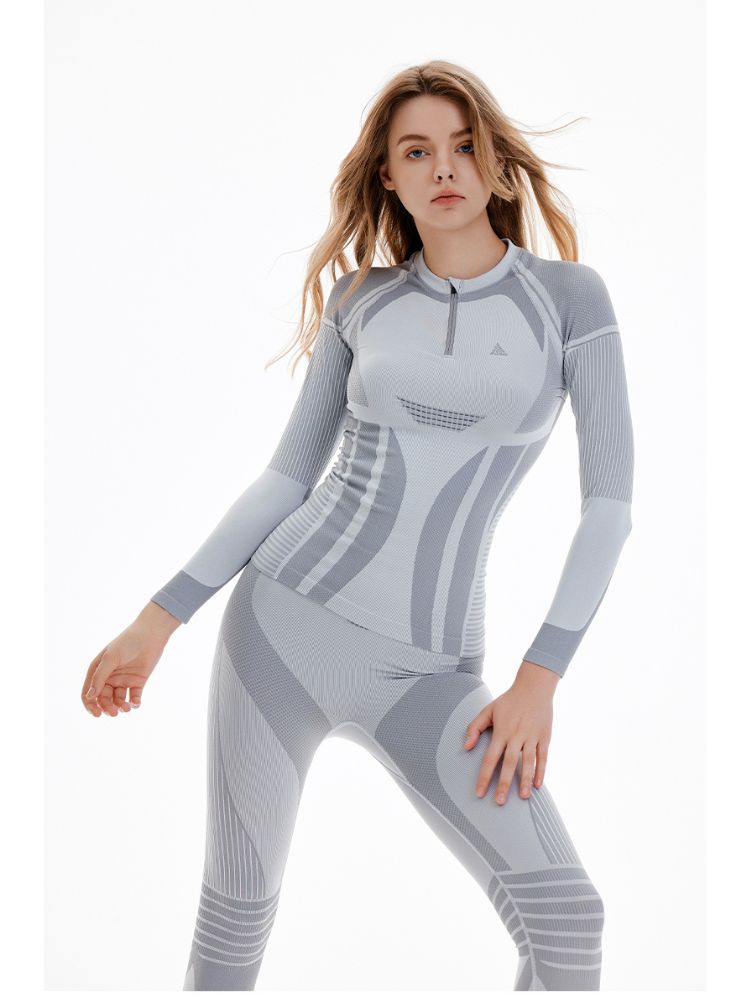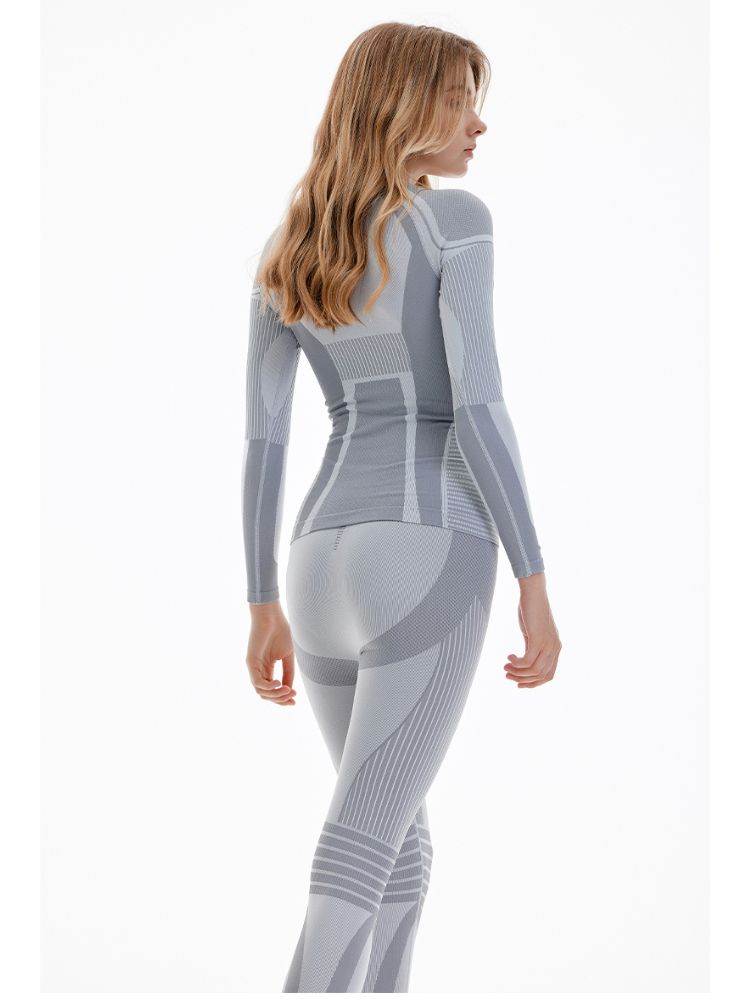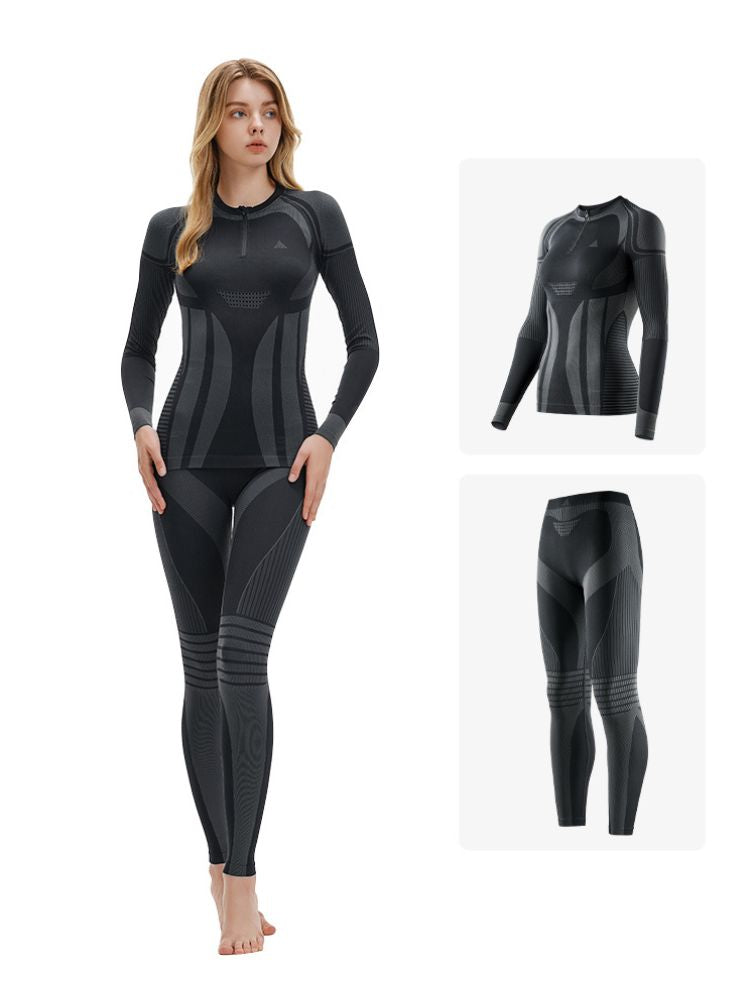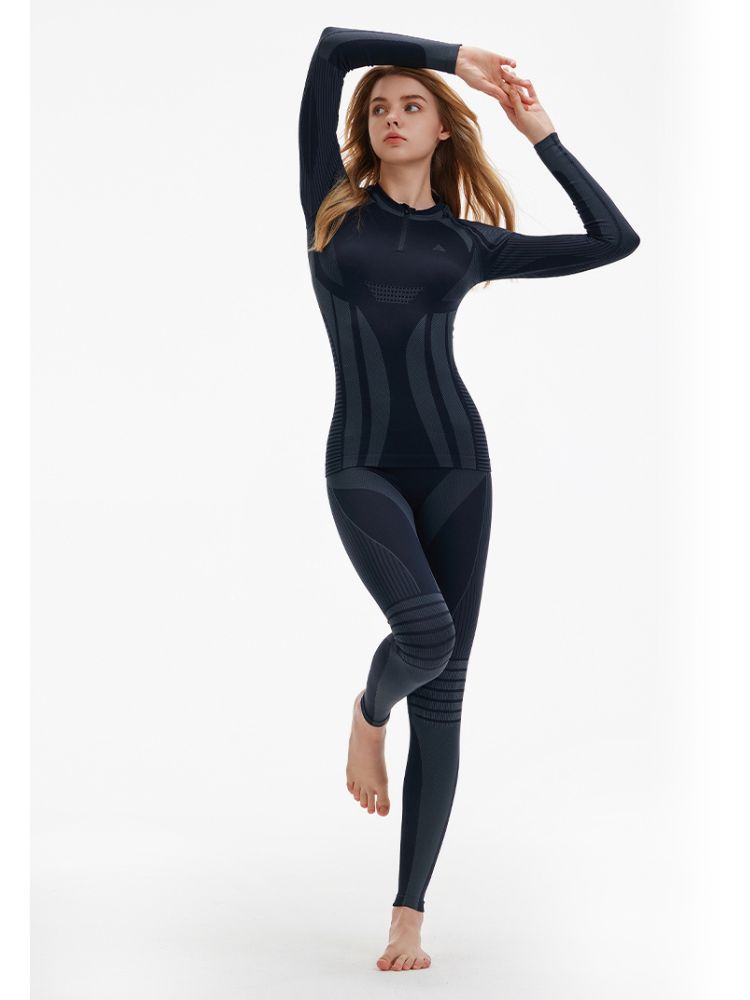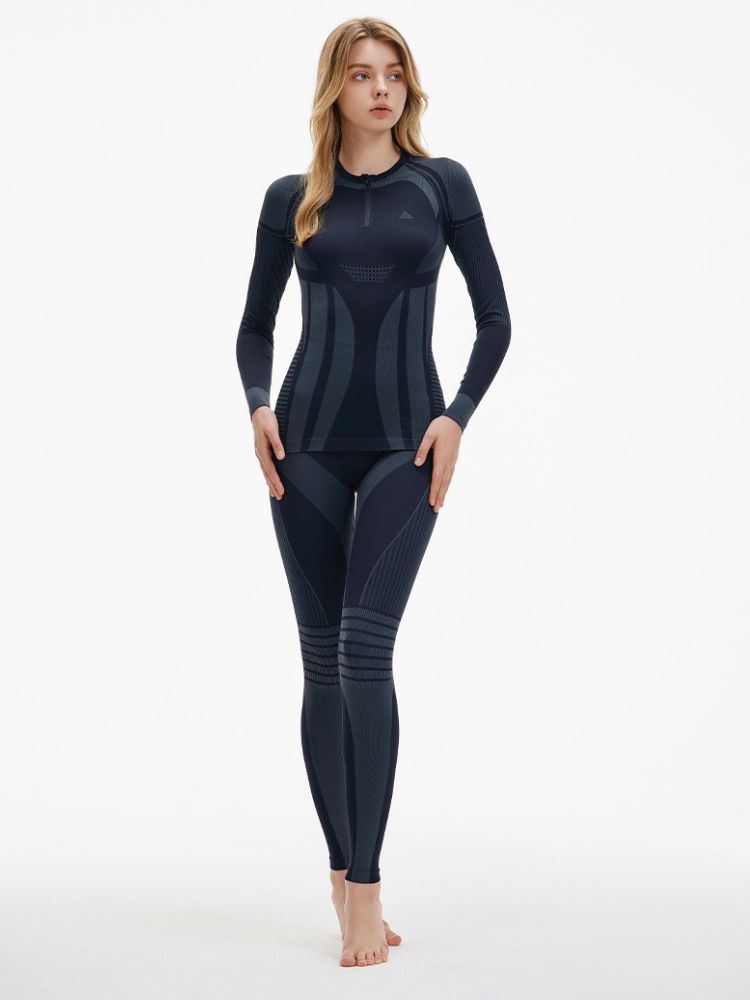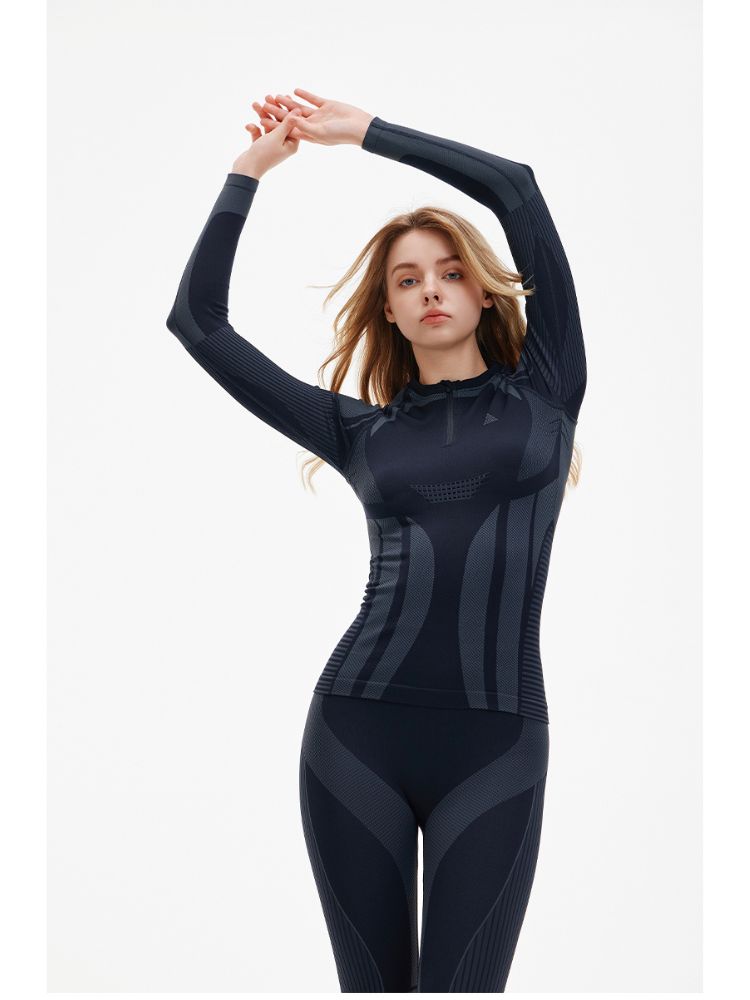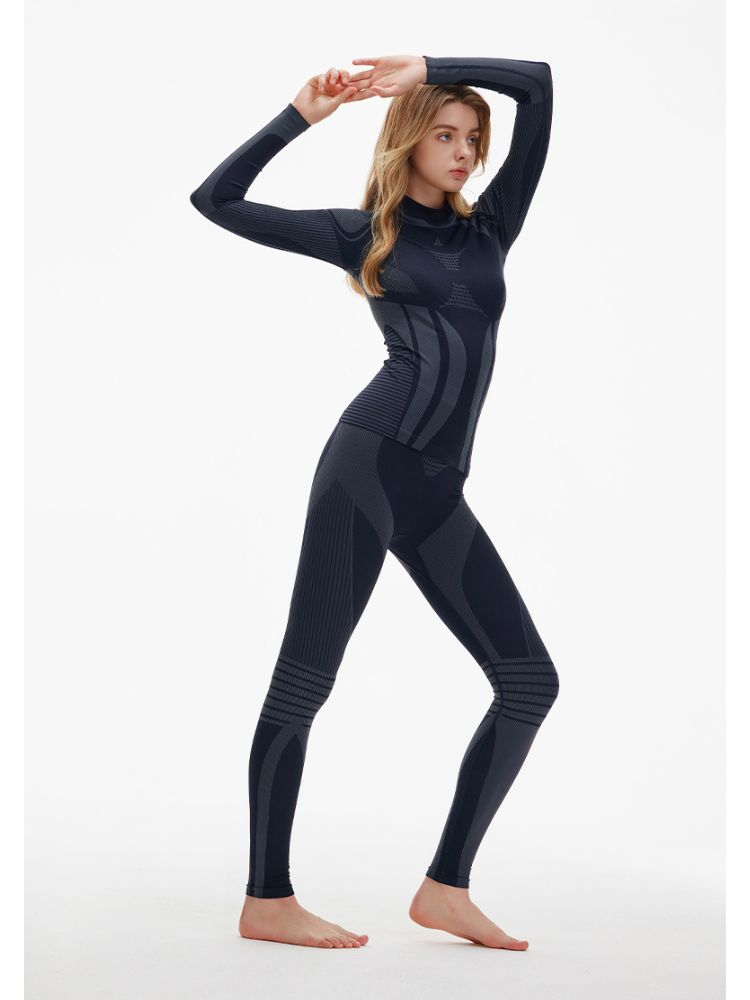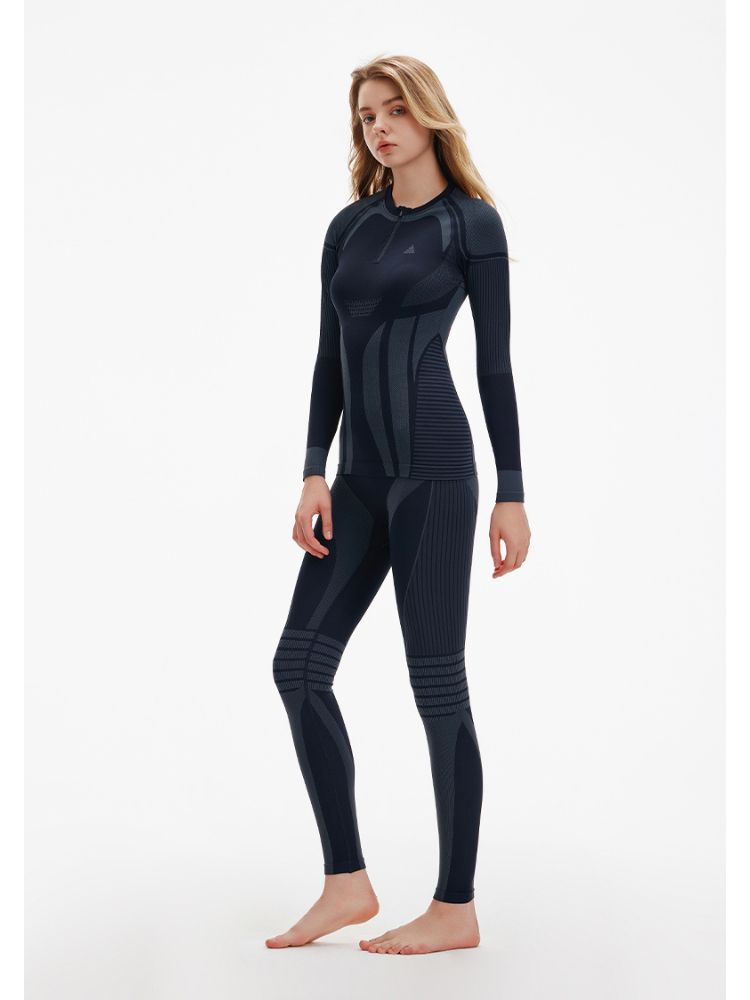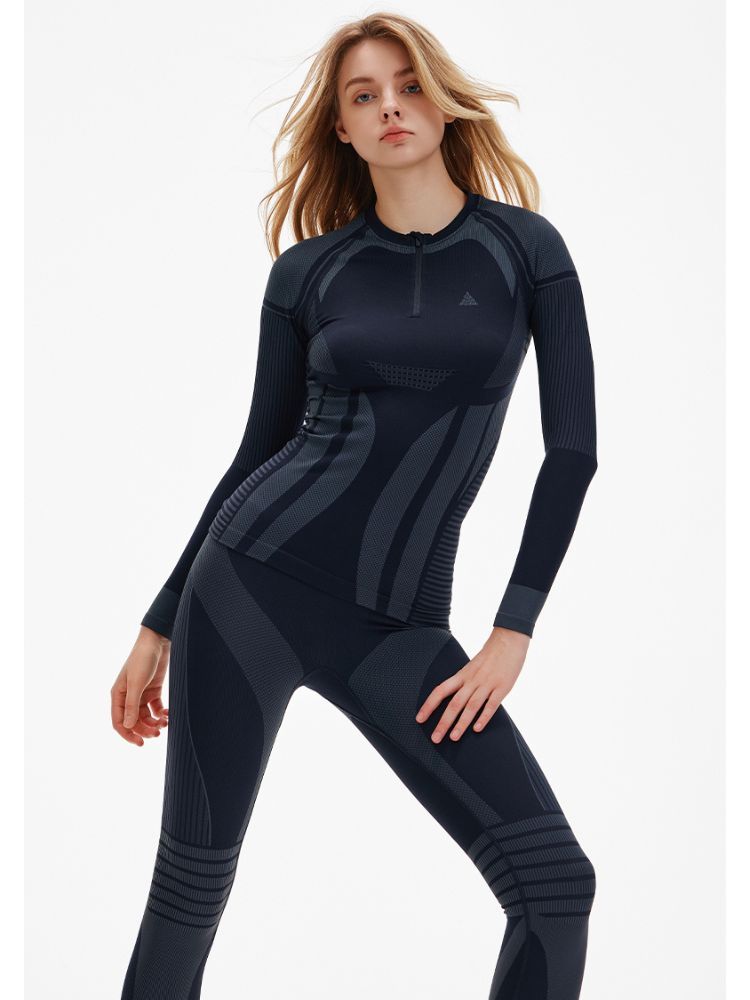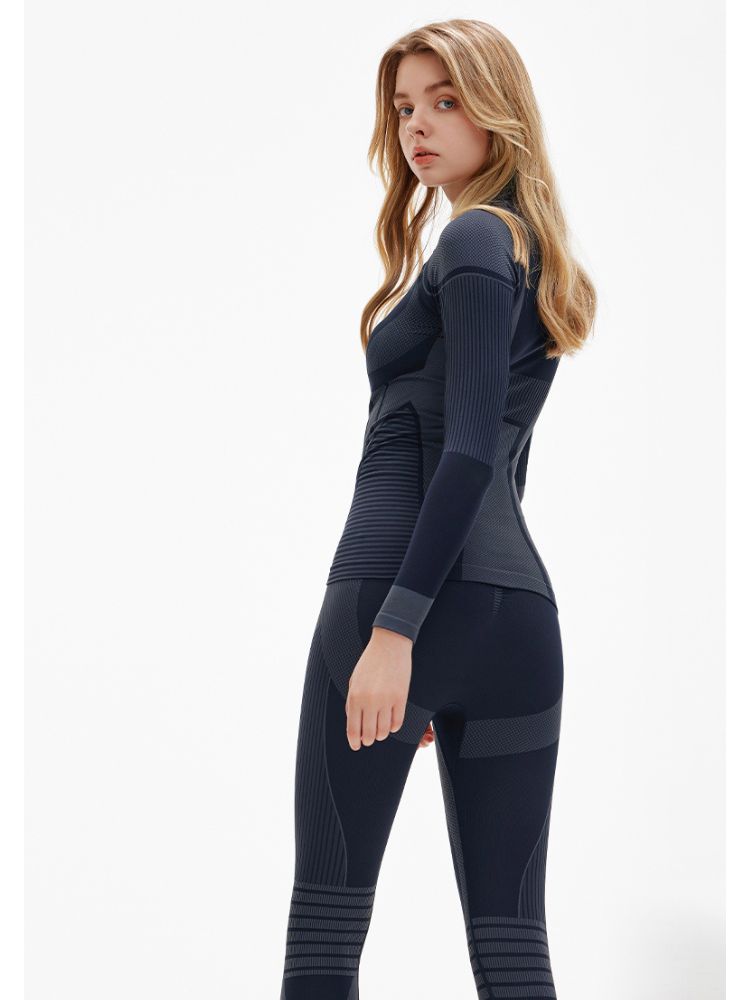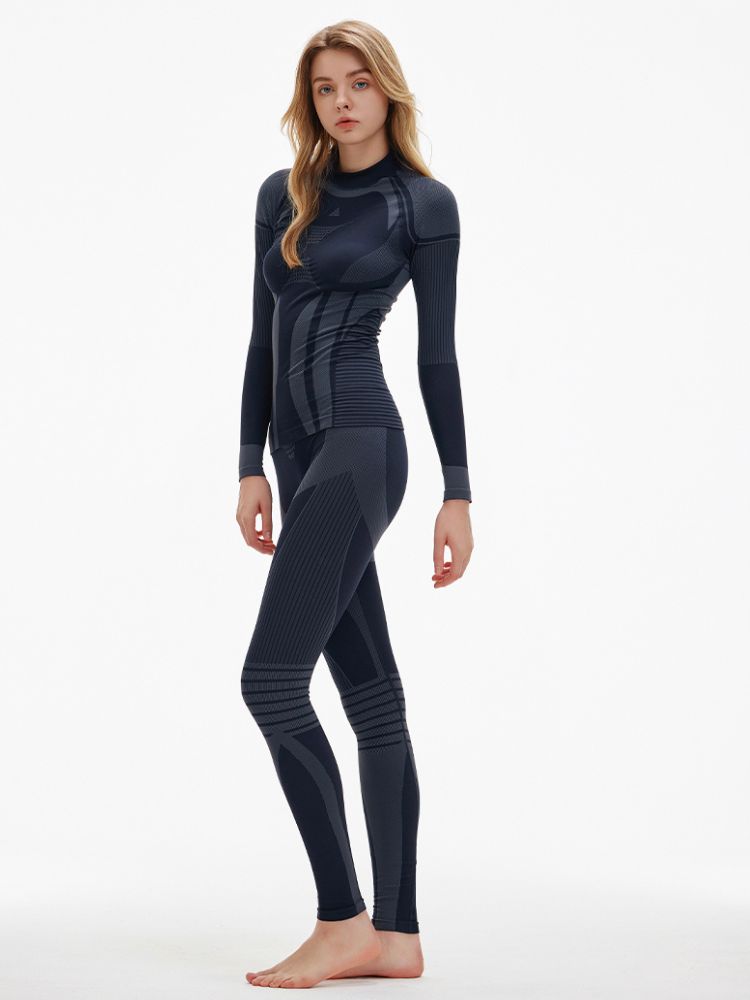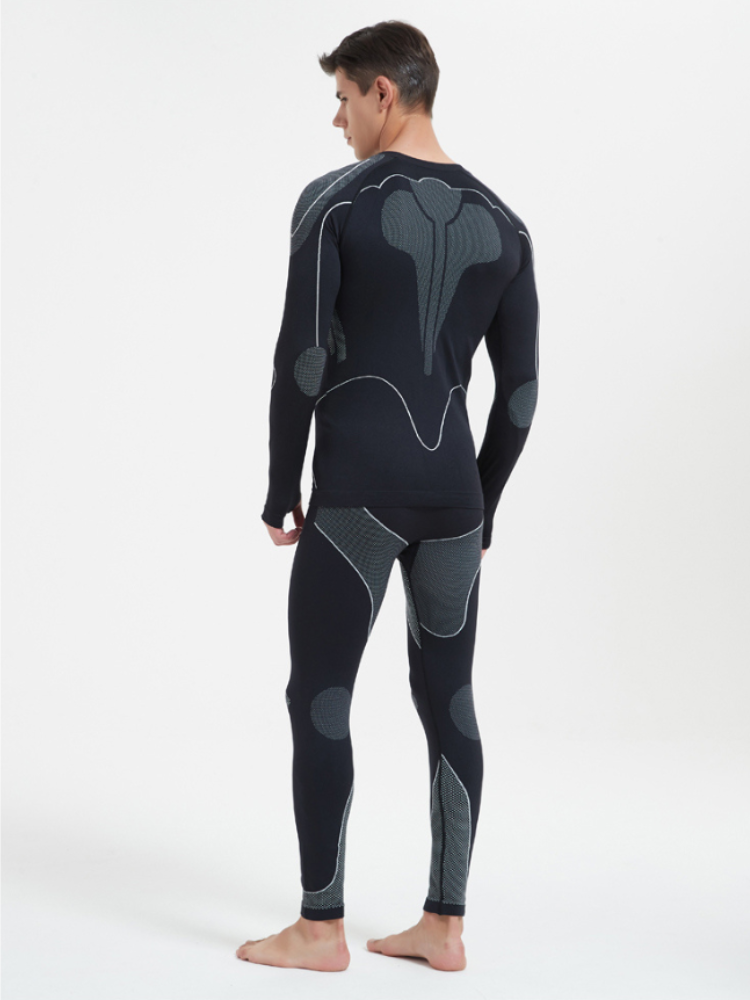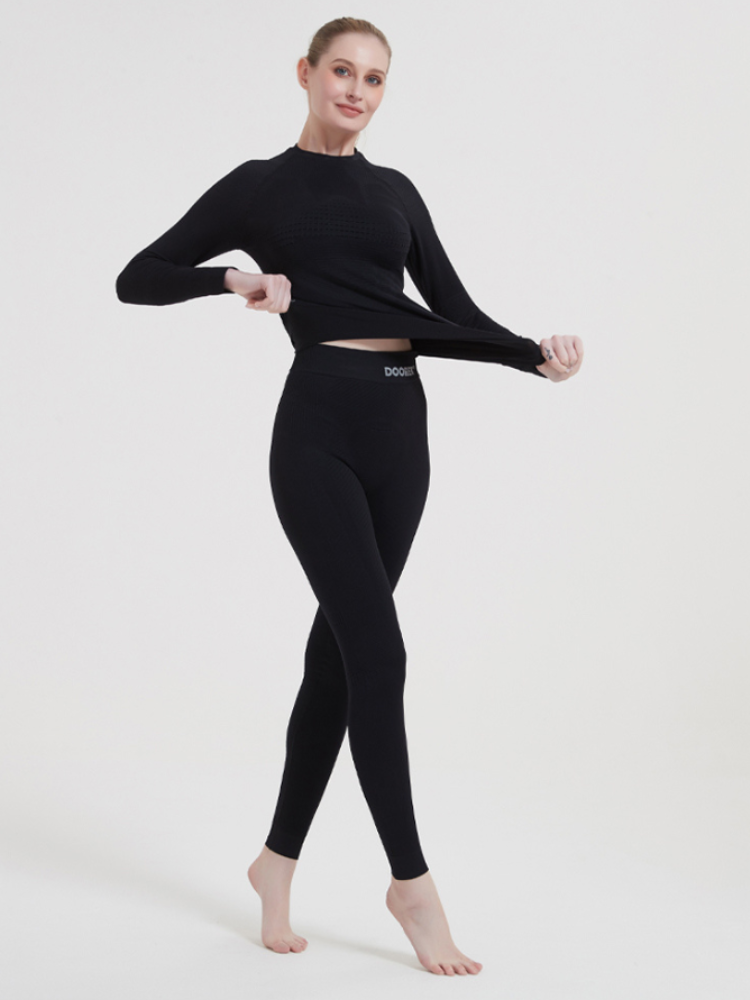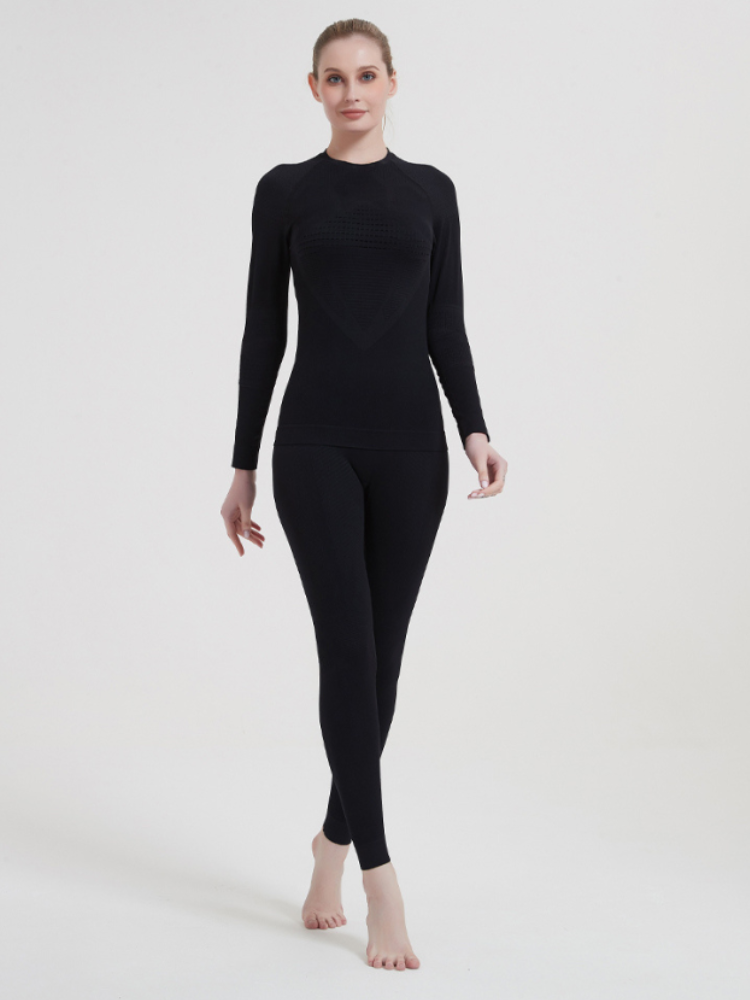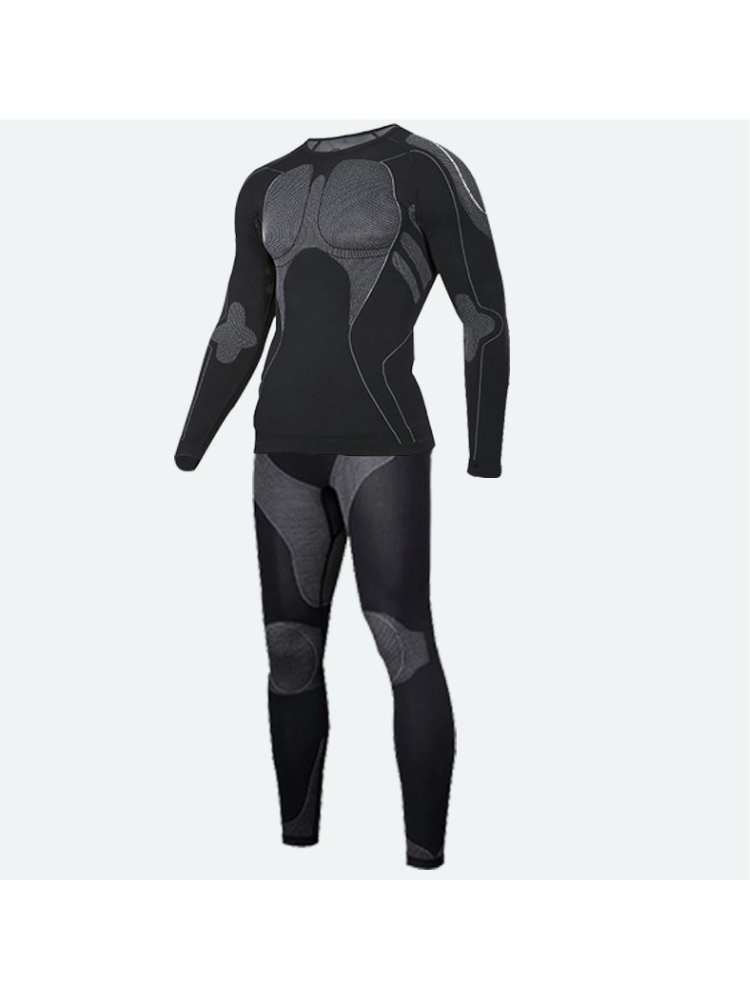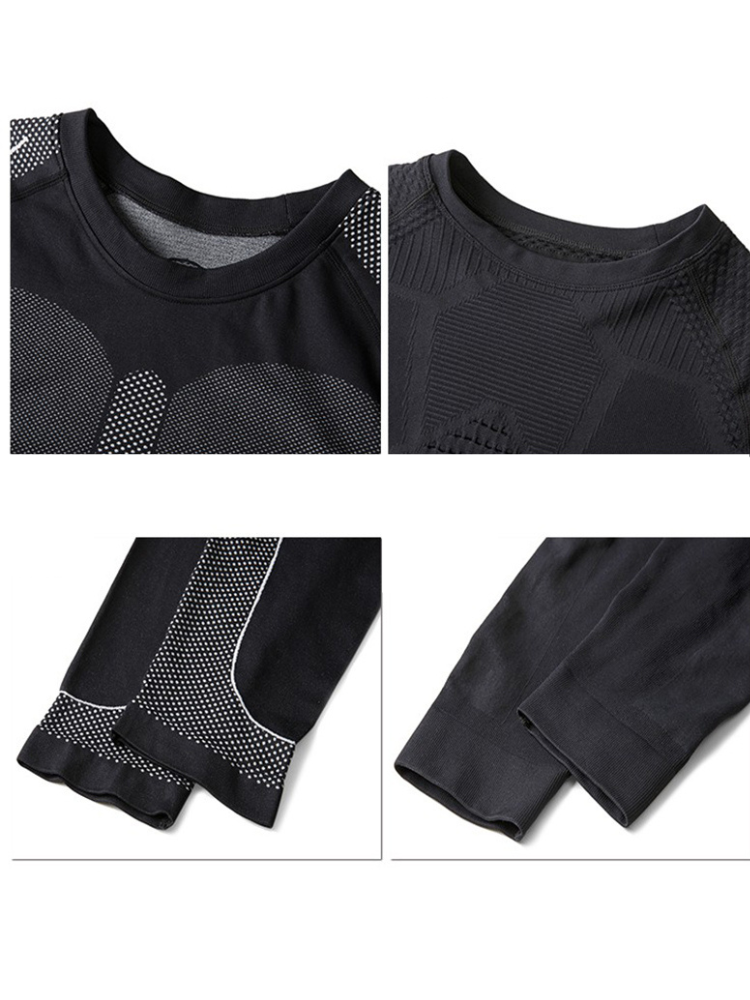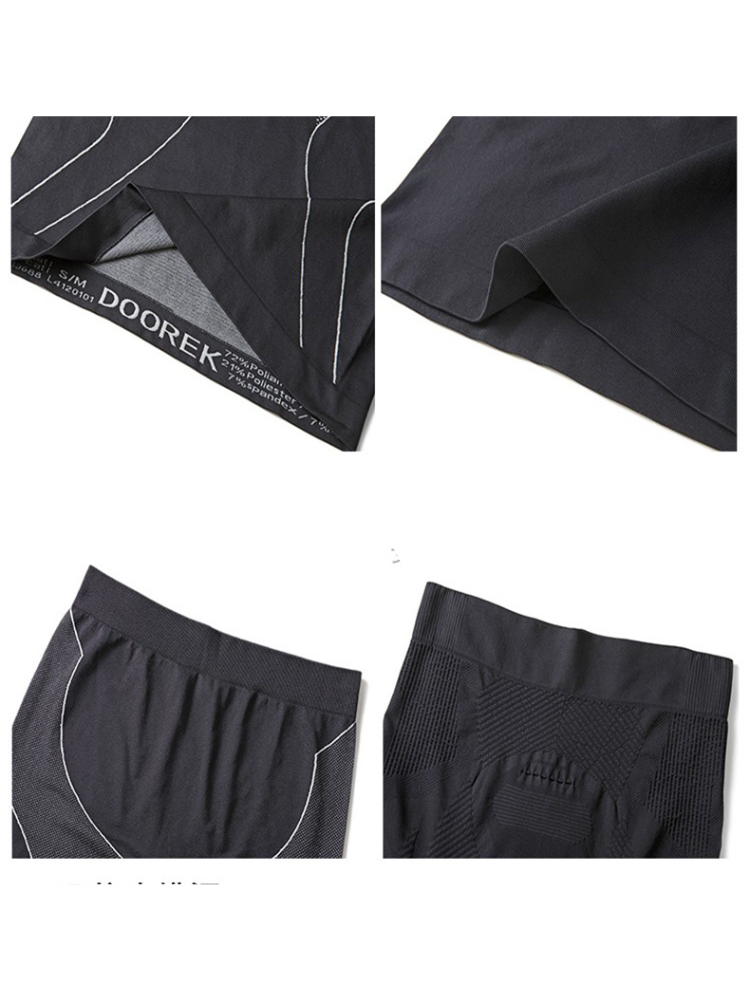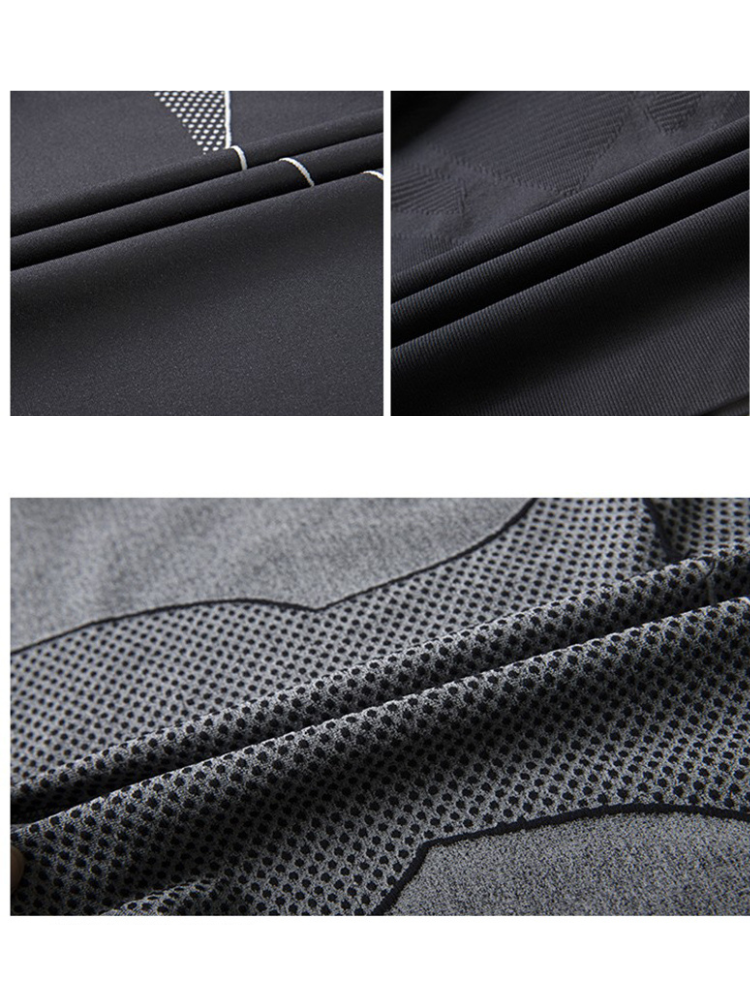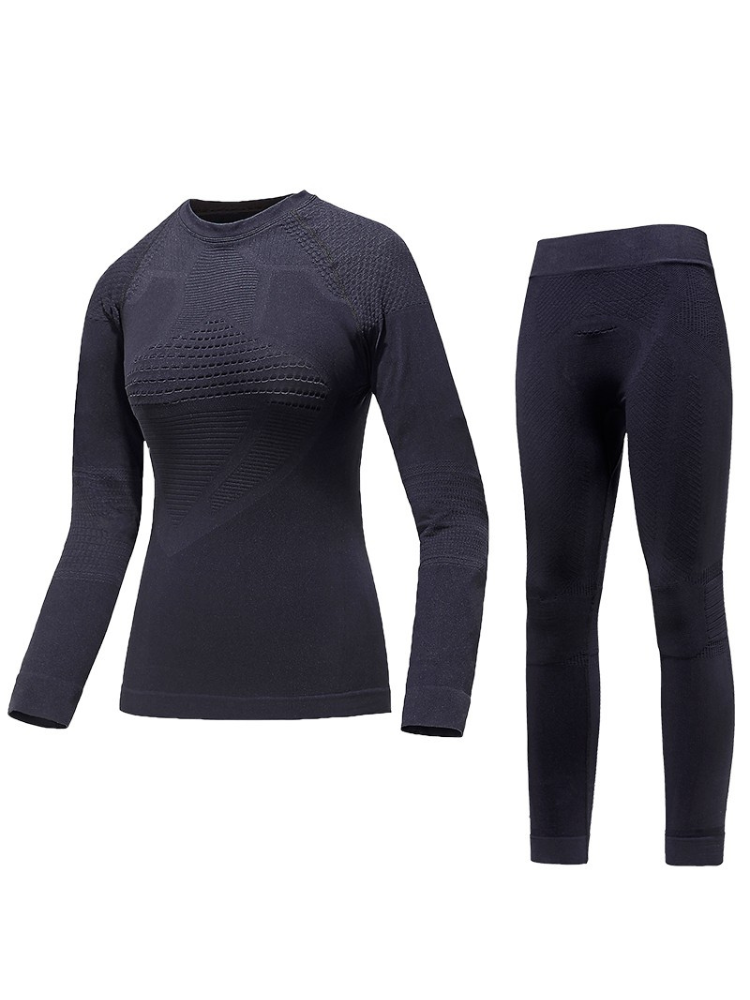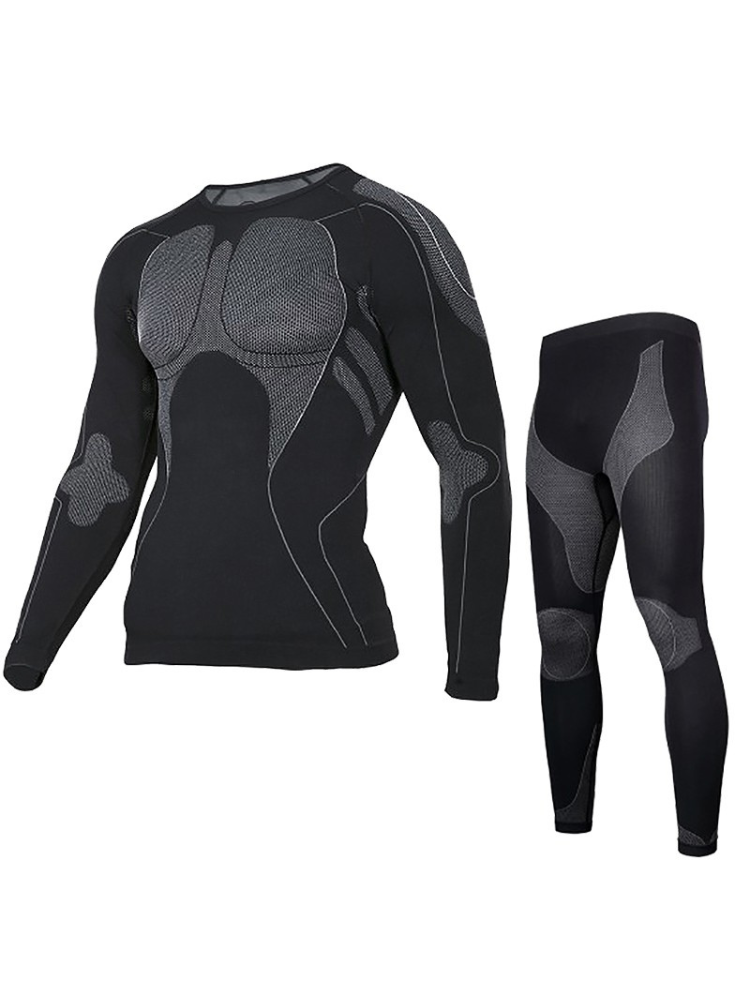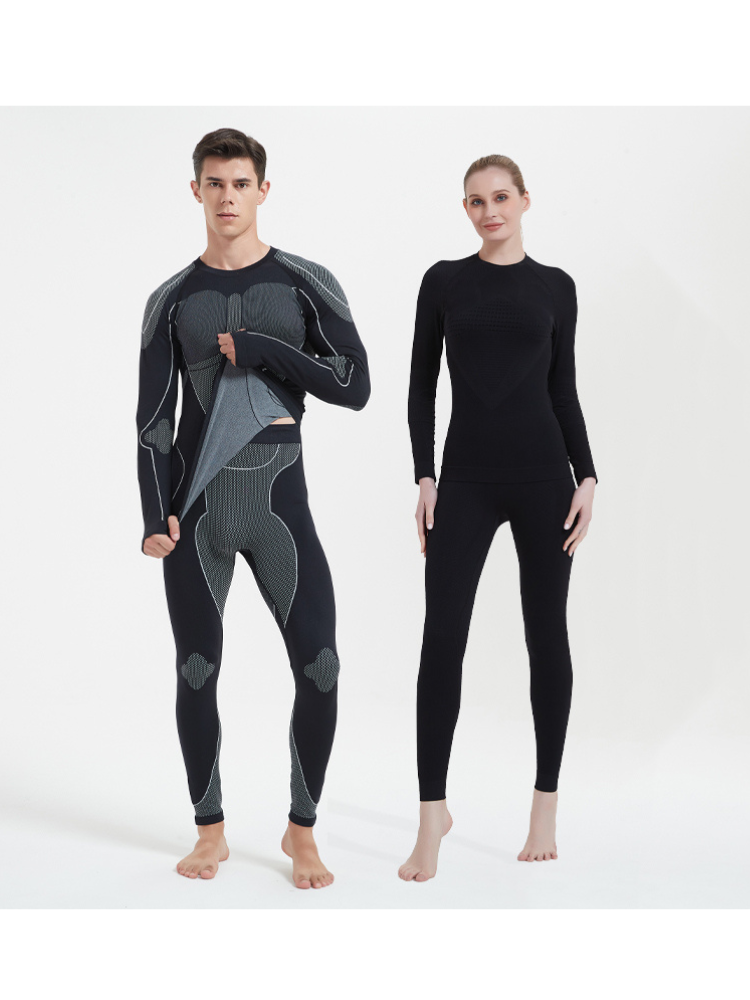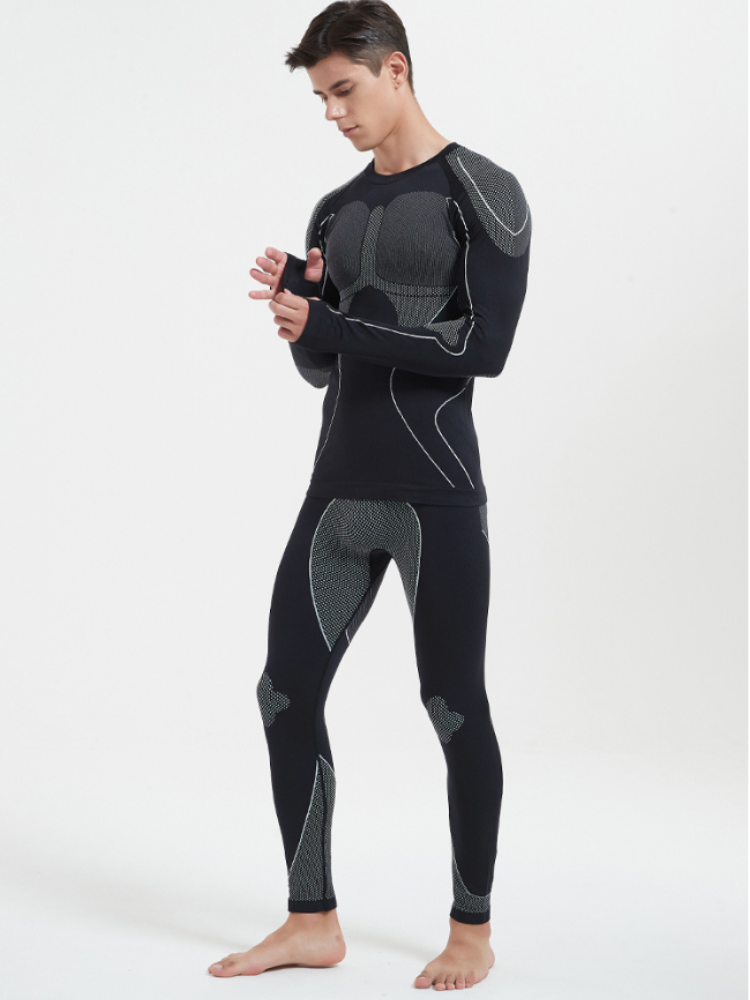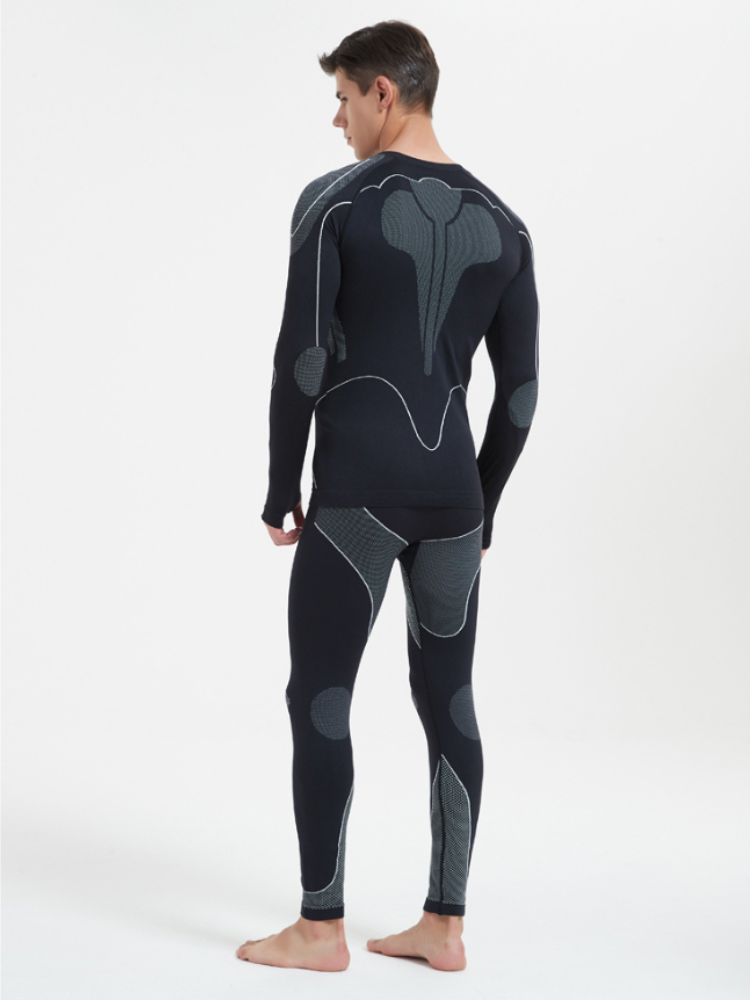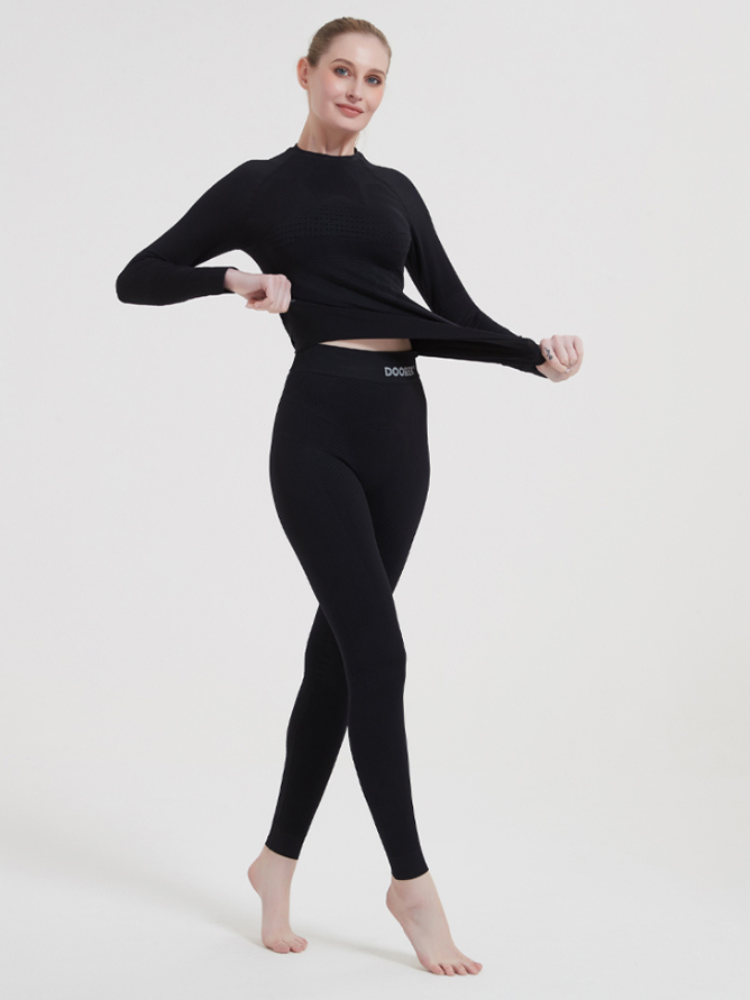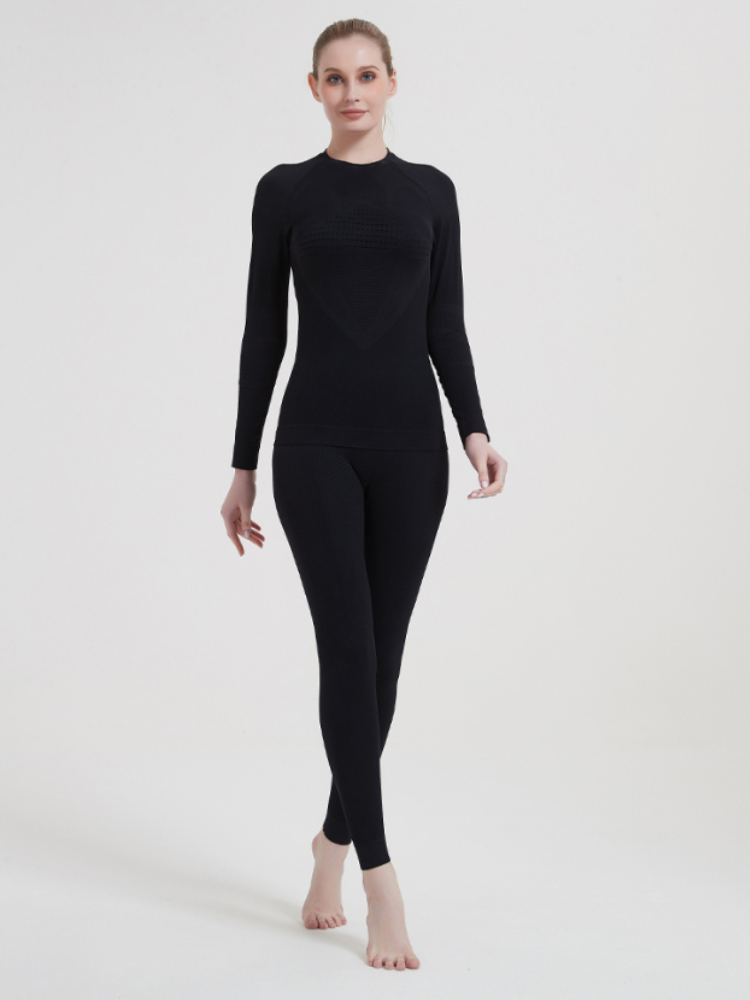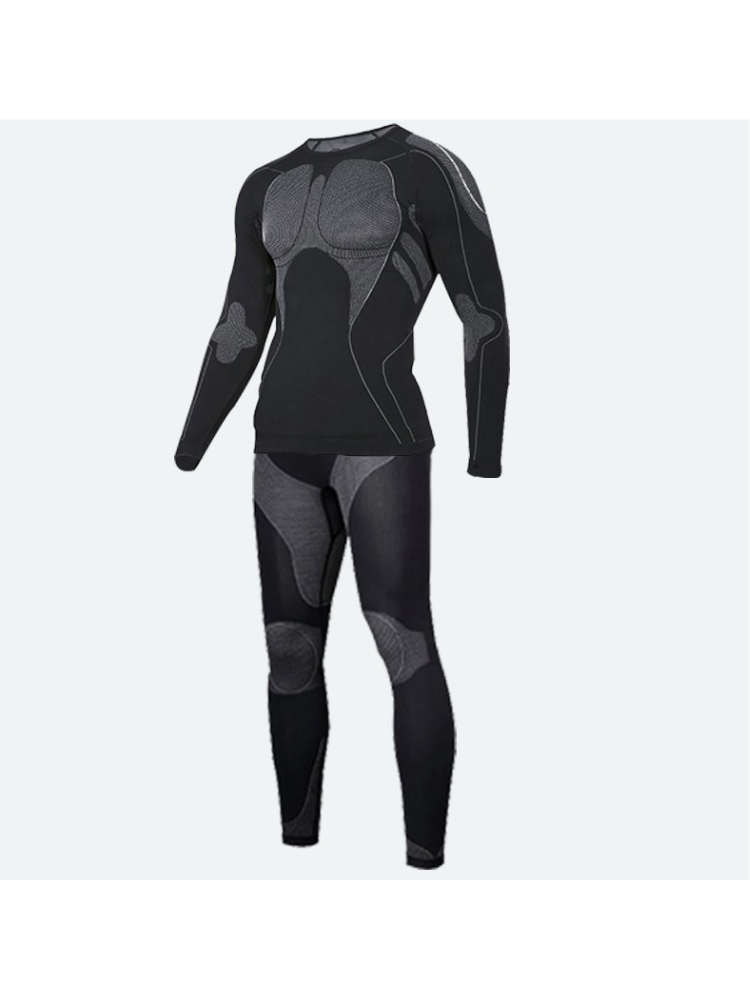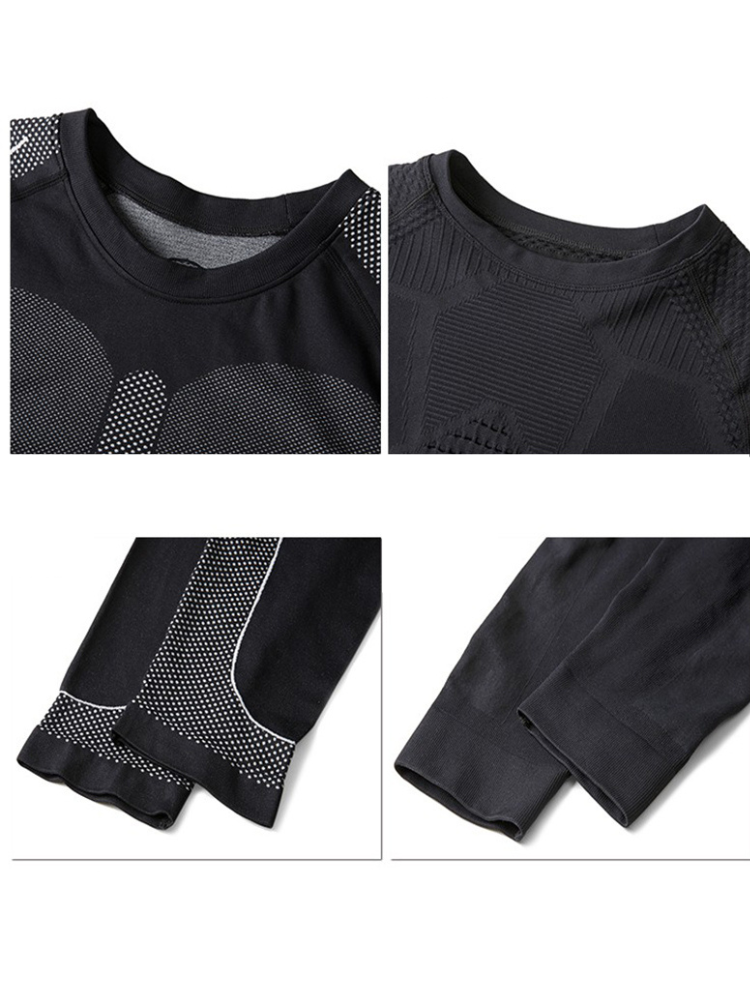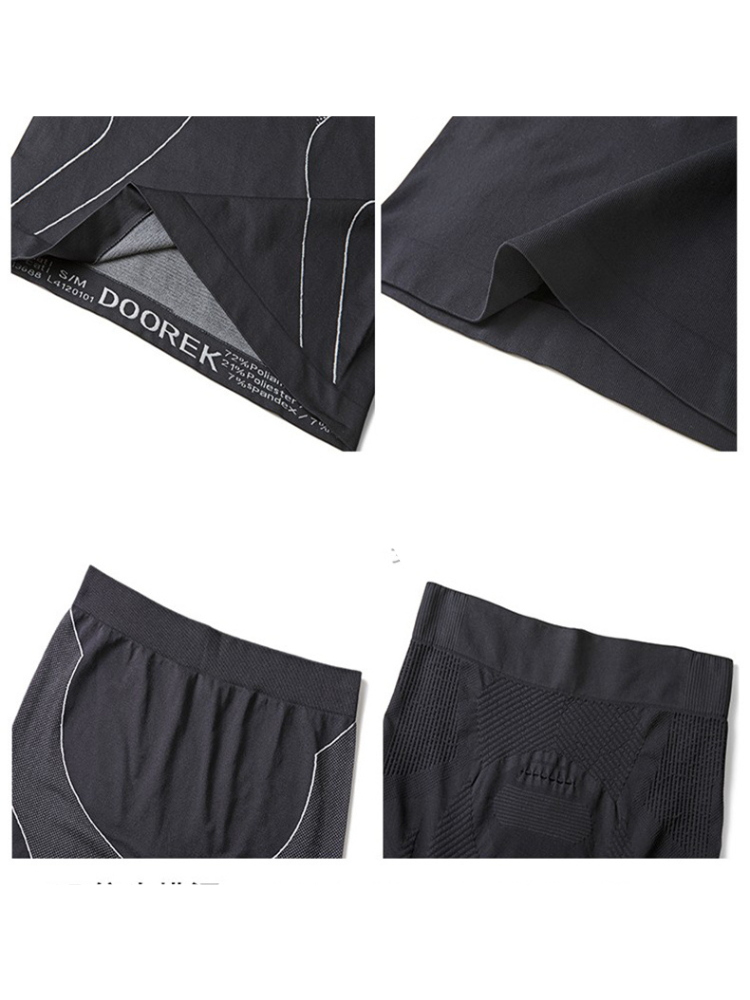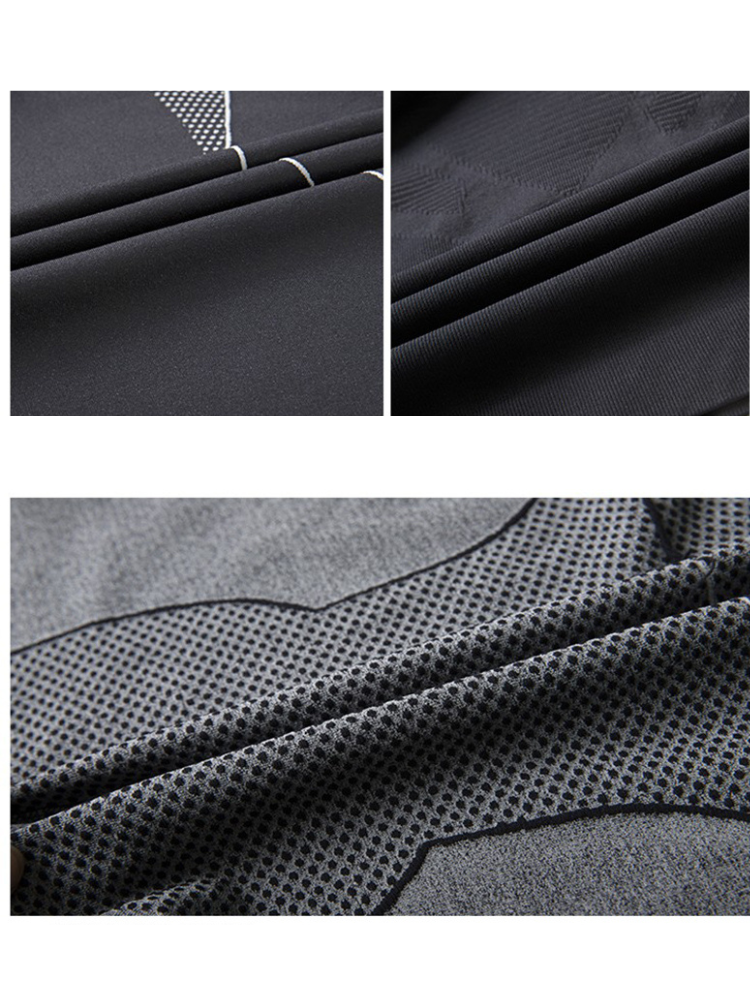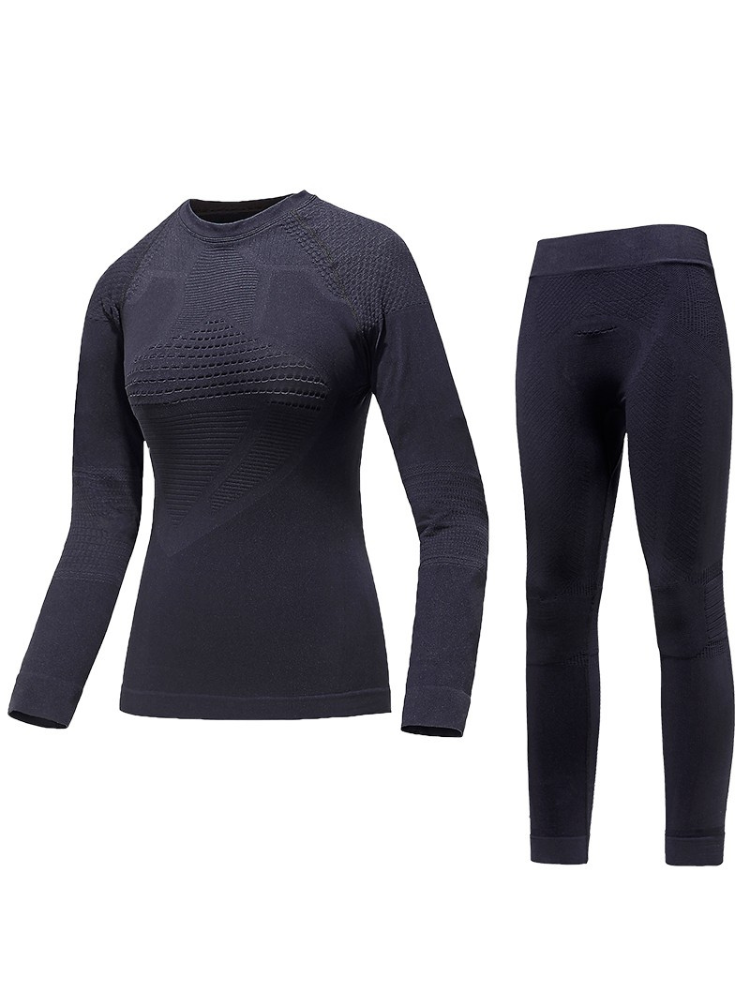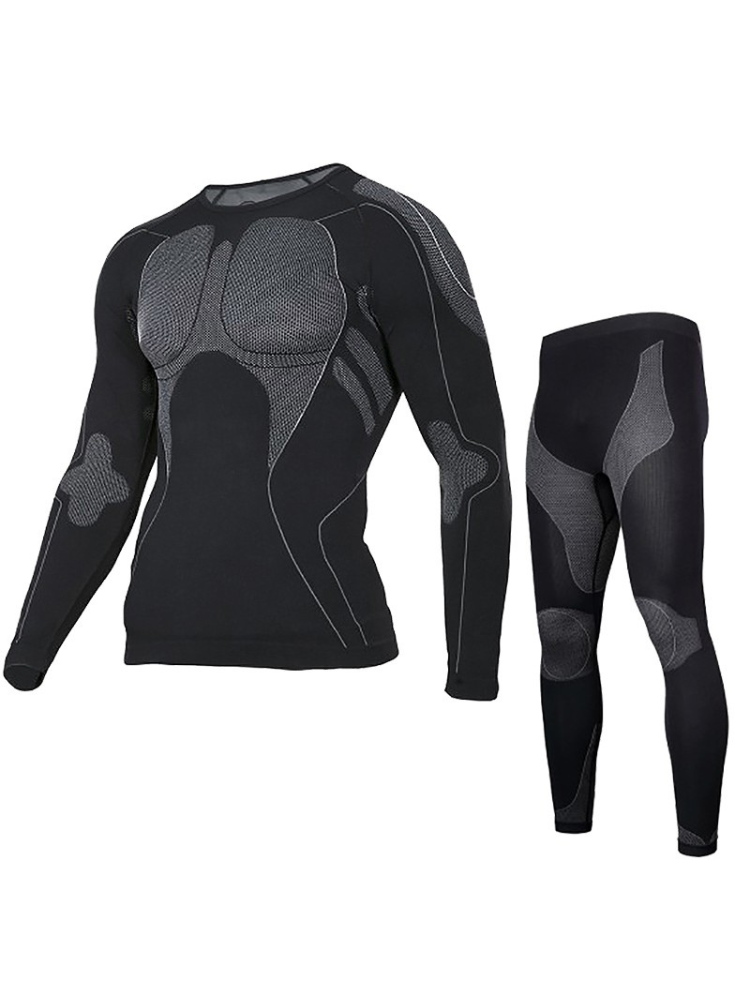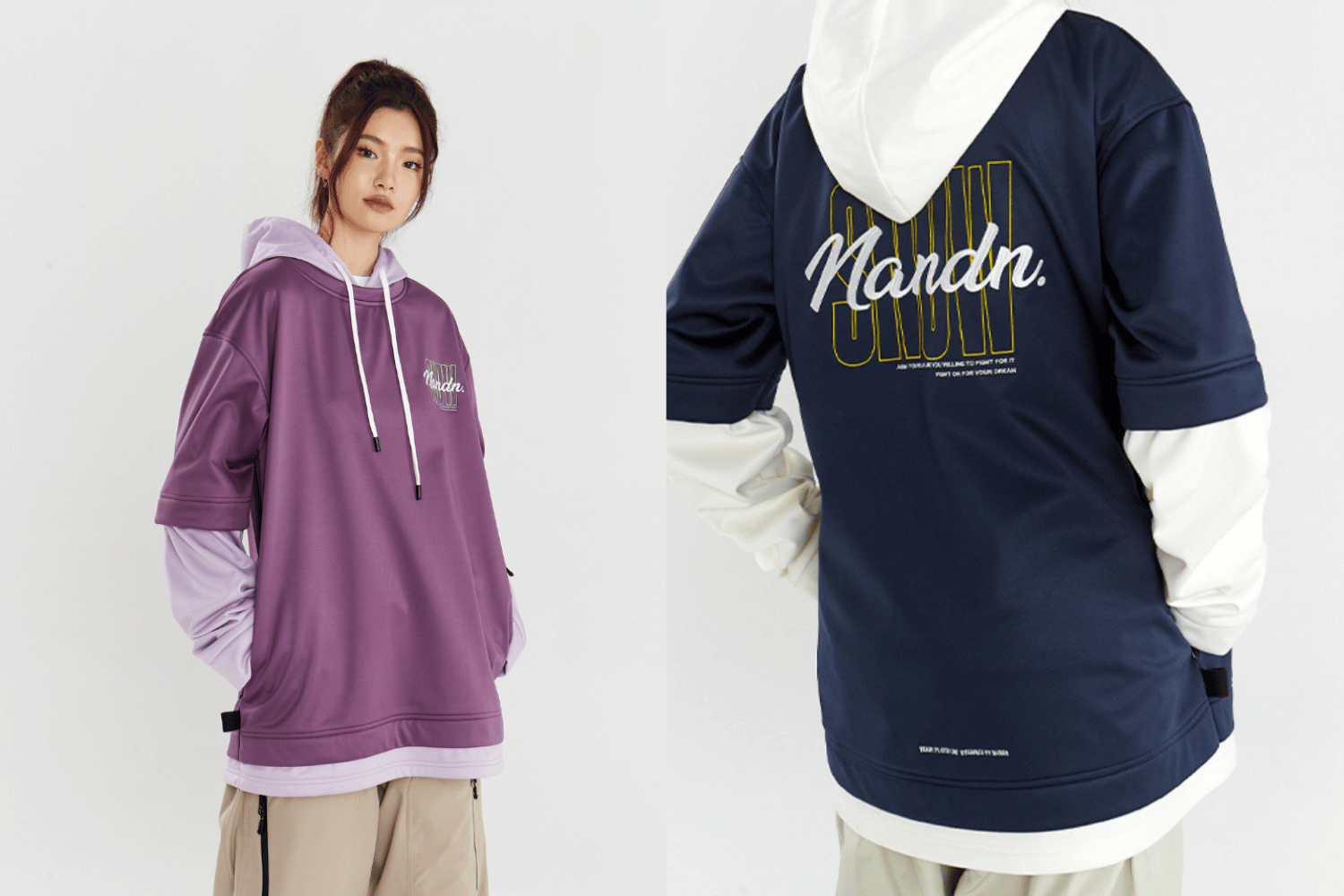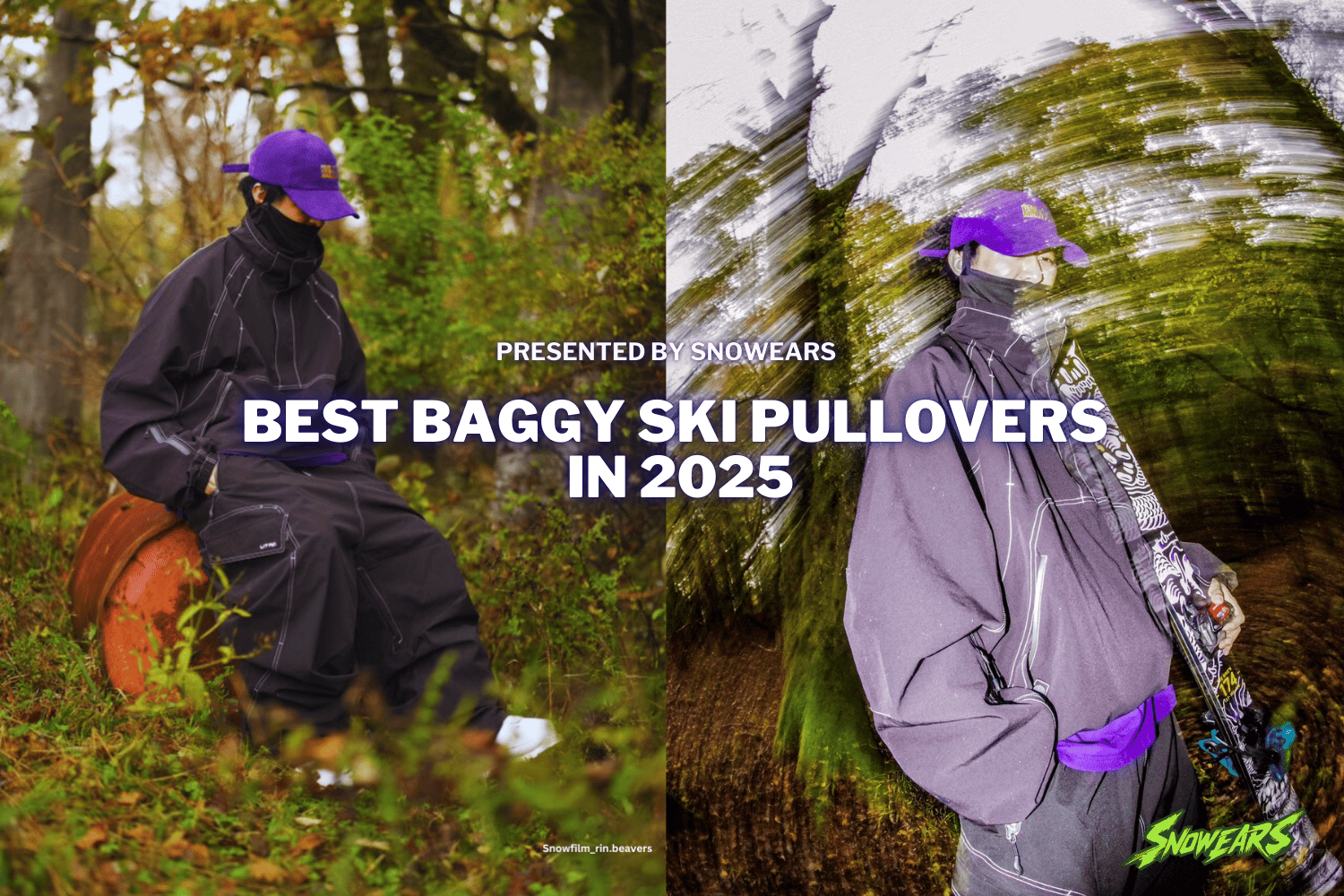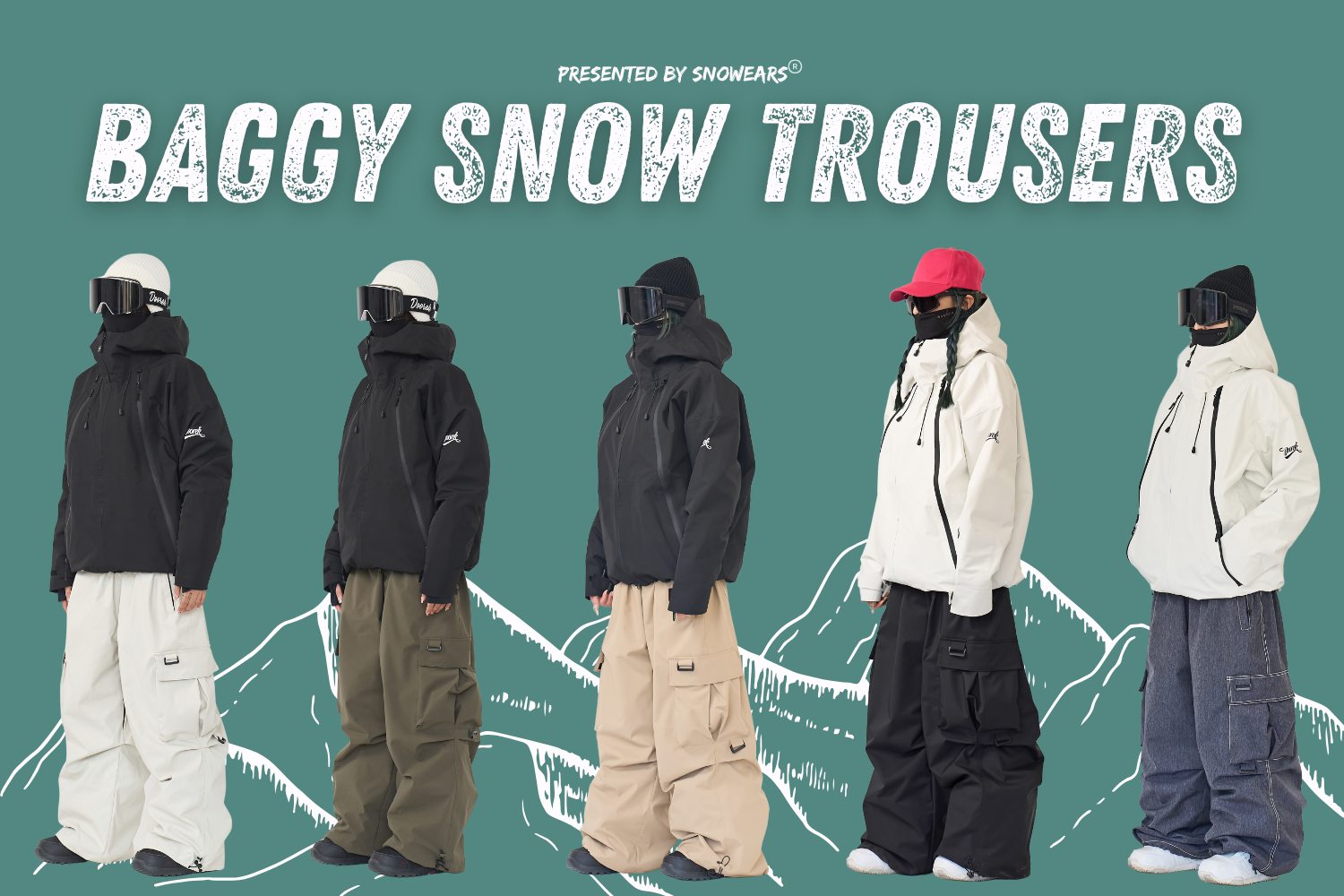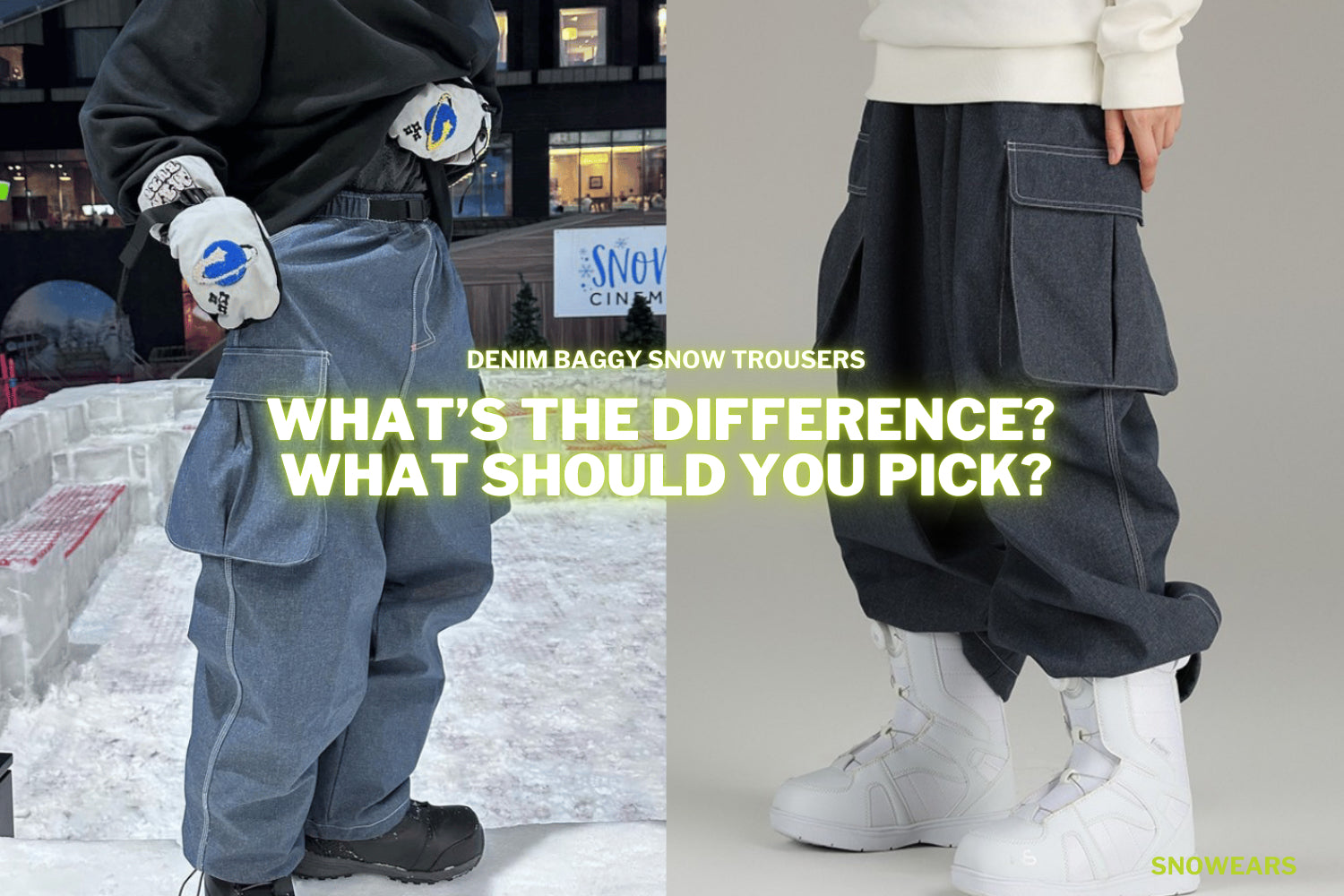Best Base Layers for Skiing, Snowboarding & Winter Adventures 2025
Cecilia Wong
August 20, 2025
Best Base Layers of 2025 | Snowears
Pre-intro
I tested 10 products and found NANDN Seamless Body-Hugging Base Layer to be the best overall base layer.
Intro
I’ve tested base layers through storm laps, spring slush, and everything in between. If it didn’t keep me warm, dry, and moving freely, it wouldn’t have made this list.
My top pick for 2025 is the NANDN Seamless Body-Hugging Base Layer (Women’s). It wins because of one thing: comfort that performs. The seamless design fits like a second skin—no bunching, no rubbing, no awkward seams digging in under your bibs. It’s stretchy enough to move with you on bootpacks, yet snug sufficient to trap warmth without overheating. And it dries fast, which matters when your morning run turns into a full send session.
That said, not everyone needs the same thing from a base layer. Some riders need lightweight layers for sweaty uphill missions. Others want ultra-warm options that feel like a cozy hug on windy lift rides. And then there’s the fabric factor—synthetic dries quicker, merino kills odor, and hybrids try to do both. So the “best” really depends on your body, your riding style, and your cold tolerance.
This guide covers the top performers for every type of skier and boarder, so you can pick the layer that works for you.Let’s find your go-to base for the season.
- Introduction
- Best Overall Product
- Best Budget Product
- Warmest
- Most Sustainable
- Most Durable
- Most Breathable
- Hot Style
- Low-cost
- Best Synthetic Base Layer
- Highly Versatile Base Layer
- What To Consider When Buying Base Layers?
- How Should I Size My Base Layer?
- Conclusion
Table of Content
#1 - Best Overall Product
NANDN Seamless Body-Hugging Base Layer - Women's
The NANDN Seamless Body-Hugging Base Layer (Women’s) is built for riders who refuse to compromise on next-to-skin comfort.
Featuring a premium Thermolite® hollow fiber core with a flexible, high-tech knit, it traps warmth while letting your body breathe under pressure. Its seamless Italian-engineered design eliminates chafing and hugs every curve without bunching, delivering a fit that’s supportive but never restrictive.
If you’re gunning for consistent heat retention, day-long comfort, and a truly “barely there” feel, this layer should be on your shortlist — though it may run too warm for bluebird spring missions.
Pros
- Seamless Italian weaving for irritation-free comfort
- Thermolite® hollow fiber retains heat while staying breathable
- Body-hugging fit moves with you, no shifting or bunching
- Lightweight yet surprisingly warm in harsh conditions
Cons
- May feel too toasty on warmer spring days
- A slightly tighter fit might not suit those who prefer a relaxed base
Detailed review
The NANDN Seamless Body-Hugging Base Layer is dialed for cold-weather missions when you need trustworthy heat, no-fuss layering, and freedom of movement. It's Thermolite® hollow fiber traps warmth in a featherweight profile, keeping you comfortable even when the mercury dips well below zero.
Thanks to Italian seamless weaving, you won’t find a single rough edge or itchy seam, which makes it disappear under your mid-layer or bibs.
Reliable warmth, buttery-soft comfort, and movement-friendly performance for cold resort days, but might feel too warm for spring laps.
Score: 4.8/5
I found it stays put, even during high-output moves like bootpacking or hiking for side hits, with no twisting or sagging. It runs fairly snug, hugging your shape like a supportive second skin — excellent for keeping warm air close, but maybe too toasty if you’re doing mellow spring laps.
Overall, it’s a powerhouse base layer designed to maximize warmth and comfort while giving you a polished, athletic fit. Perfect for riders who want one piece that can handle storm cycles without a single complaint.
#2 - Best Budget Product
High Experience Lightweight Base layer Set - Women's
The High Experience Lightweight Base Layer Set (Women’s) punches well above its price point. With a hybrid fabric blend that balances stretch, softness, and breathability, it delivers comfort that lasts through everything from frosty chairlift rides to fast-paced laps.
The next-to-skin fit traps heat efficiently without feeling restrictive, while the moisture-wicking fibers keep sweat from ruining your day. You’re not getting luxury merino here, but you’re also not paying for it.
What you are getting is a surprisingly capable, ride-ready base layer that works just as well on snow as it does for hiking, running, or lounging on recovery days.
Pros
- Lightweight and warm enough for all-day resort laps
- Hybrid materials wick moisture and dry fast
- Slim, flexible fit stays put under bibs and shells
- Great crossover piece for other cold-weather sports
Cons
- Not as warm as heavyweight merino for deep-freeze days
- Fabric may pill slightly after repeated wash cycles
Detailed review
The High Experience Lightweight Base Layer Set feels like the kind of gear you discover by accident — and then wear all season. It doesn’t have the premium buzzwords or $150+ price tag, but on-snow, it holds its own with confidence.
The hybrid fabric blend combines synthetic fibers that stretch, breathe, and dry quickly, making it ideal for moderate-to-high-output days.
All-season performance, smart construction, and serious value — perfect for everyday riders who want solid warmth without spending big.
Score: 4.6/5
The next-to-skin fit isn’t too tight — more “flattering athletic” than “compression sock.” It layers cleanly under everything from technical shells to loose-fit bibs, and the top’s longer hem keeps it from riding up.
While it won’t provide the same deep-freeze insulation as heavier options, it performs best in typical resort conditions: cold mornings, sunny afternoons, and everything in between.
Also worth noting: this set shines beyond the slopes. I’ve worn it on frosty dog walks, early gym warm-ups, and even to bed when temps dipped below freezing — no shame. If you’re after one base layer that works hard, feels good, and doesn’t dent your gear budget, this one’s a no-brainer.
#3 - Warmest
NANDN Women's ThermoLite Core Fabric Base Layer
The NANDN Women’s Thermolite® Core Fabric Base Layer is designed to perform when the temperature drops and your heart rate spikes.
It blends Thermolite® insulation for sustained warmth with Lycra® Smart Fusion fibers for elite stretch and recovery, making it ideal for riders who demand flexibility without sacrificing heat.
The taped seam construction and high-stretch fit give it an athletic feel, hugging the body like a second skin while still allowing for full mobility in deep-knee carves or technical climbs. If you ride hard and hate being cold, this layer delivers — especially on frigid storm days or dawn patrol missions.
Pros
- Thermolite® fibers retain heat without adding bulk
- Smart Fusion Lycra® blend offers excellent stretch and support
- Seam-taped design reduces rubbing and improves thermal efficiency
- Stays in place even during dynamic movement
Cons
- Runs snug — may not suit those who prefer looser-fitting layers
- It might be too warm for mild spring laps or indoor use
Detailed review
This base layer is not messing around. The Thermolite® Core Fabric does exactly what it promises — it traps heat and keeps it there, even when the wind picks up and the mercury dips into single digits.
It’s the kind of piece you’ll reach for when others just won’t cut it. But what sets this base apart isn’t just warmth — it’s how well it moves with you.Thanks to Lycra® Smart Fusion tech, the stretch is dynamic and responsive. It flexes with you while skinning up, dropping cliffs, or scrambling through bootpacks — and snaps right back into place without sagging or twisting.
The critically taped seams are a standout detail: they boost thermal efficiency and eliminate those annoying pressure points that show up mid-run.
Built for the coldest days and high-output rides — this one’s a powerhouse under pressure.
Score: 4.7/5
It does run fitted, which is great for heat retention and layering under shells, but if you prefer a looser feel, you might want to size up. And while it's built for action, it’s probably overkill for lounging or warm-weather riding.
Bottom line? This is a go-to performance base layer for women who ride in all conditions and want gear that keeps up, no matter how cold it gets.
#4 - Most Sustainable
Patagonia Capilene Thermal Weight Zip-Neck
The Patagonia Capilene Thermal Weight Zip-Neck delivers all-day comfort in a surprisingly light package.
With its grid-knit interior, this synthetic top traps just enough heat while letting sweat escape—ideal for fast-paced ski tours, chilly hikes, and early starts at the resort. It’s cozy, odor-resistant, and impressively breathable.
That said, it won’t win any awards for insulation, and for a synthetic, it isn’t cheap.

Pros
- Versatile warmth that works well whether you’re moving or resting
- Breathes exceptionally well thanks to its airy grid fleece
- HeiQ Pure treatment helps it stay stink-free for days
- Smooth next-to-skin feel—no itch, no clinging
Cons
- Can’t match the natural warmth of merino wool
- Pricey for a non-wool base layer
Detailed review
Despite the “thermal” name, this Capilene layer skews midweight at best—but in a good way. It’s a go-to for dynamic days in the mountains when you need a layer that breathes but still holds onto some warmth.
Patagonia’s signature grid fleece traps body heat without cooking you on skintracks or sunny ridgelines. And on cold lift rides, it layers seamlessly under a midlayer or shell.
A breathable workhorse for cold-weather layering that punches above its weight—if you don’t need full-on merino warmth.
Score: 3.7/5
We’ve worn this piece on everything from long ski tours to early-spring alpine climbs. One tester kept it on for a full day climbing Mt.
Stuart—no joke, never took it off. That sums it up: warm enough, light enough, and barely noticeable. Durability has held up, too—minor pilling at the cuffs is the worst we’ve seen after multiple seasons.
If you’re after a simple, high-performing synthetic that won’t bog you down or stink after a few wears, this one earns its keep. Just don’t expect merino-like warmth.
#5 - Most Durable
NW Alpine Black Spider Hoody
With its tough-as-nails Polartec Power Grid fabric, helmet-compatible hood, and streamlined alpine fit, the NW Alpine Black Spider Hoody is one of the most hardwearing base layers out there. It thrives on technical rock and mixed routes where abrasion resistance matters most.
while it breathes well and dries fast, the polyester construction isn’t the softest next to skin—especially after heavy use—and the price tag sits higher than most synthetics.

Pros
- Burly face fabric shrugs off sharp rock and pack abrasion
- Features like chest pocket and thumb slots boost standalone utility
- Breathes well and dries faster than merino
- Stays fresher than many synthetics over multi-day use
Cons
- Lacks the plush feel of merino or softer blends
- Expensive for a polyester base layer
Detailed review
The Black Spider Hoody was built with climbers in mind—and it shows. The Polartec Power Grid fabric balances warmth and airflow with a soft microgrid interior and a hard-faced outer that resists abrasion from harnesses, chimneys, and granite slabs.
Features like an under-helmet hood, thumbholes, and a zip chest pocket give it true standalone versatility, whether you’re cragging in the shade or layering for a big alpine push.
Built to take a beating on rock, ice, and alpine missions, the NW Alpine Black Spider Hoody delivers unmatched durability, but at the cost of softness and price.
Score: 3.4/5
Over the years, ours have seen hundreds of pitches and countless stuffed pack rides—yet aside from a few patches and pilling, they’re still going strong.
This thing is tough. And while it doesn’t deliver merino-level warmth or luxury, it dries fast and holds off stink better than most synthetics in its class.The fit is relaxed without being baggy, and longer sleeves and hem mean full coverage under a harness or shell.
We reach for the Black Spider on shoulder-season climbing days, or as a breathable midweight under a wind shell high in the mountains. It’s a layer you’ll forget about until everything else fails—and that’s exactly the point.
#6 - Most Breathable
Doorek Lightweight Base Layer
The Doorek Lightweight Base Layer is built for riders who run warm, move fast, or just hate that swampy base-layer feel. Featuring advanced honeycomb ventilation zones and a lightweight, quick-drying fabric blend, it delivers impressive thermal regulation without the bulk.
Where many warm layers trap heat until you melt, this one actively dumps excess warmth while keeping your core toasty. With a four-way stretch design that feels more like activewear than traditional long underwear, it’s the ideal layer for resort skiers, backcountry tourers, and anyone who wants heat without the sweat.
Pros
- Honeycomb ventilation zones balance warmth and airflow
- Quick-drying fabric keeps sweat under control
- Lightweight feel that doesn’t sacrifice core insulation
- High elasticity provides unrestricted movement all day
Cons
- Not warm enough for extreme cold or low-activity days
- Minimal compression — may feel too relaxed for some
Detailed review
If you’ve ever overheated halfway through your first run, this base layer’s for you. The Doorek Lightweight Base Layer is all about balance — keeping your body warm without turning into a sweat lodge. The honeycomb ventilation is the real star here. Strategically placed around key heat zones, it lets air flow where you need it most while maintaining a consistent base-level warmth.
The fabric is ultra-light and silky smooth, which makes it a dream to wear under a shell or mid-layer. There’s plenty of stretch in every direction, so whether you're hiking for turns or stretching into a pre-run warmup, it stays comfortable without bunching or sagging.
Exceptional heat control with breathability dialed in — perfect for high-output riders who overheat in traditional base layers.
Score: 4.7/5
That said, it’s not built for bone-chilling days when you're standing still. On mellow rides or bitter-cold lift laps, you might want something with more insulation. But if you’re chasing powder, skinning uphill, or just tend to run hot, this base layer keeps you in the comfort zone from first chair to last run.
It's a standout for high-output skiers and snowboarders who need breathability without sacrificing performance. Lightweight, technical, and ride-ready — this one earns its place in any serious layering system.
#7 - Hot Style
BCG Sailor Moon Purple Ski Base Layer
The BCG Sailor Moon Purple Ski Base Layer isn’t just a nod to anime nostalgia — it’s a functional, flexible base layer built for skiers who want to stand out without sacrificing performance.
Designed with a striking sailor-inspired silhouette, it blends pop-culture energy with snow-ready practicality. The fabric is soft, breathable, and moves naturally with your body, while the slim cut layers easily under shells or bibs.
It’s more than just a novelty — it’s a legit option for riders who want equal parts flair and function.
Pros
- Eye-catching design with real on-snow personality
- Stretchy, breathable materials are great for layering
- Smooth, soft-touch fabric feels great all day
- Slim fit stays in place without bunching or riding up
Cons
- Not as warm as technical merino or insulated options
- Style-first design won’t be everyone’s cup of tea
Detailed review
Let’s get one thing out of the way: the BCG Sailor Moon Base Layer is unapologetically bold. With its vivid purple tones and anime-inspired design, this isn’t your standard stealthy black base layer — and that’s exactly the point. It adds character to your kit and lets you bring a bit of magic to the mountain, without compromising on comfort.
That said, this piece isn’t just about looks. The fabric is impressively soft and flexible, offering the kind of four-way stretch that keeps you mobile during everything from park laps to powder stashes. It’s breathable enough for high-output riding and sits comfortably against the skin with minimal chafing.
It doesn’t pack the insulation of heavyweight merino, but it holds its own as a midweight option, especially on typical resort days.
Surprisingly functional for a statement piece — stylish enough to turn heads, technical enough to hold its own.
Score: 4.6/5
Functionally, it layers well under technical shells thanks to its slim fit and smooth finish. But where it truly shines is après. Toss off your jacket, and you’ve got the most talked-about outfit at the bar — guaranteed.
If you’re the type who rides hard but doesn’t take yourself too seriously, this base layer lets you do both. Form meets function — with flair.
#8 - Low-cost
Ridge Merino Aspect Midweight Merino
The Ridge Merino Aspect Midweight Long Sleeve offers standout value with its soft 180g merino-nylon blend, tailored fit, and thoughtful features like thumb loops and a drop hem. It hits a sweet spot for resort days and casual winter wear, offering excellent comfort, odor control, and a polished look.
That said, the merino build can run hot during high-output climbs, and limited inventory makes it hard to find in peak season.

Pros
- Premium merino quality at a friendlier price than top-tier brands
- 180g midweight strikes a great balance for cold-but-not-frigid conditions
- Classy design with long cut, discrete thumb loops, and flatlock seams
Cons
- Can overheat during extended uphill use
- Frequently out of stock, especially in core sizes
Detailed review
The Ridge Merino Aspect Midweight Long Sleeve is one of the few merino base layers that blends top-shelf material feel with down-to-earth pricing.
Built from a 180g merino-nylon blend, it offers a cozy, flattering fit that feels smooth against skin and resists odor far better than most synthetics. Nylon threads reinforce the structure without compromising softness, and they help the fabric dry faster after sweaty lift laps or mild skin tracks.
Design-wise, it’s sleek and thoughtful: thumb loops tuck in cleanly, flatlock seams eliminate rub points, and the drop hem keeps you covered under a pack. While not the warmest or most breathable layer on the market, it shines as a do-it-all top for skiing, layering, or lounging, especially for the price.
An impressively priced merino base layer with clean styling and everyday versatility, but not ideal for sustained uphill work.
Score: 3.2/5
That said, it’s not a peak-performance piece for big uphill days. The mostly merino construction can run warm under sustained effort, and Ridge’s small-batch production model means your size might be gone mid-season.
Still, when it’s in stock, this layer offers better value than many options double its price, and feels every bit as refined.
#9 - Best Synthetic Base Layer
Patagonia Capilene Midweight Crewneck
The Patagonia Capilene Midweight Crewneck is a long-time synthetic staple—and for good reason. Made from 100% recycled polyester with a smooth face for layering and a brushed grid interior for warmth, it offers a lightweight yet efficient solution for skiers, climbers, and hikers alike.
It breathes well, dries fast, and costs less than merino—making it a solid go-to for high-output days in variable conditions. Still, its stiffer fit and limited odor resistance hold it back from top-tier status.

Pros
- Breathes better than most merino options
- More durable and budget-friendly than wool alternatives
- Thoughtful details like thumb loops and underarm gussets
Cons
- Lacks the softness and stretch of wool blends
- Odor builds faster despite the HeiQ Fresh treatment
- Fit can feel boxy or restrictive for some body types
Detailed review
If you’re looking for a high-performing synthetic base layer without diving into merino prices, Patagonia’s Capilene Midweight Crewneck hits a sweet spot. The grid-knit interior traps warmth without overheating, while the smooth outer face slides easily under midlayers or shells.
It’s especially solid for stop-and-go missions—like backcountry skiing or winter hiking—where sweat management matters.Unlike many poly tops, the Capilene doesn’t feel plasticky or slick. Patagonia added underarm gussets to preserve mobility and kept the seams flat for all-day comfort.
You’ll also find low-profile thumb loops and a soft brushed interior that makes it warmer than its weight suggests.
A dependable synthetic base layer that punches above its weight in breathability and durability, but lacks the comfort and odor control of merino.
Score: 3.3/5
Where it falls short is in stretch and stink resistance. The 100% polyester fabric lacks the give of blended knits, and despite Patagonia’s anti-odor tech, it doesn’t stay as fresh as merino. Fit quirks—tight in the torso, short in the arms—were another consistent note in testing.
Still, for $89 and with recycled materials and Fair Trade stitching, it’s hard to knock the Capilene’s value. It remains a standout synthetic option for active use in cold climates—if the fit works for your frame.
#10 - Highly Versatile Base Layer
Cosone Long Sleeve Base Layer
The Cosone Long Sleeve Base Layer strikes a rare balance between performance and everyday style. Built with a quick-dry, stretch-infused fabric that’s both warm and breathable, it’s engineered for action on the slopes — yet polished enough to wear straight into après or urban settings.
This is the kind of piece that looks like lifestyle apparel but acts like true gear. Slim-fitting and subtly sculpted, it layers cleanly under jackets while offering just enough warmth for cold-weather commutes, lodge lounges, or travel days.
Pros
- Slope-tested functionality with streetwear aesthetics
- Fast-drying and breathable fabric keeps you warm without overheating
- Body-hugging silhouette flatters and moves effortlessly
- Versatile enough for travel, skiing, or day-to-day layering
Cons
- Not ideal as a standalone layer in frigid alpine temps
- Style-focused cut may feel tight on broader builds
Detailed review
The Cosone Long Sleeve Base Layer is the kind of gear that quietly becomes a staple. On the surface, it’s sleek, minimal, and flattering — but under the hood, it’s designed to handle full winter days. The fabric wicks moisture fast and dries quickly after high-output riding, making it an ideal next-to-skin layer for both resort skiing and travel.
Its real superpower, though, is versatility. The cut is athletic but fashion-forward, with enough polish to wear solo once the jackets come off. Whether you're walking through the lodge, heading into town, or hopping a flight after a day on the hill, this piece just works.
Effortlessly transitions from powder laps to city strolls — cozy, flattering, and surprisingly technical.
Score: 4.7/5
It won’t replace heavyweight merino when temps dip below zero, but that’s not what it’s built for. This is the base layer for modern riders who value function, freedom, and everyday wearability.
If your winter wardrobe needs something that moves with you — from first chair to last call — Cosone delivers.
What To Consider When Buying Base Layers?
Choosing the right base layer might seem simple, but it’s one of the most important gear decisions you’ll make. With so many fabrics, fits, and features out there, it’s easy to grab something that looks good, only to find it doesn’t breathe, bunches under your jacket, or smells halfway through day one.
That’s why we go beyond the product page. We wear-test every base layer in real alpine conditions—from stormy chairlift days to sweaty spring tours and even après-ski coffee stops. Our goal? To see how each one performs when the temp drops and the terrain gets serious.
Below, we break down the key testing metrics we use to separate the great from the gimmicky, so you’ll know what to look for before you hit “add to cart.” Whether you're building your first layering system or upgrading your winter staples, this guide is here to help.
Overall
Our overall score is a holistic measure that balances price, construction, on-mountain performance, durability, sustainability, and more.
At the top end, you’ll find base layers that deliver standout quality, whether that’s a technical merino piece built for deep-winter days or a budget-friendly synthetic that punches well above its weight.

We recommend prioritizing base layers with an above-average overall rating. They consistently offer better value and performance. That said, lower-rated models still earned their place here; they may cater to occasional riders, specific fit preferences, or casual resort days.
Warm
Warmth ratings reflect insulation relative to activity level and temperatures. Heavyweight merino is ideal for freezing resort laps or low-output outings, but it runs hot and dries slowly.

Midweight options—merino, synthetic, or blends—strike the best balance across conditions. Lightweight base layers are lean, breathable, and best for spring laps, layering under midlayers, or cool-weather adventures.
4-5
Heavyweight merino in the 200–250 g/m² range. Great for sub-20°F days with low movement. Resort-ready.
2.5-3.5
Midweight synthetics, blends, or merino around 150–200 g/m². Best for dynamic days on snow, hiking, or shoulder season layering.
0-2
Lightweight polyester or thin merino under 150 g/m². Best for spring skiing, aerobic touring, or breezy summer evenings.
Breathability
If your base layer can’t breathe, your layering system falls apart. This score reflects how well a piece vents heat and wicks moisture. Synthetic fabrics usually lead here—they’re lighter, dry faster, and excel at high-output activities.
All-merino pieces, while cozy, tend to run hot. Still, some hybrid designs sneak in with smart ventilation panels and strategic fabric mapping.

4-5
Ultra-breathable synthetics or vented merino blends. Ideal for ski touring, running, or warm-weather layering.
2.5-3.5
Moderate breathability. Suitable for groomer days, cold-weather hikes, or slower ski laps. Often 100% merino.
0-2
Low breathability. Thick fabrics that trap heat. Best for basecamp lounging or low-effort winter days.
Durability
Base layer longevity comes down to fabric makeup. Merino is soft but prone to wear, especially when thin or used solo. Add synthetics like nylon or polyester, and you boost resilience. Full-synthetic models tend to hold up best over time.
Just remember: no base layer is meant to take the same abuse as your outerwear.

4-5
Tough synthetics or reinforced merino blends. Withstand abrasion and work well-worn alone.
2.5-3.5
Midweight blends or durable merino. Reasonably strong but better suited to layering than solo wear.
0-2
Delicate merino prone to thinning, especially at stress points. Best kept under outer layers.
Comfort
This score accounts for both next-to-skin feel and freedom of movement. Merino usually takes the win for softness, though some synthetics are catching up.
Extra stretch, articulated seams, and a good fit can dramatically improve comfort, especially if you're skiing hard or moving fast in the backcountry.

4-5
Exceptionally soft feel and great mobility. Usually high-end merino with thoughtful design.
2.5-3.5
Decent softness or stretch, but may have minor drawbacks like chafing seams or inconsistent fit.
0-2
Stiff, scratchy, or poorly cut. Not ideal for long days or high-output use.
Odor Resistance
If you sweat, you’ll care about this. Merino naturally resists odor, even after multiple wears. Synthetics, unless treated with odor-fighting tech, tend to trap smells fast.
We also weigh how long the fabric stays fresh between washes—key for travel, hut trips, or back-to-back days on snow.

4-5
Top-tier odor control. Usually all-merino and wearable for days without stink.
2.5-3.5
Treated synthetics or blends. Good for single-day use, but freshness fades quickly.
0-2
No odor resistance. Smells almost instantly after wear, even if freshly washed.
Sustainability
This score looks at both the product and the brand behind it. We award points for recycled content, Bluesign-approved materials, Fair Trade certifications, and responsibly sourced merino.
At the brand level, we reward companies with resale programs, transparent impact reporting, or net-zero goals. Our ratings reflect the depth of commitment, not just the presence of buzzwords.

4-5
Market leaders in sustainability. Often meet 5+ key criteria and earn our Better Trail Certified badge.
2.5-3.5
Solid eco-effort. Meet some but not all standards. A step in the right direction.
0-2
Minimal or unclear sustainability practices. Lots of room to improve.
People Also Read
How Should I Size My Base Layer?
Base layers are designed to fit close to the body, essentially acting as a second skin to trap warmth and wick away moisture. But “trim fit” can mean different things depending on the cut and fabric.
Some base layers cling tight for that locked-in feel, while others sit a little looser without sacrificing performance. A quick way to tell? Check the fabric blend. If it includes elastane or spandex, it likely hugs more than hangs.
If you prefer a bit of breathing room or plan to wear it casually, sizing up might be the smarter move.We tend to lean toward slightly looser fits when wearing a base layer solo, whether hiking, touring, or just hanging around the lodge.
They're easier to move in and more likely to stay tucked. That said, snugger styles wick sweat more efficiently. The difference is subtle, though. Ultimately, your call will come down to personal comfort and intended use.
Conclusion
After testing a wide range of women’s base layers across warmth, breathability, fit, and versatility, the NANDN Seamless Body-Hugging Base Layer stands out as our top pick for 2025.
It nails the balance between performance and comfort, offering four-way stretch, seamless construction, and quick-dry warmth that adapts to everything from icy lift laps to après strolls. It’s the layer we reached for most often—whether we were charging groomers or lounging fireside.
If you're investing in just one base layer this season, make it this one. It delivers a premium feel, reliable warmth, and flattering style without sacrificing function.
FAQs
Have Any Questions?
We are here to answer all of your queries



